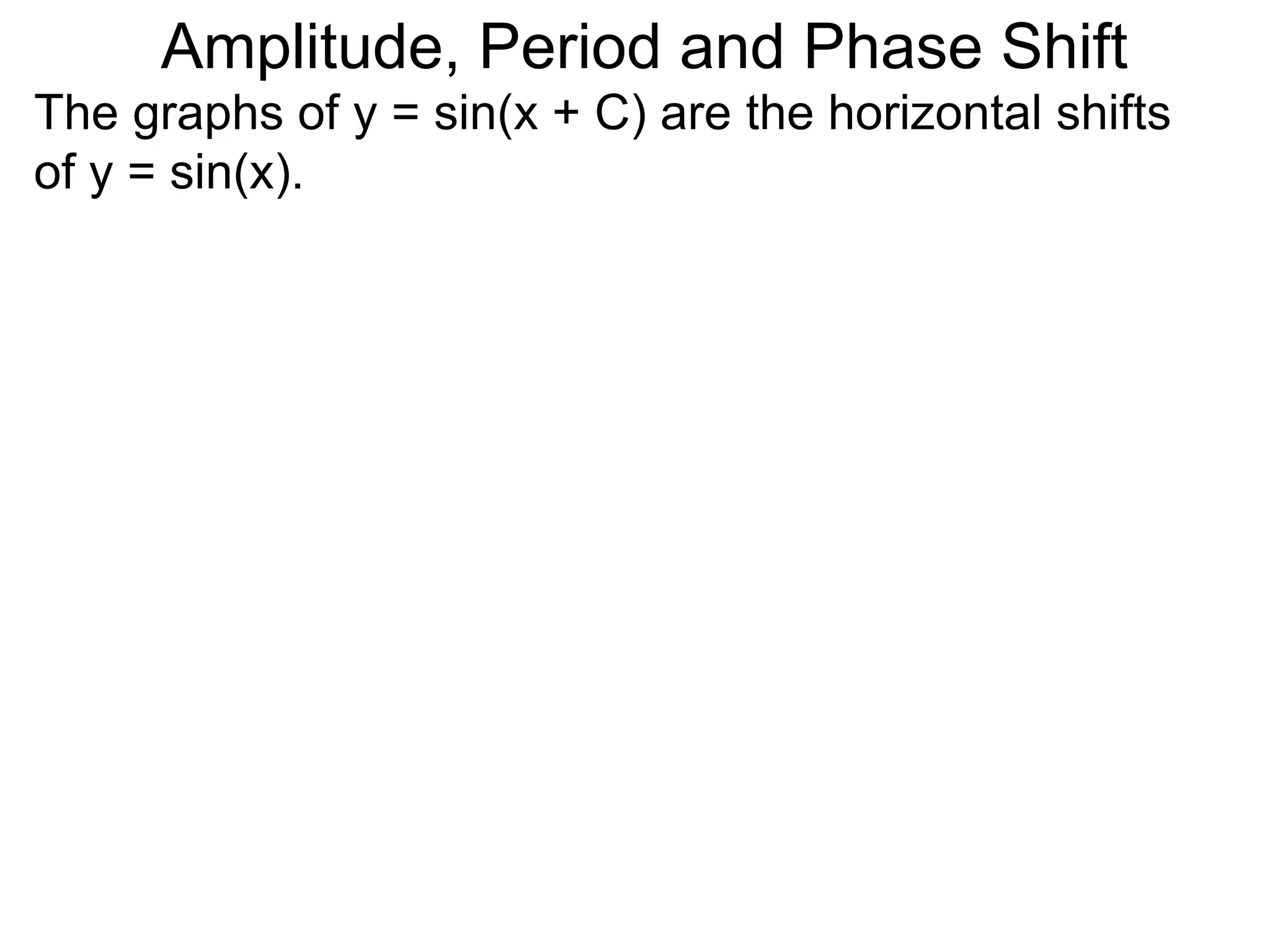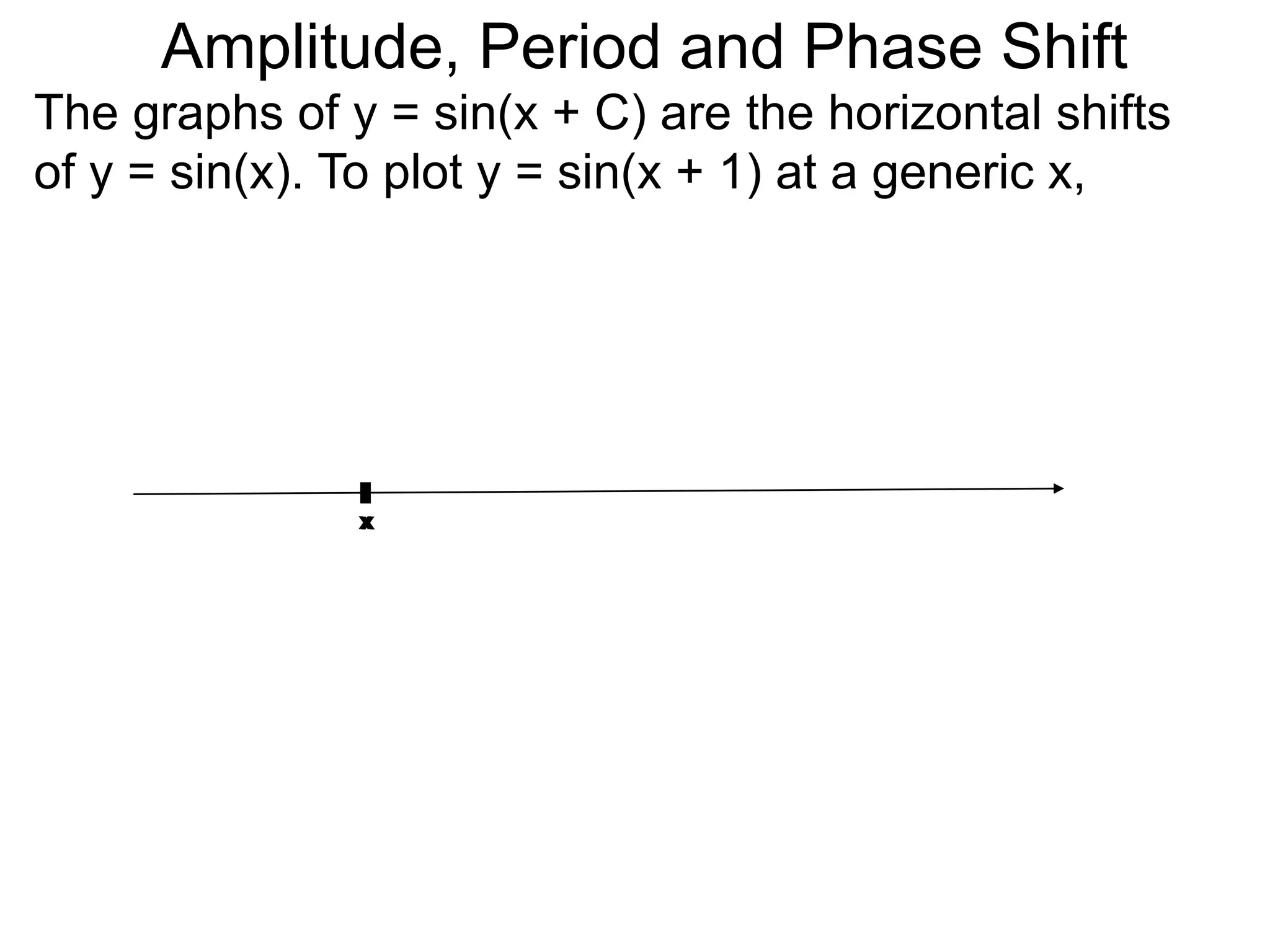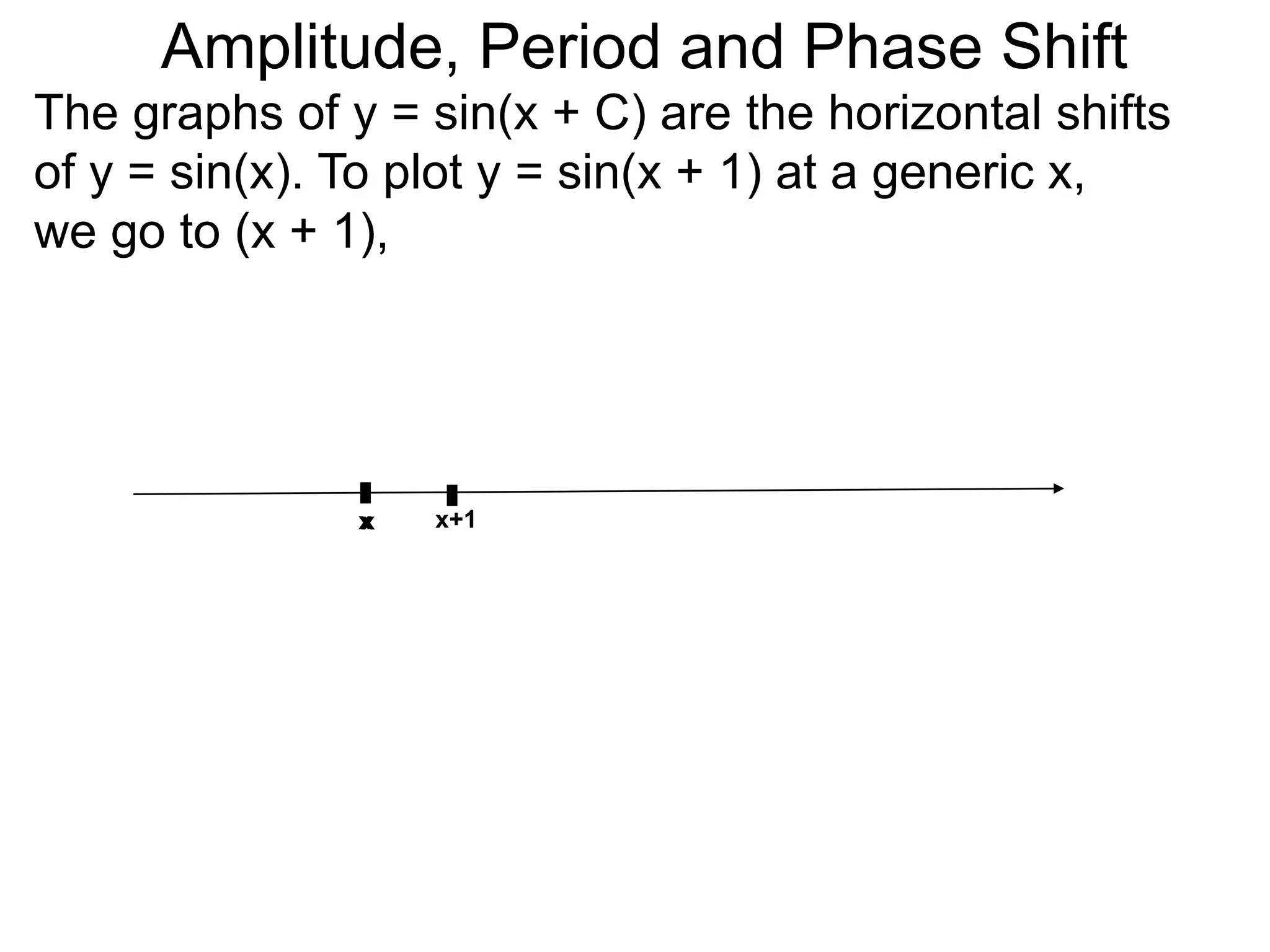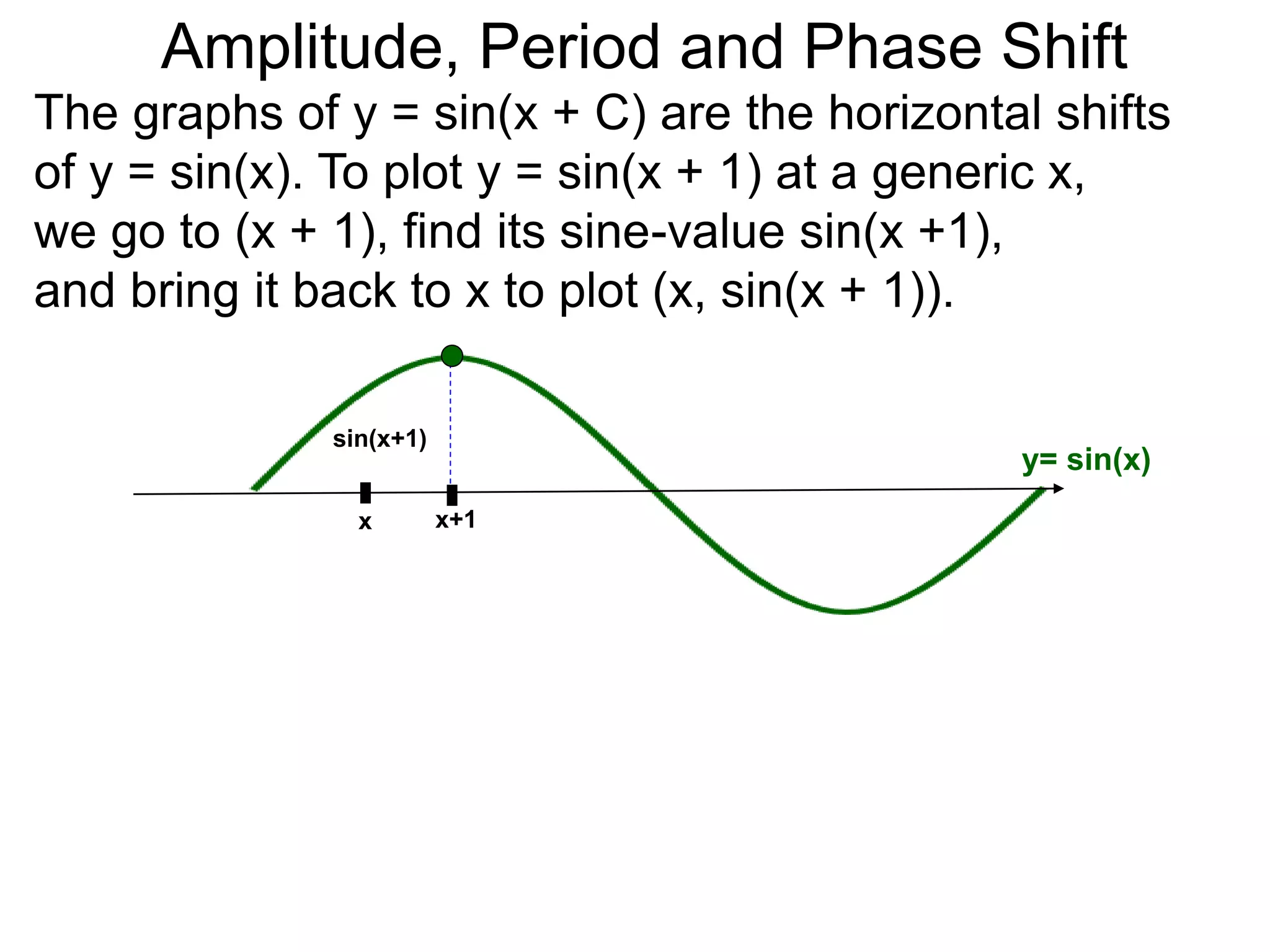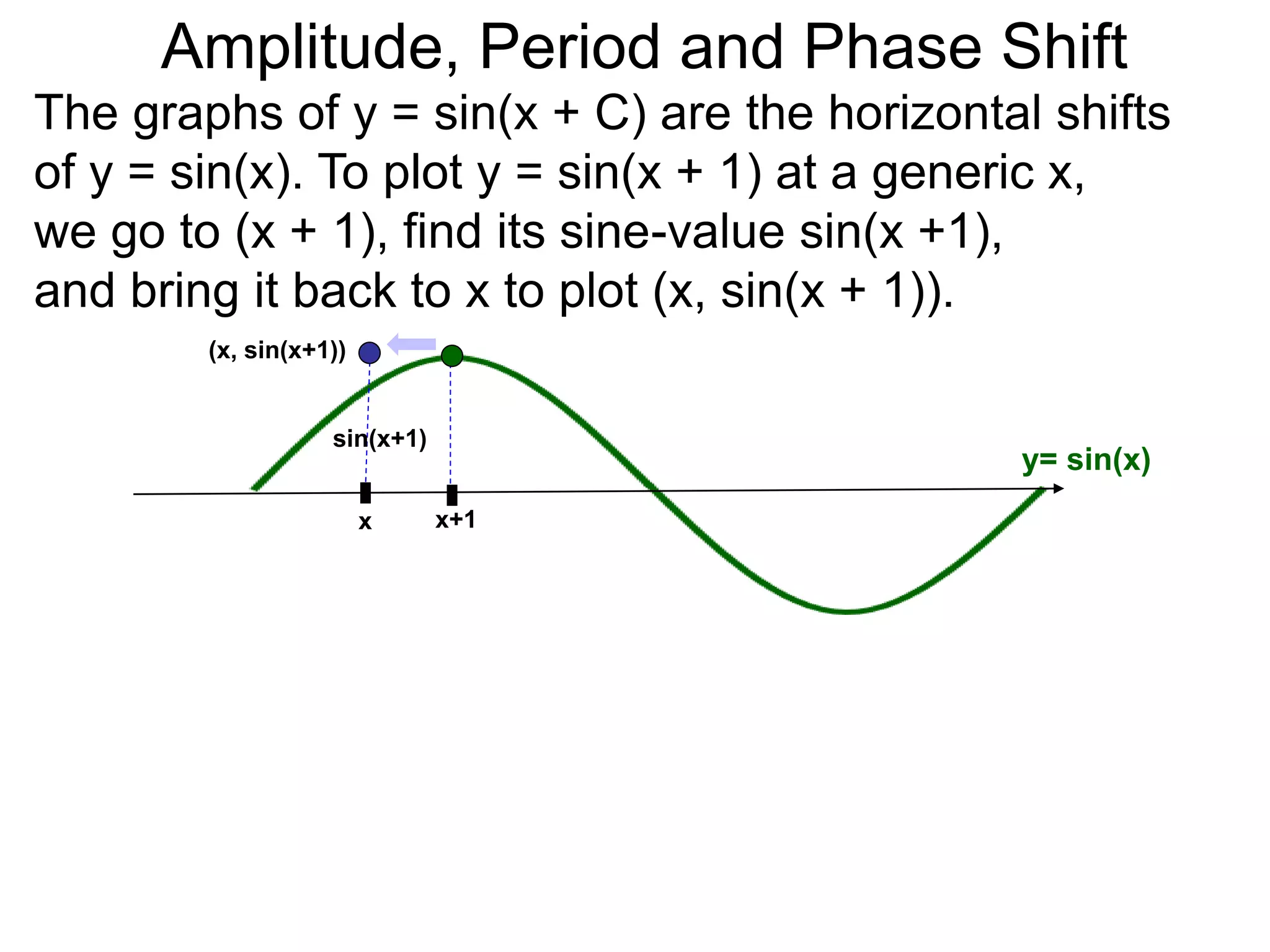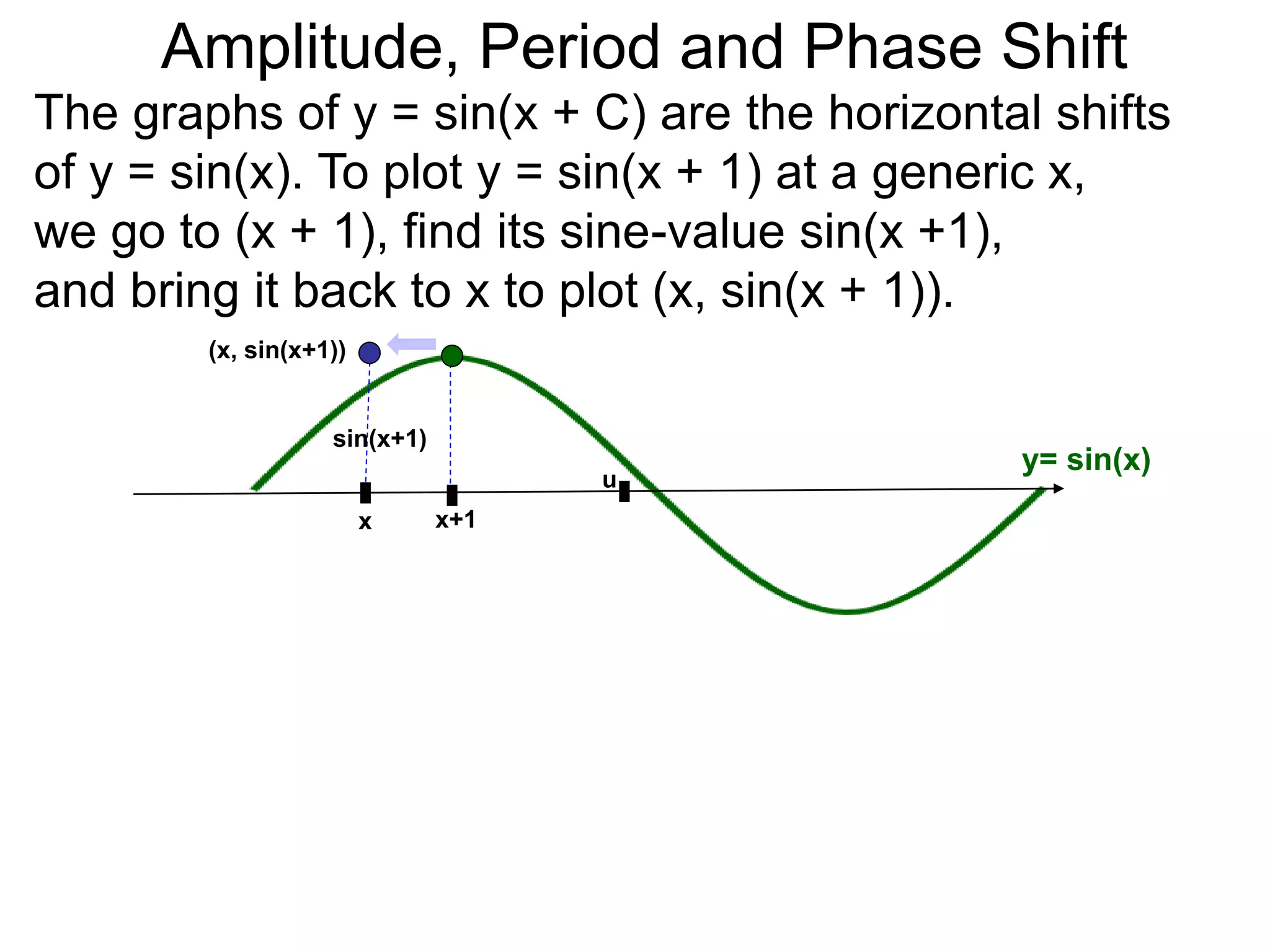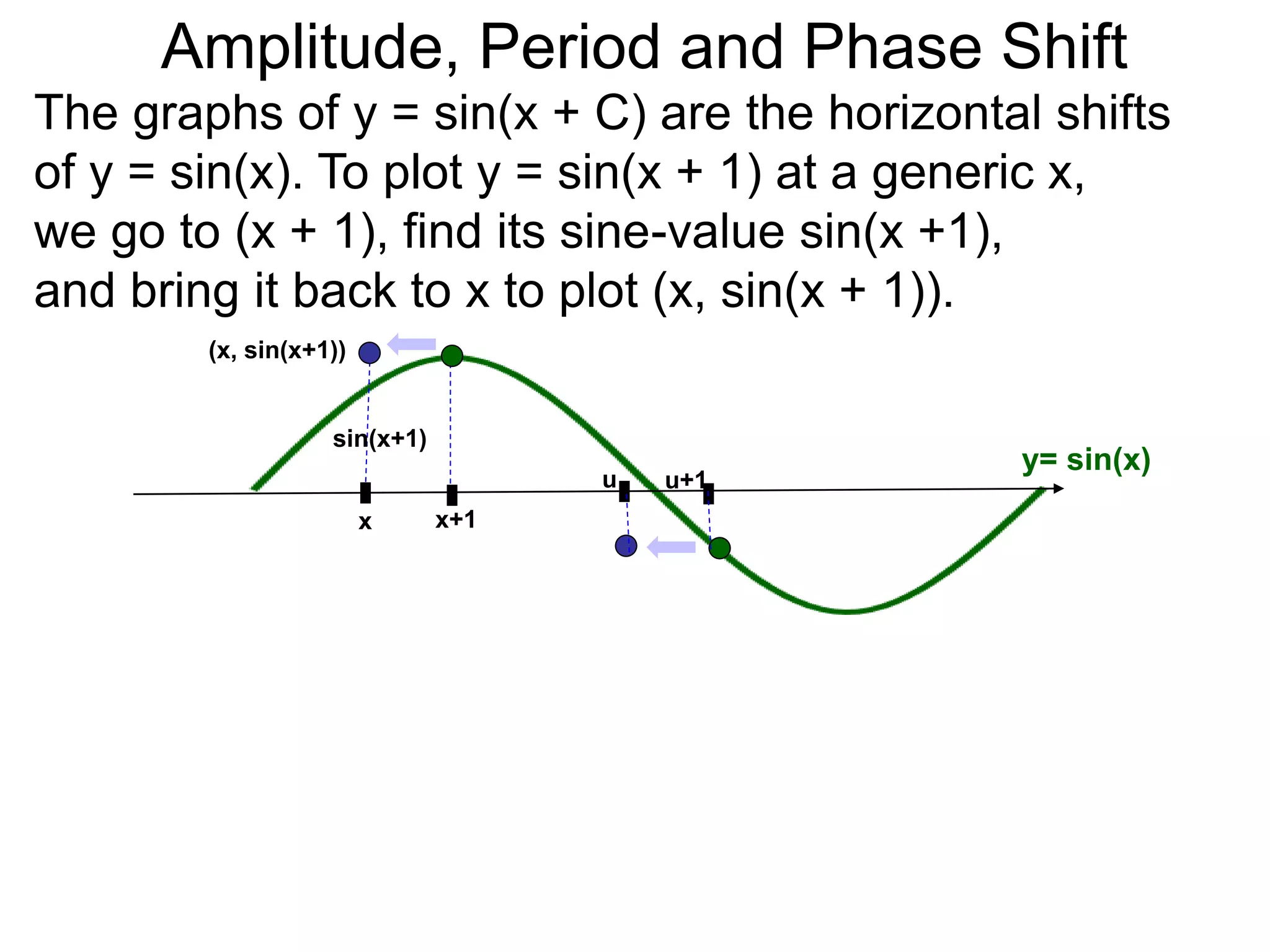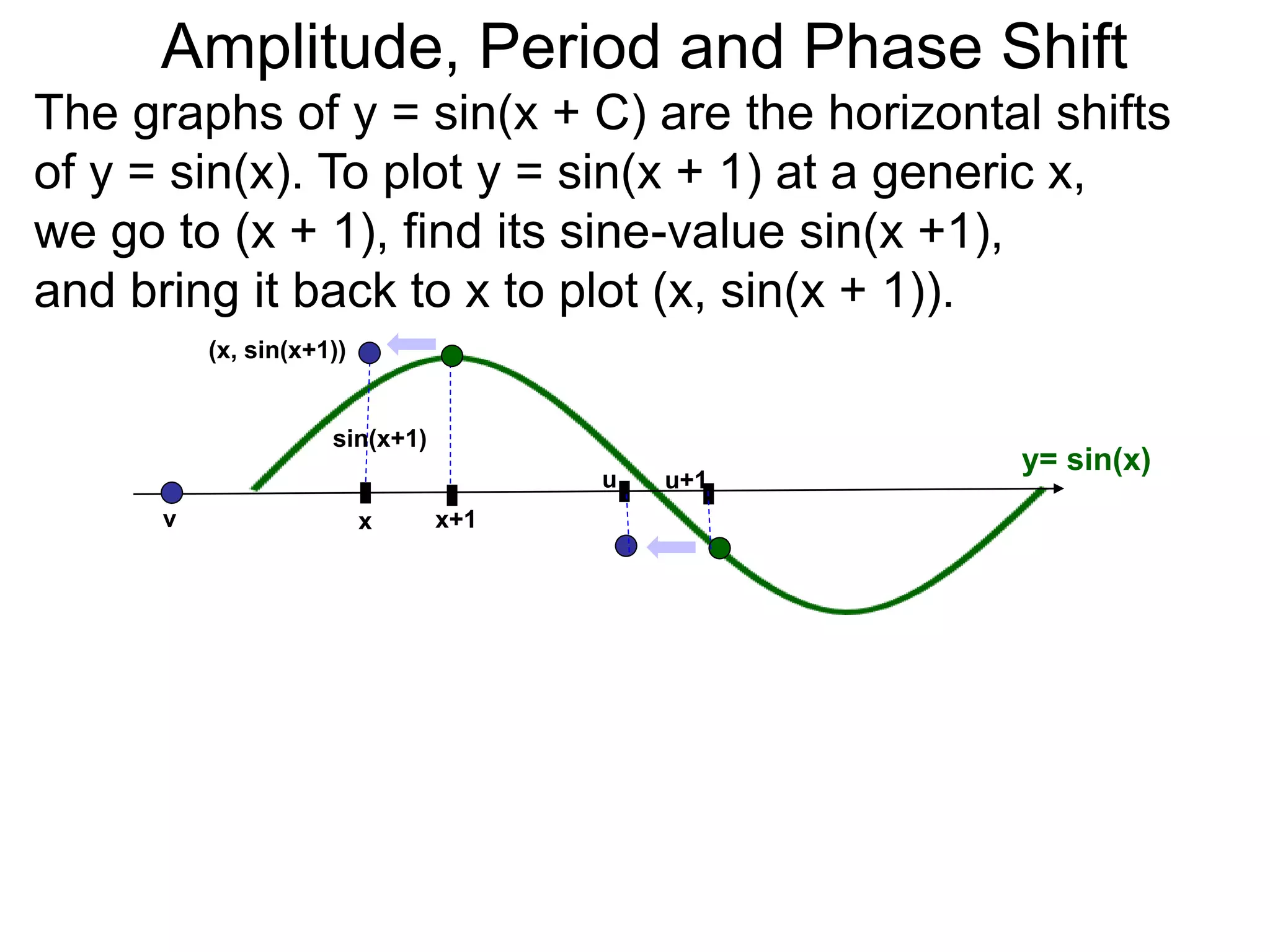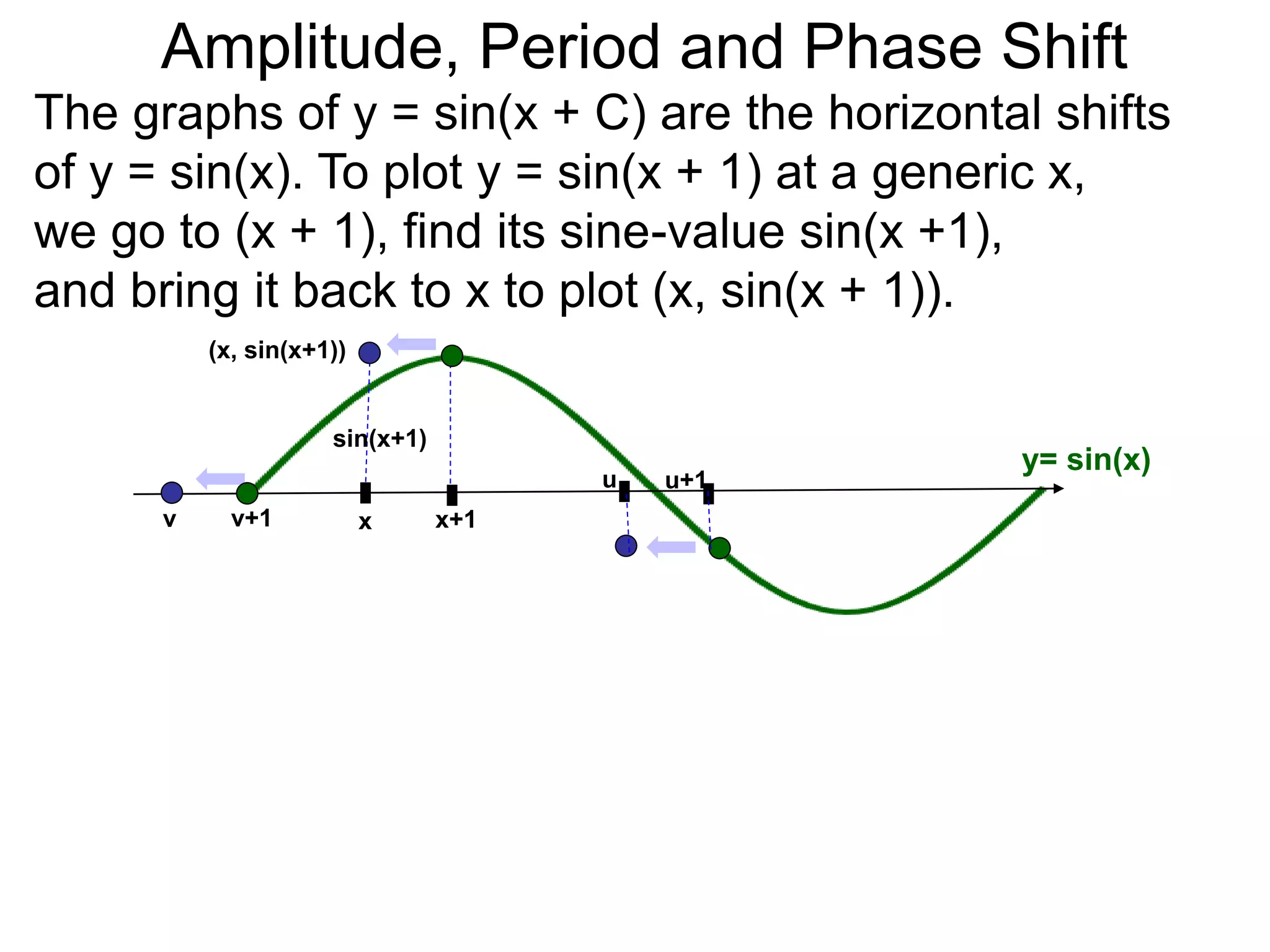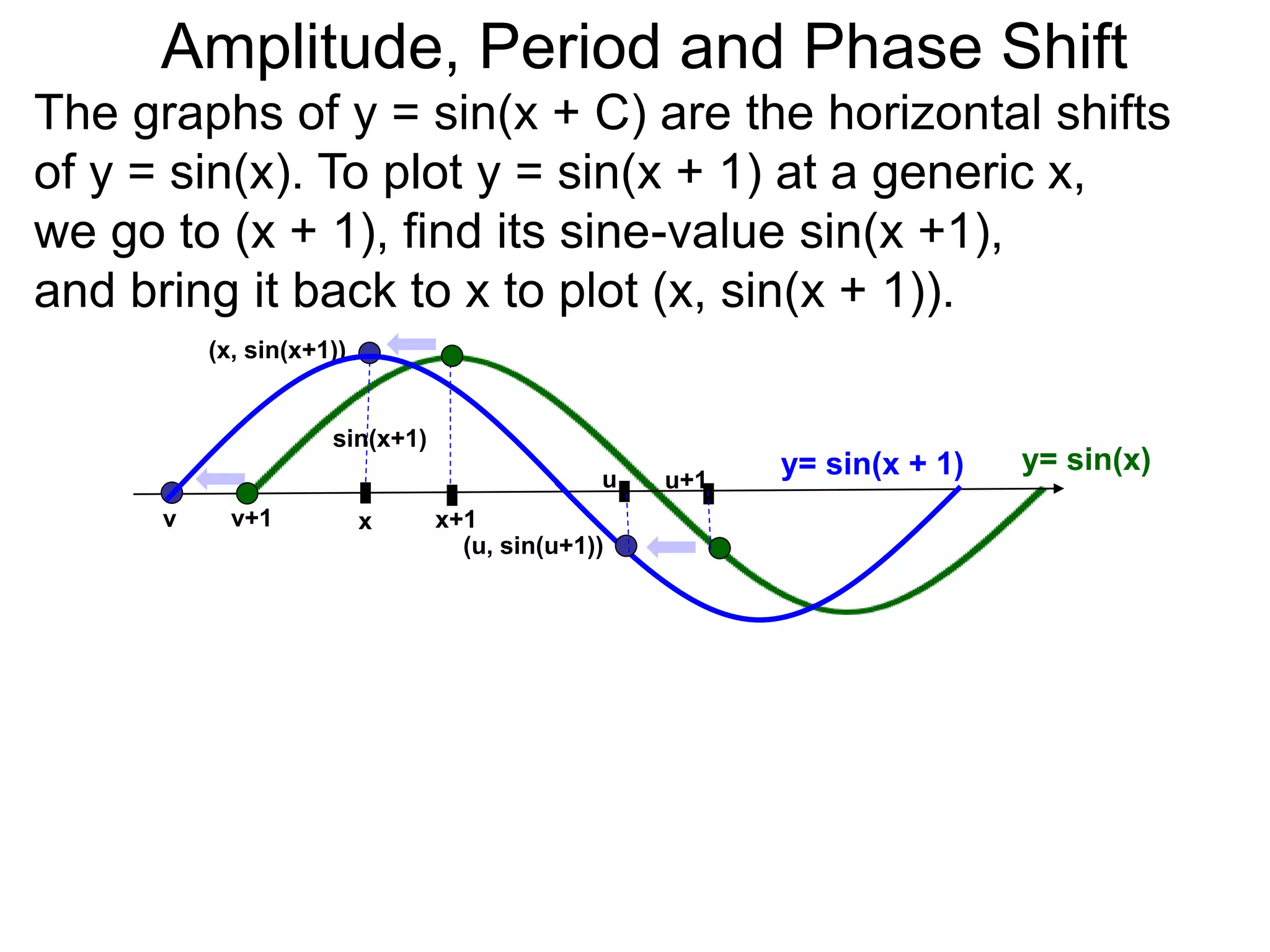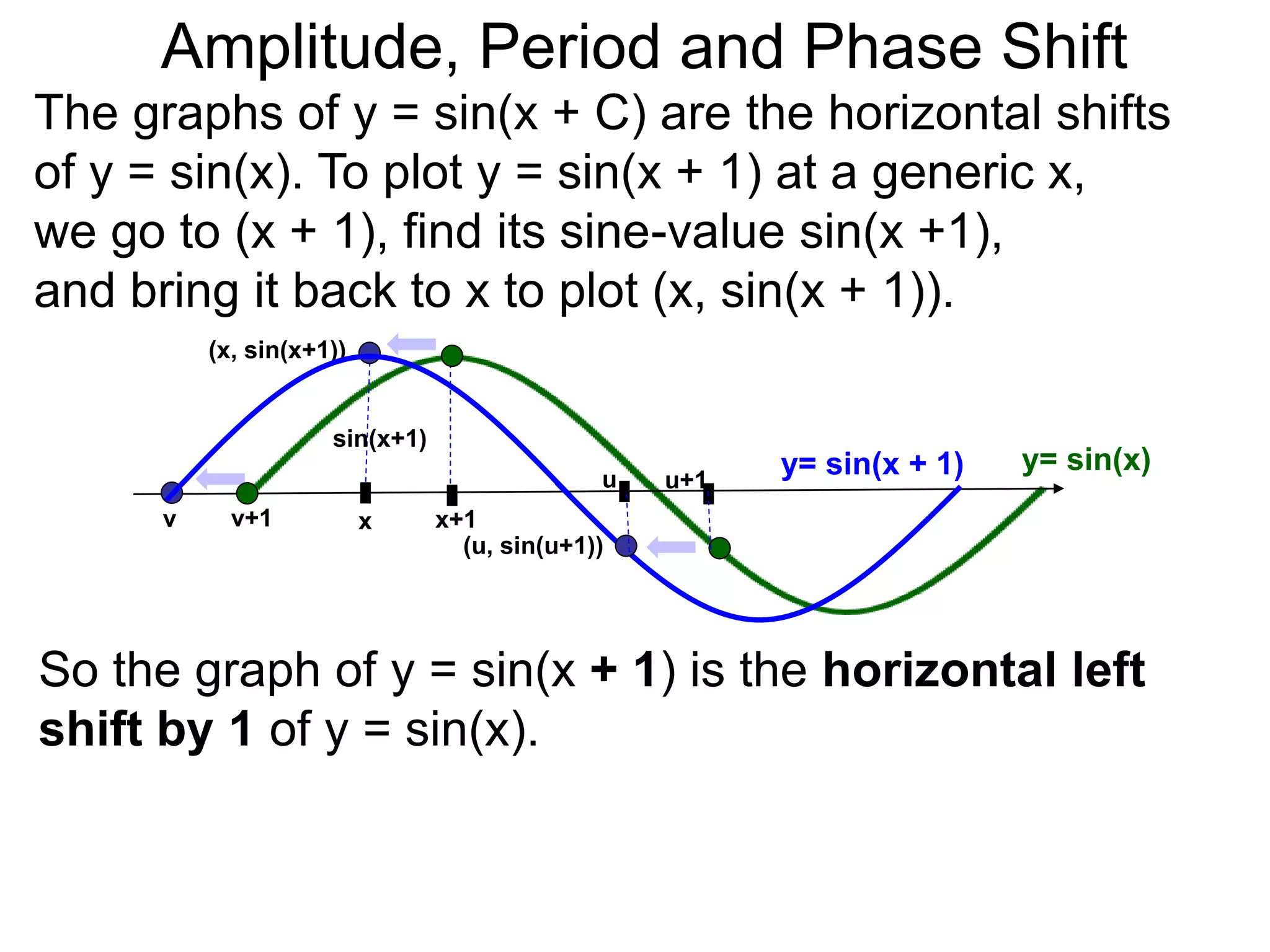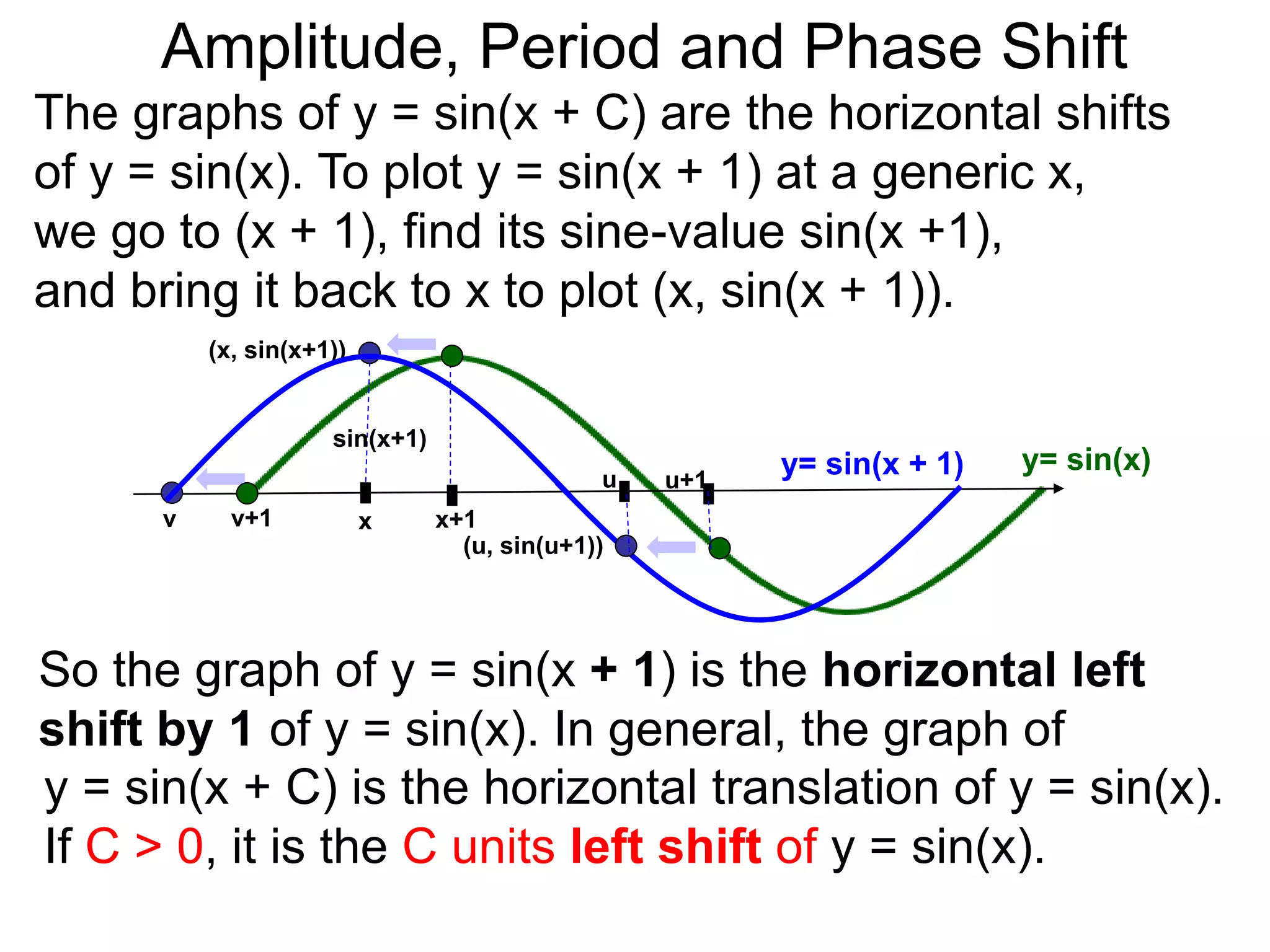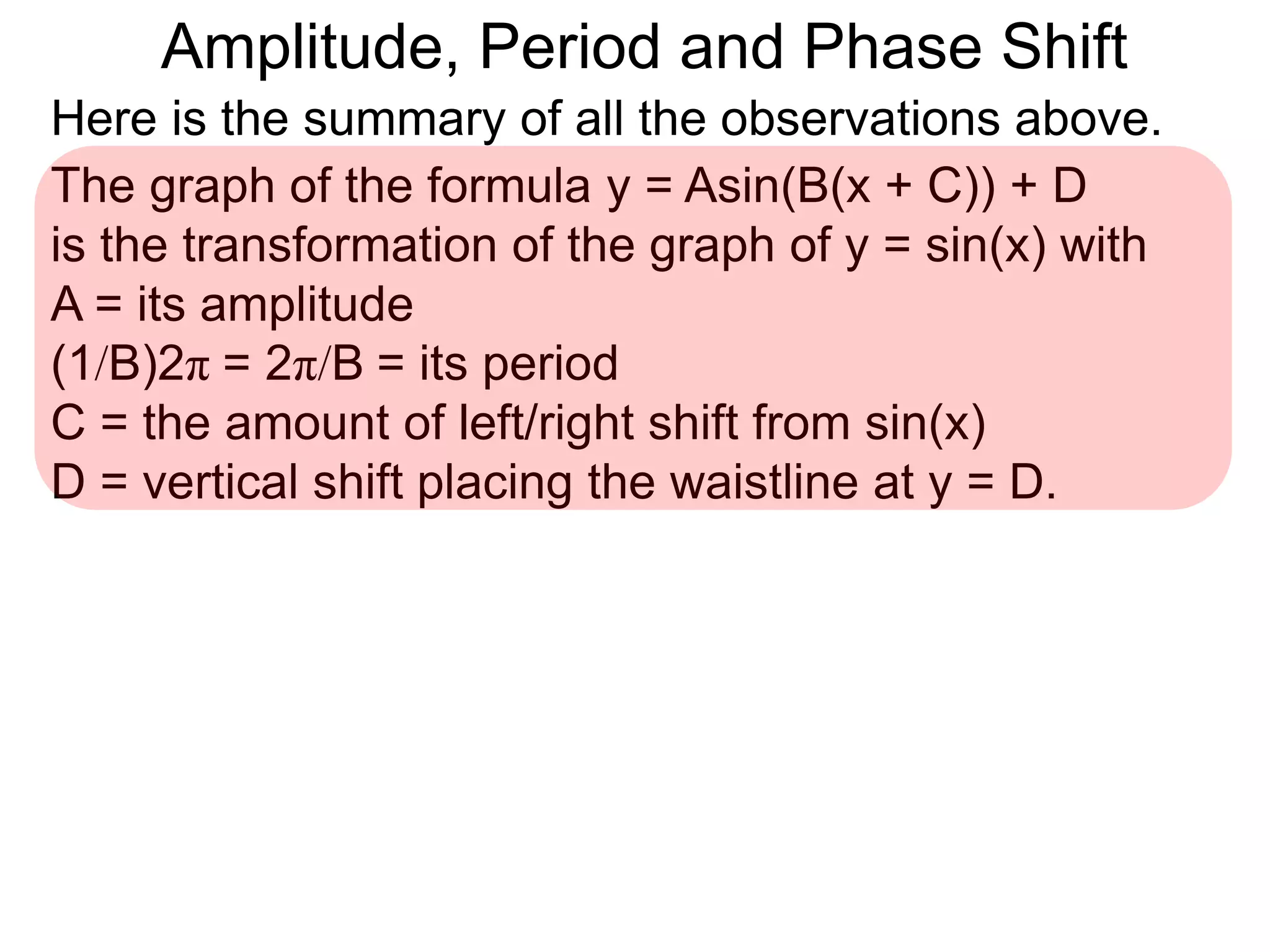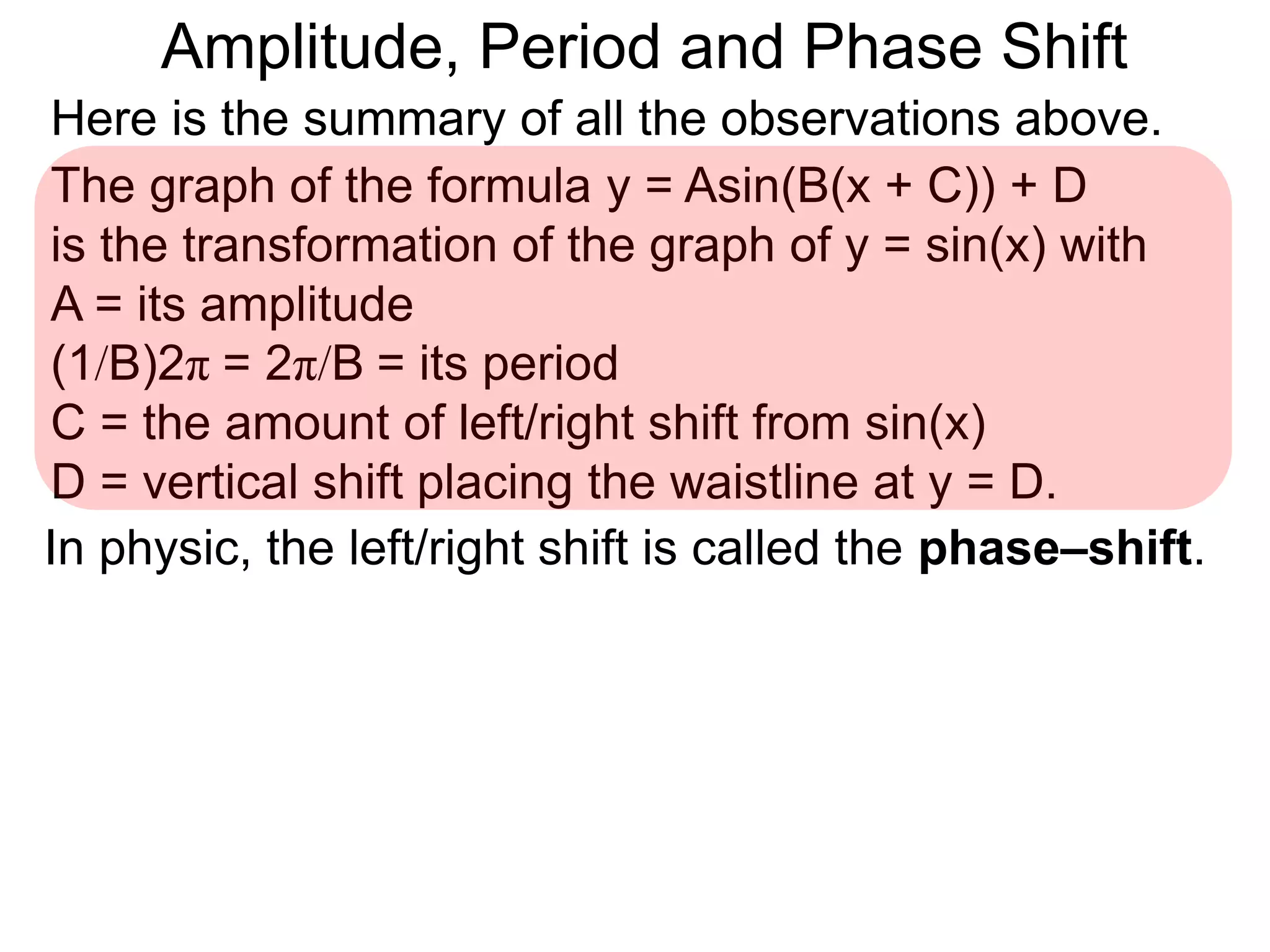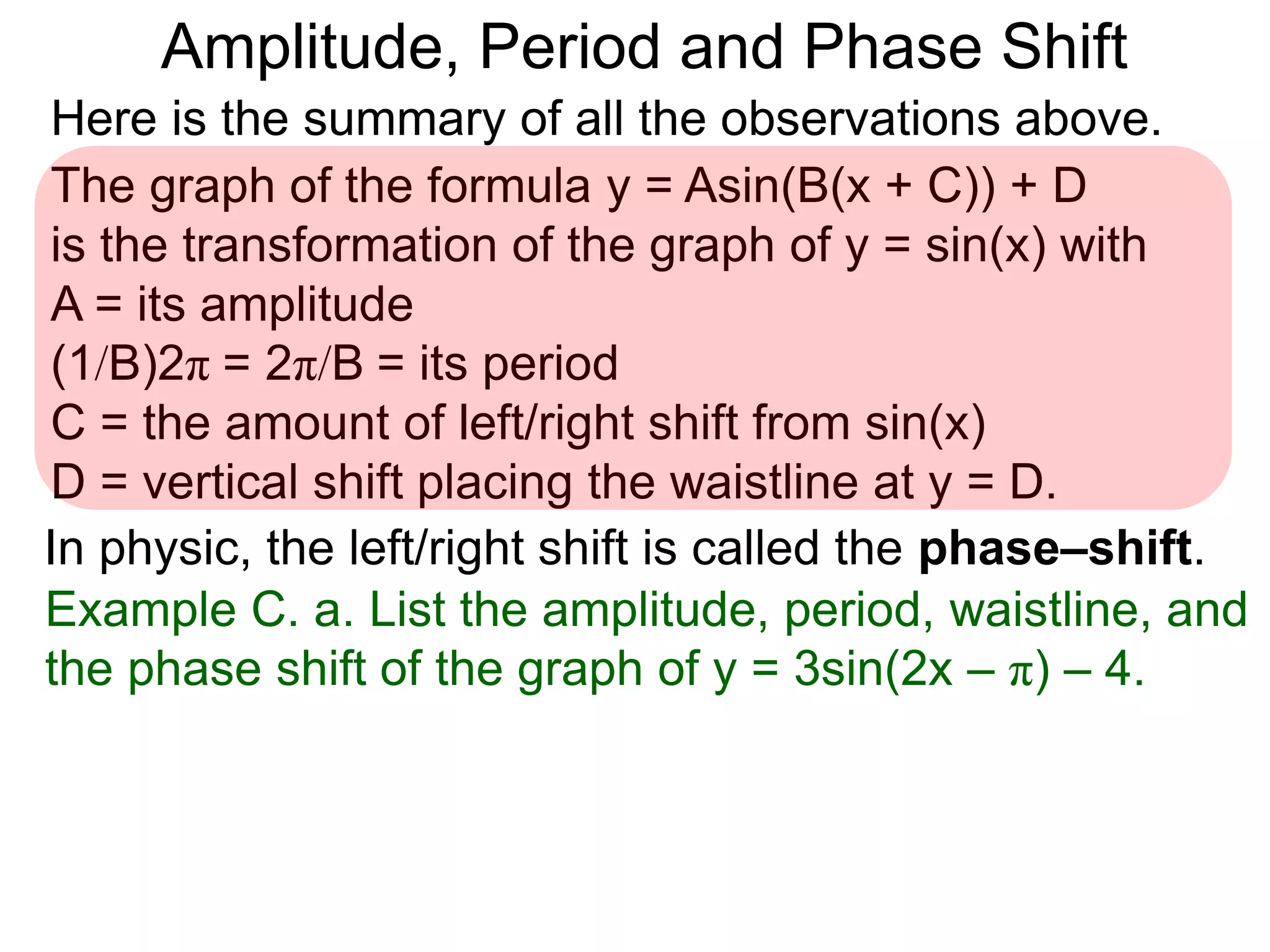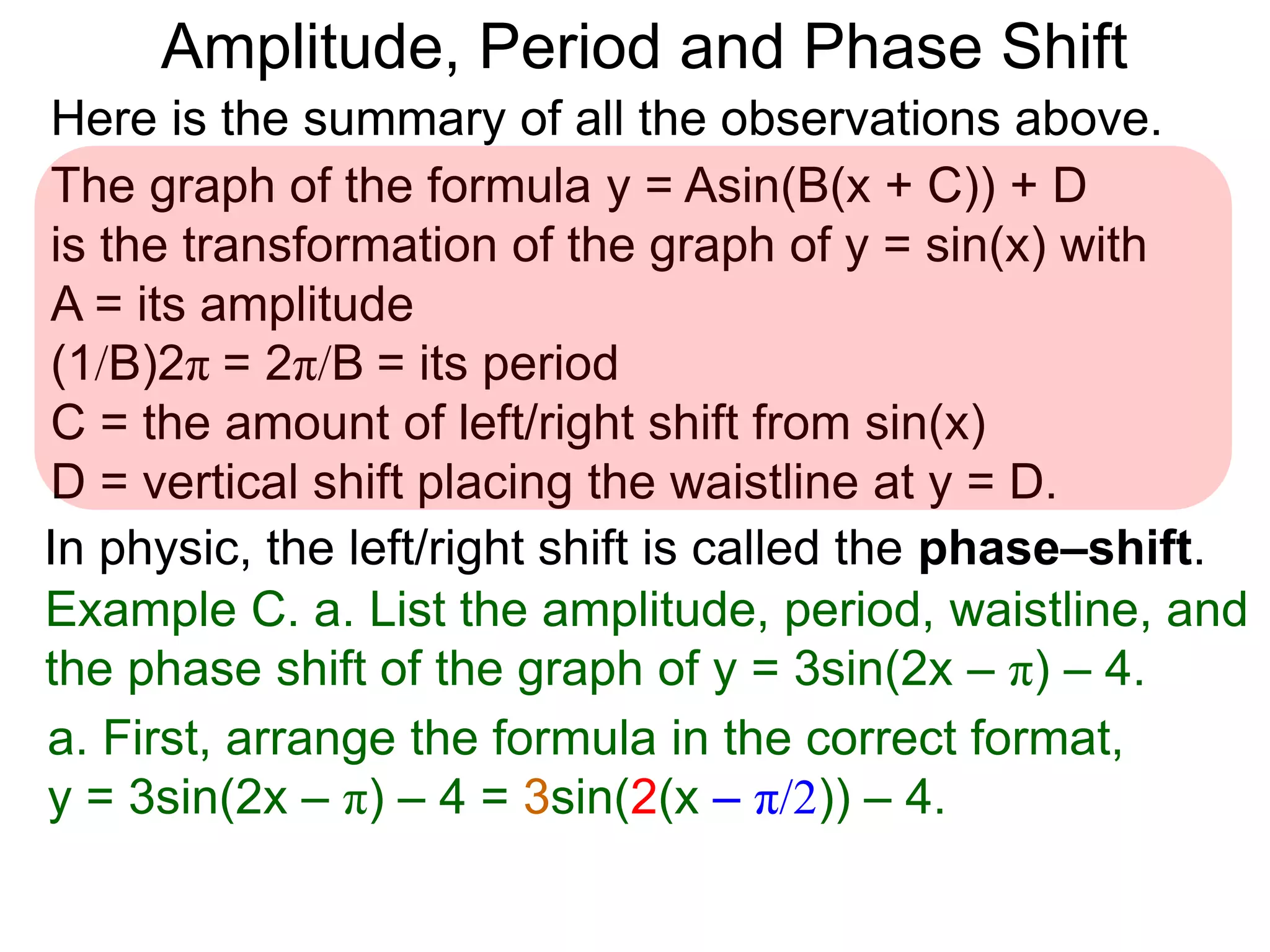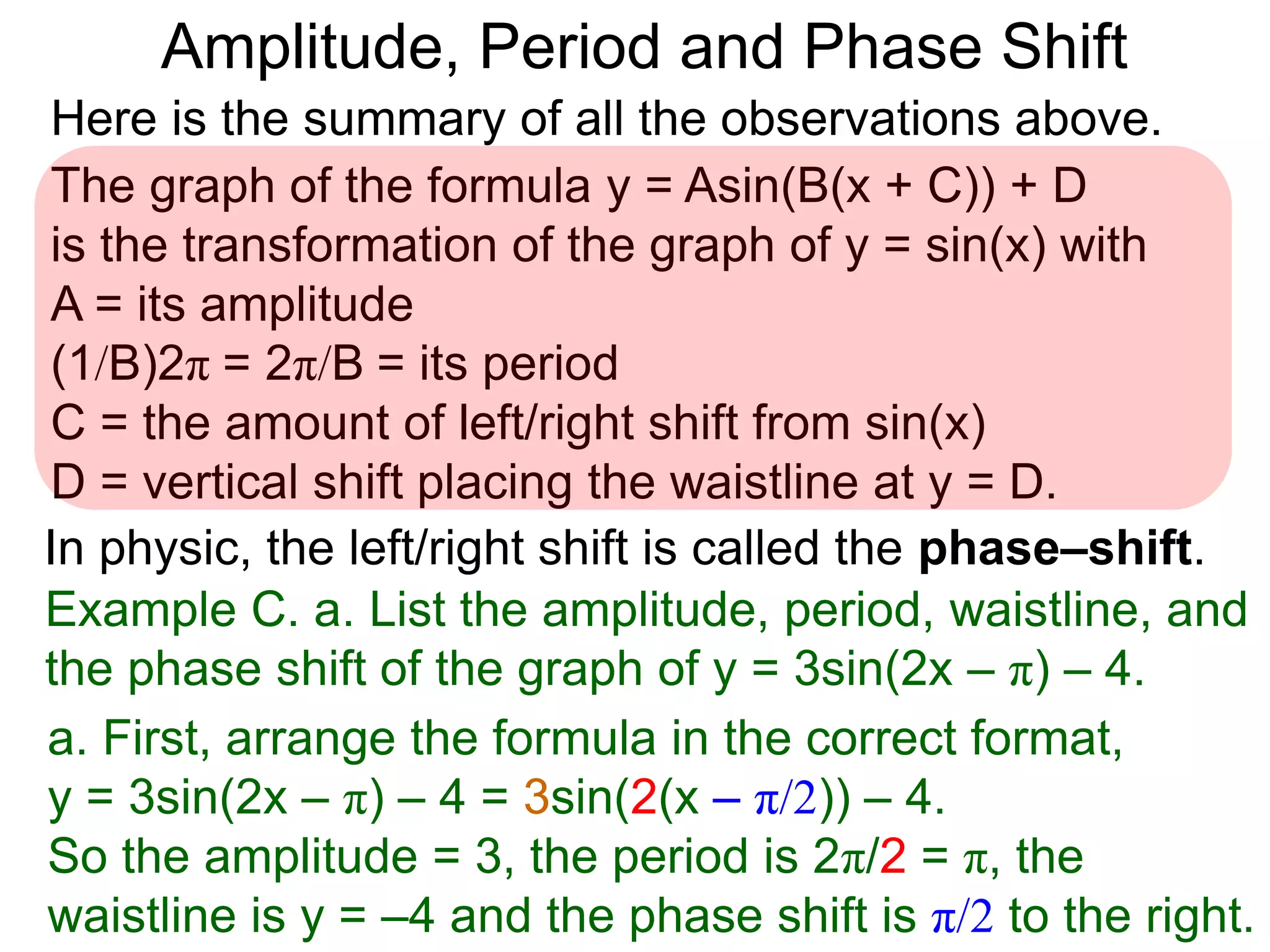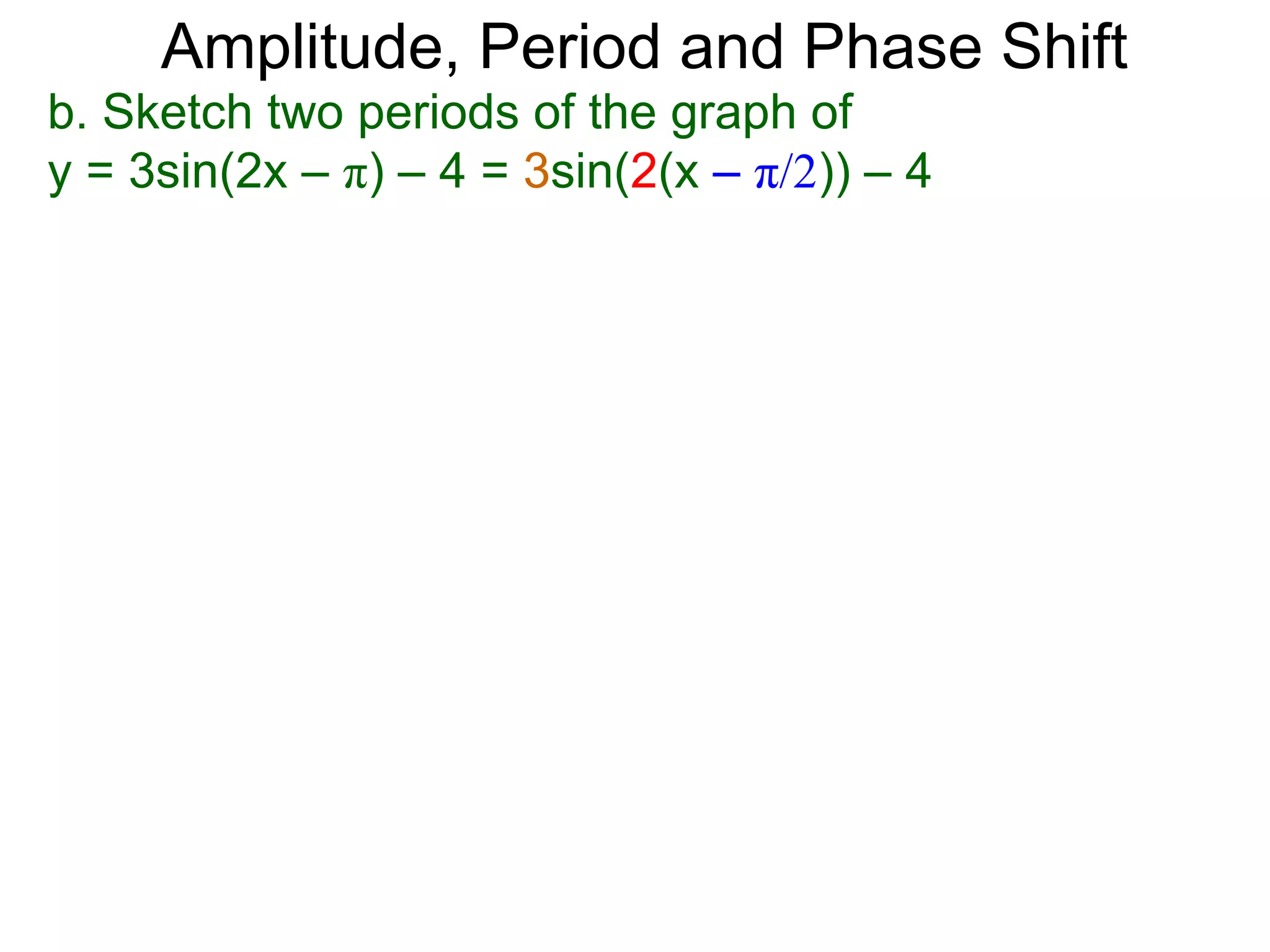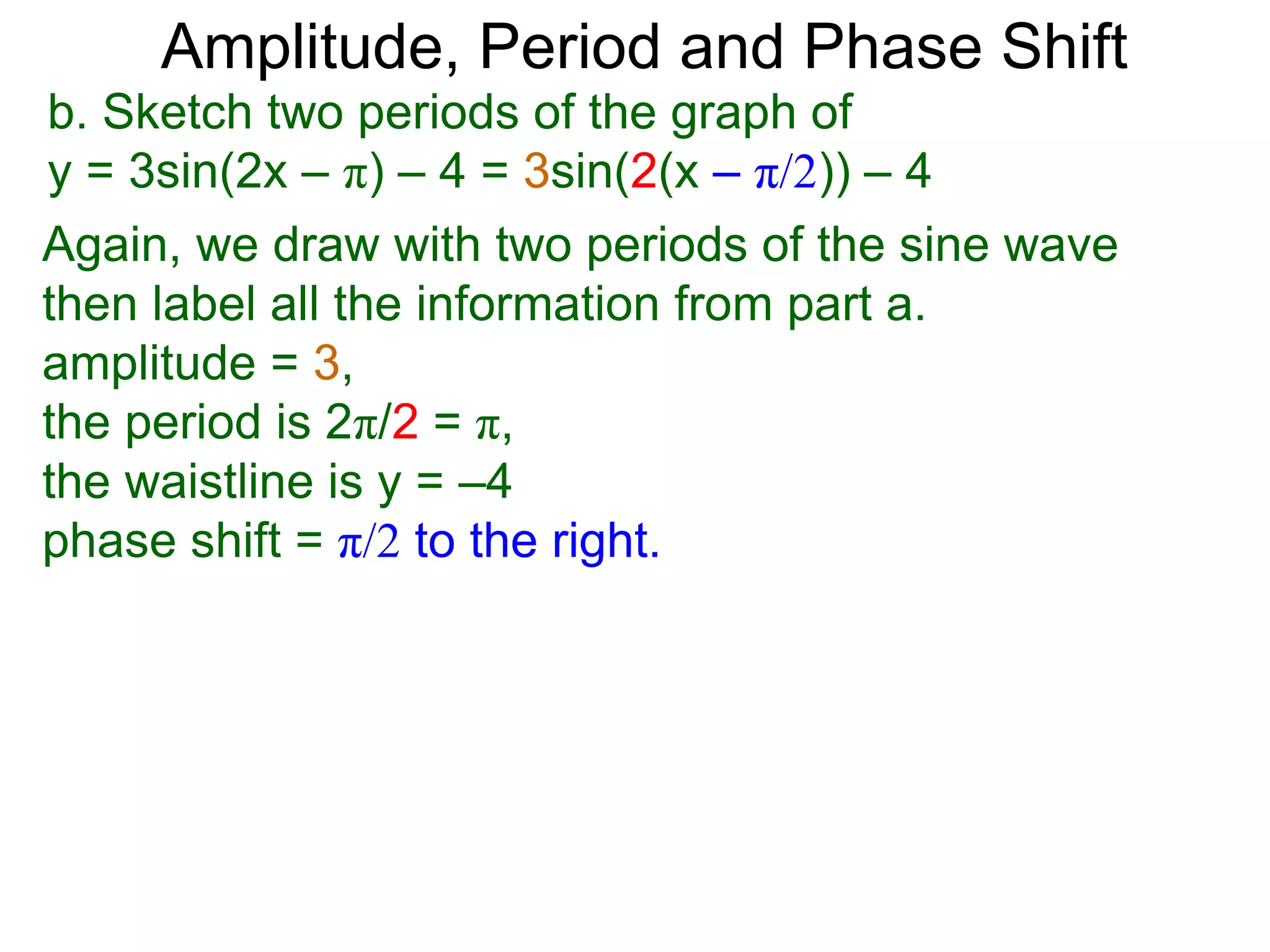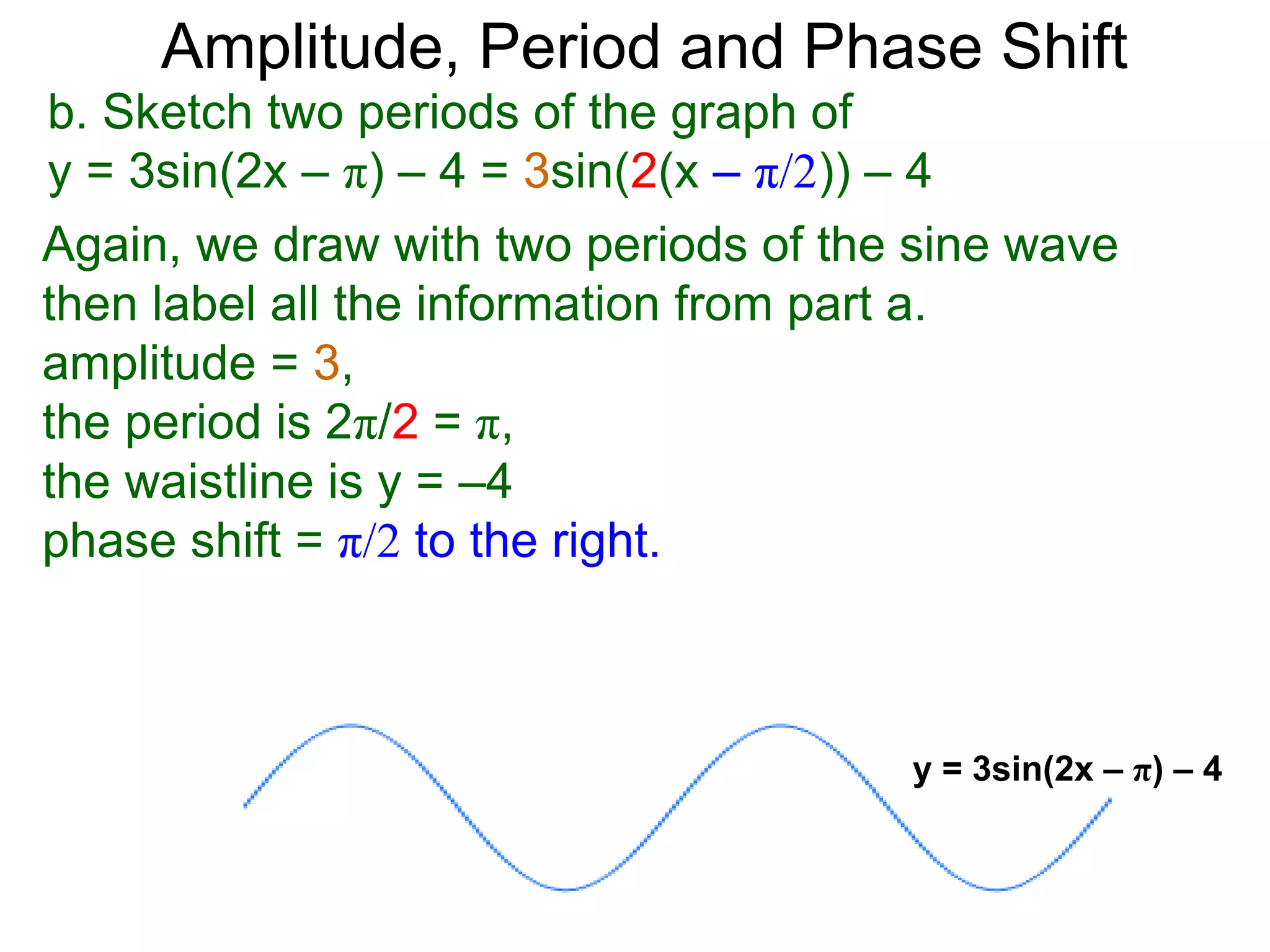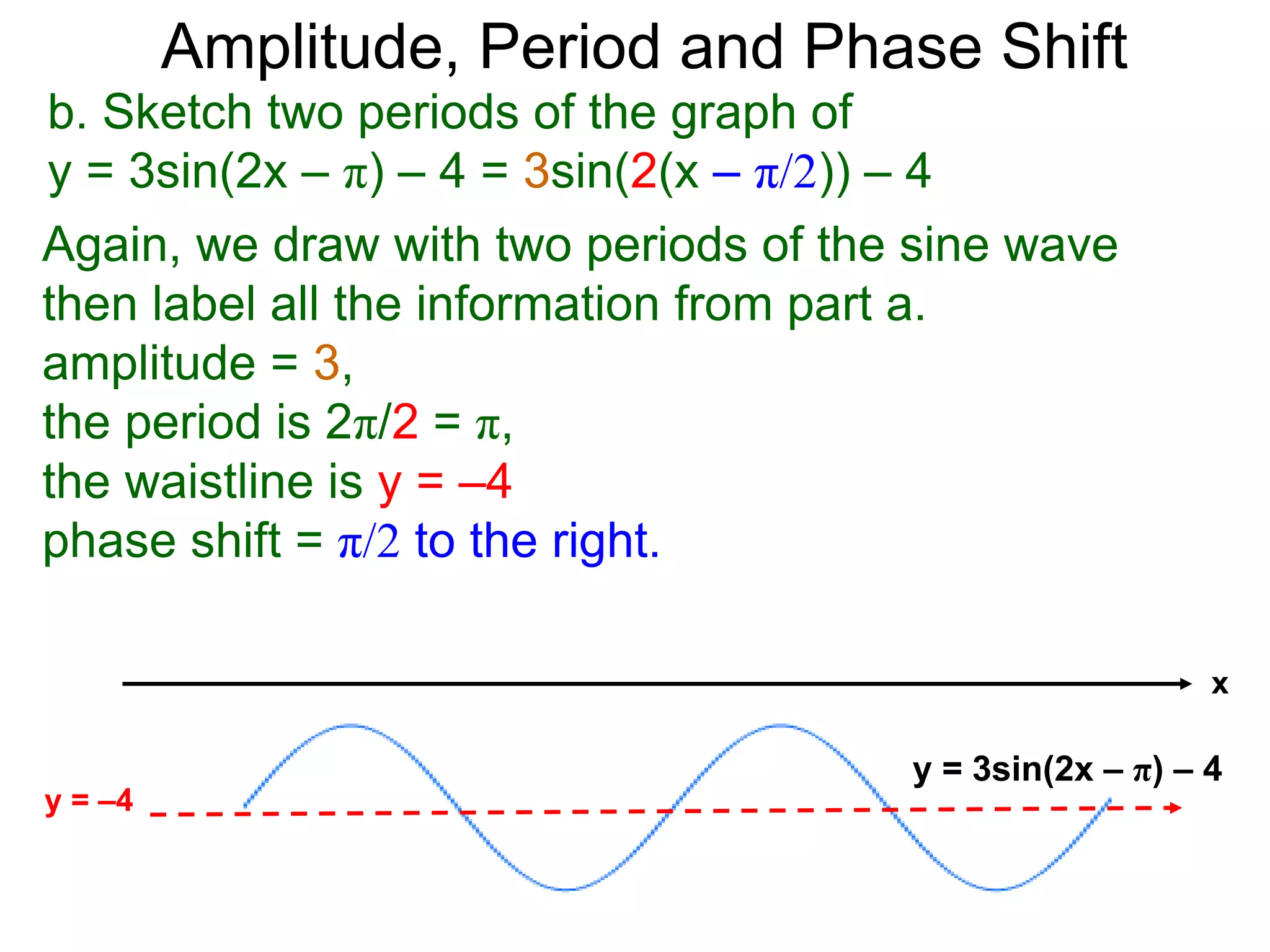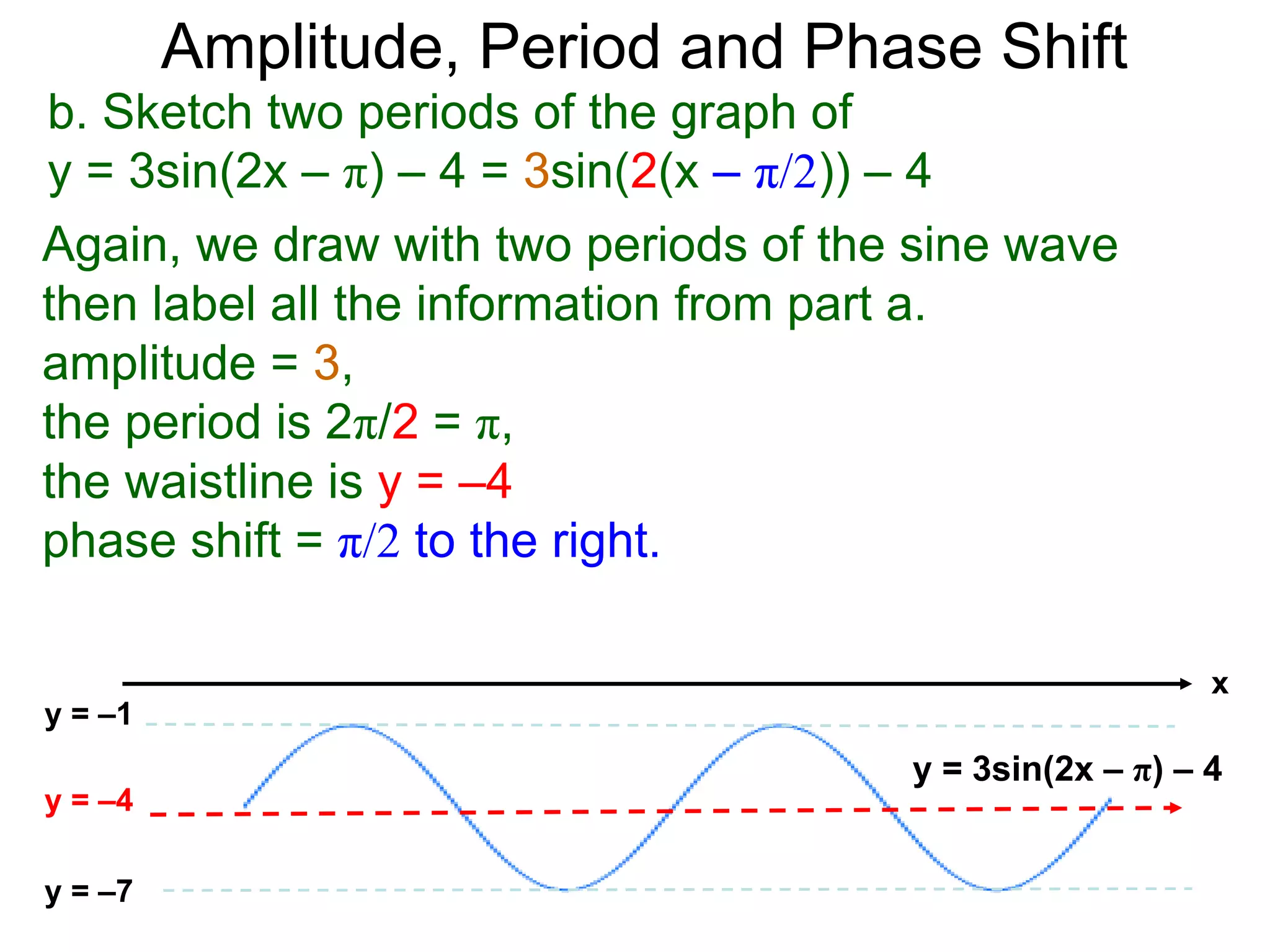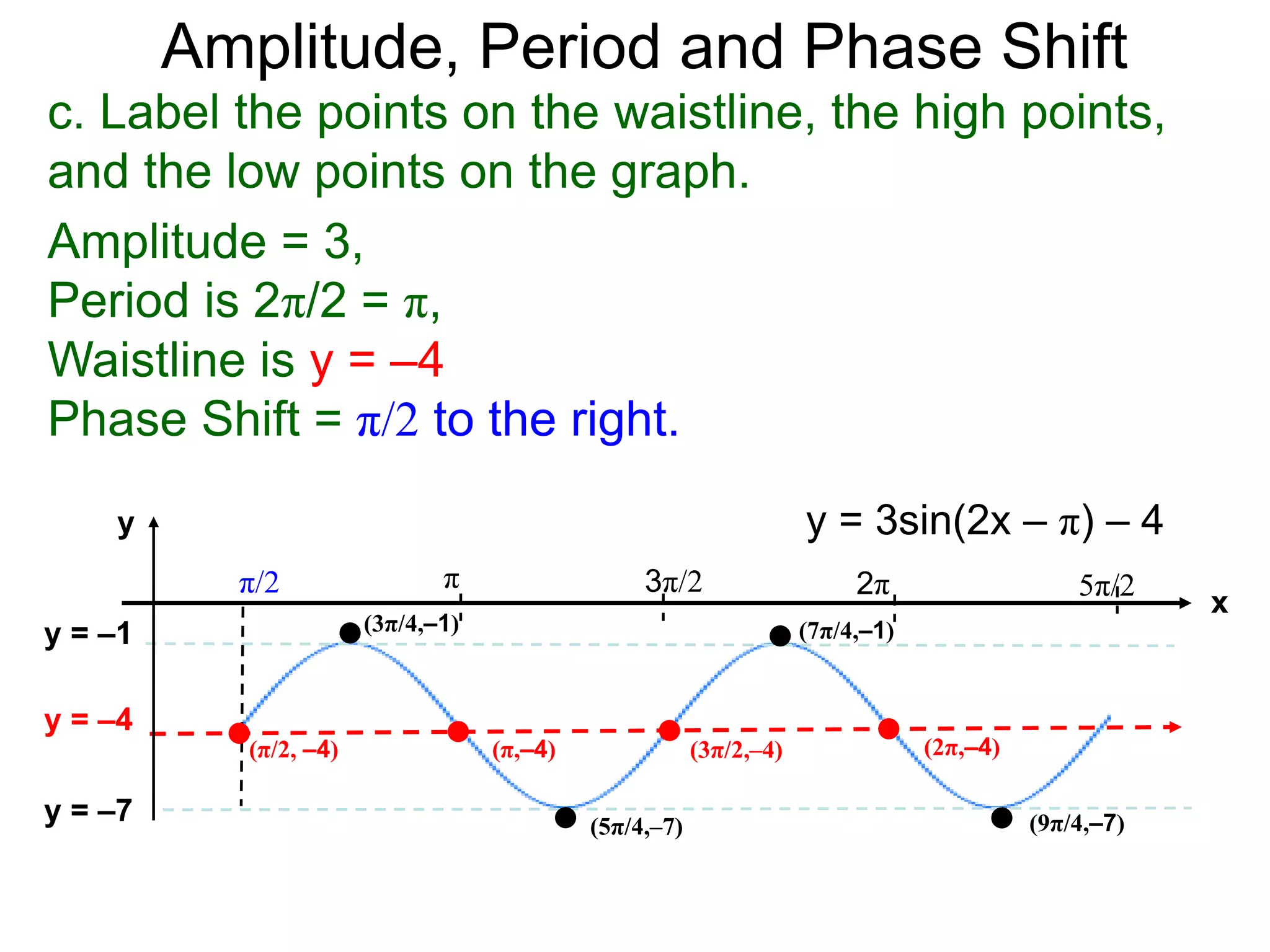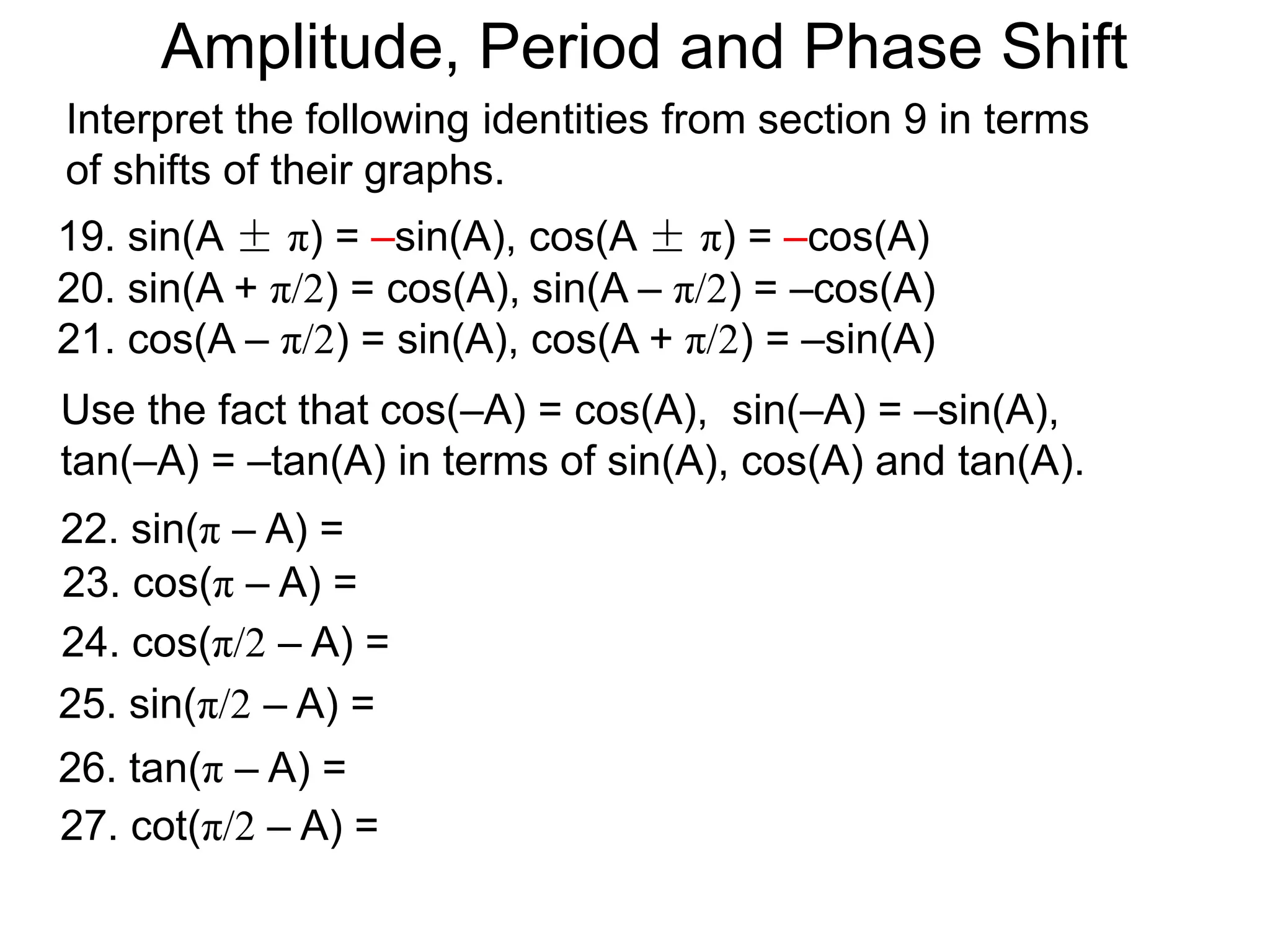The document discusses amplitude, period, and phase shift of waves. It defines amplitude as the distance from the waistline of a wave to its peak or trough. Period is the length of time or space for a wave to complete one cycle. Vertically stretching or compressing a sine or cosine graph changes its amplitude. Horizontally compressing or stretching changes its period. For example, y=sin(2x) has half the period of y=sin(x) because as x varies from 0 to π, 2x varies from 0 to 2π, compressing the wave horizontally.
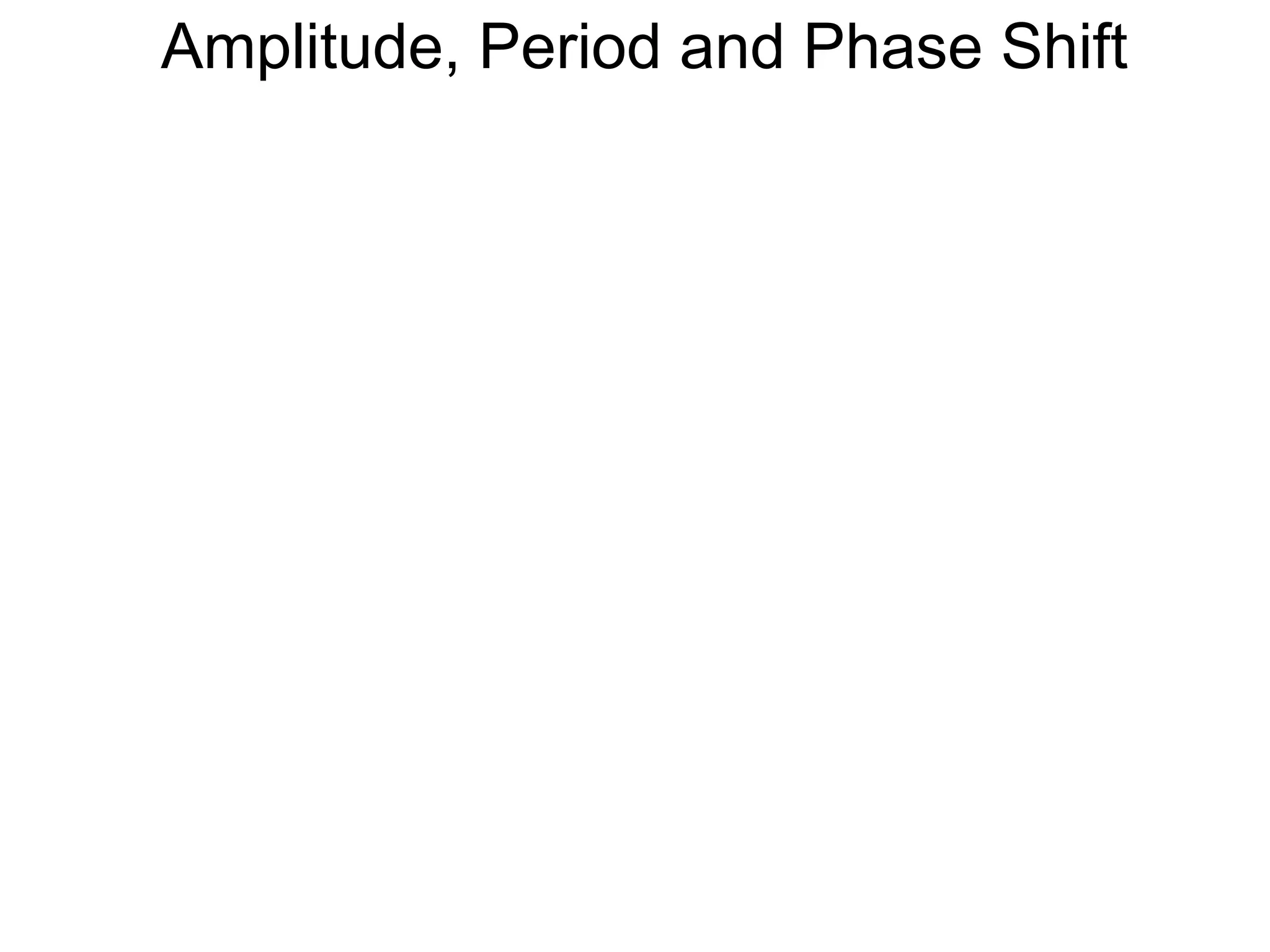
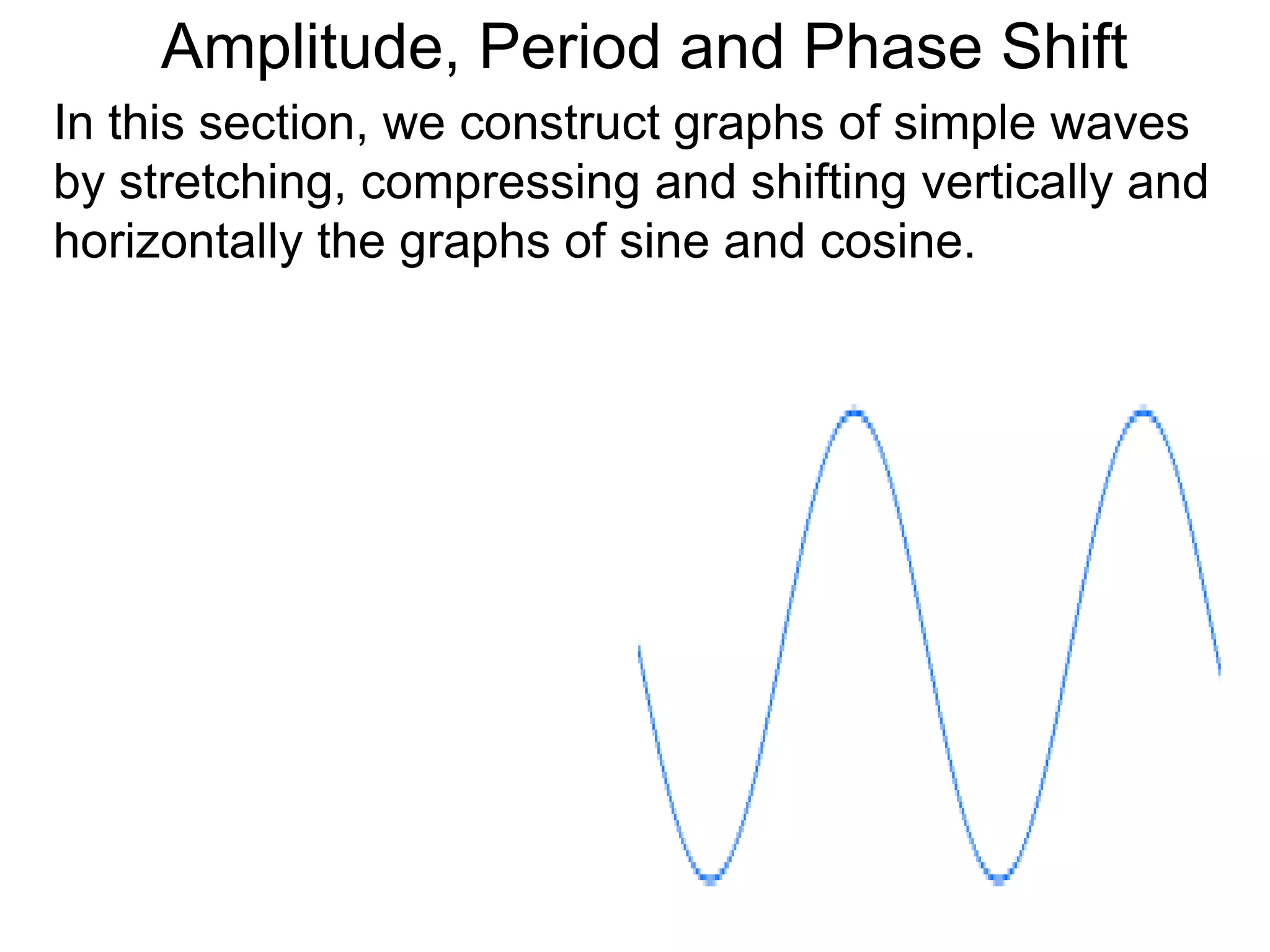
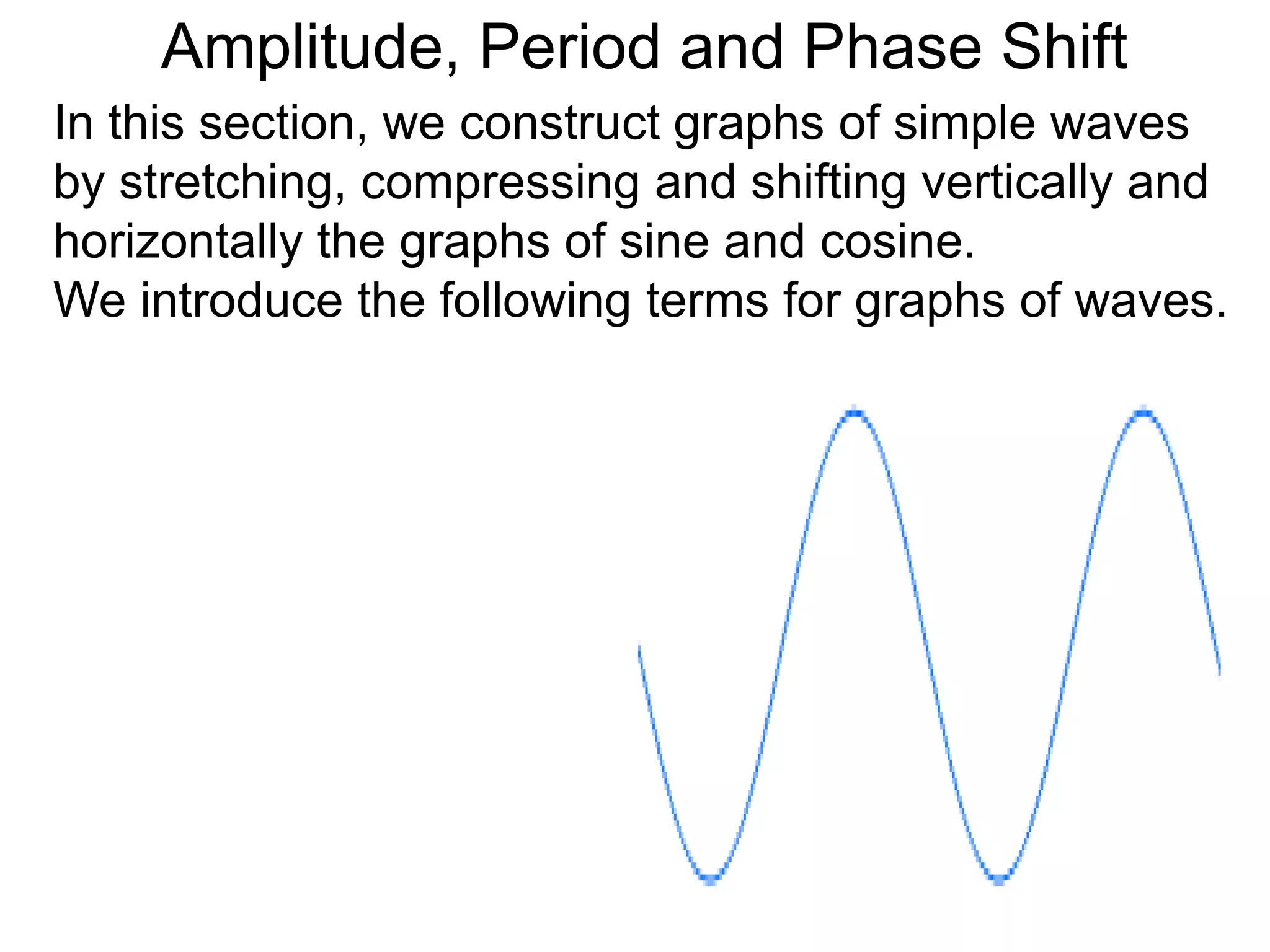
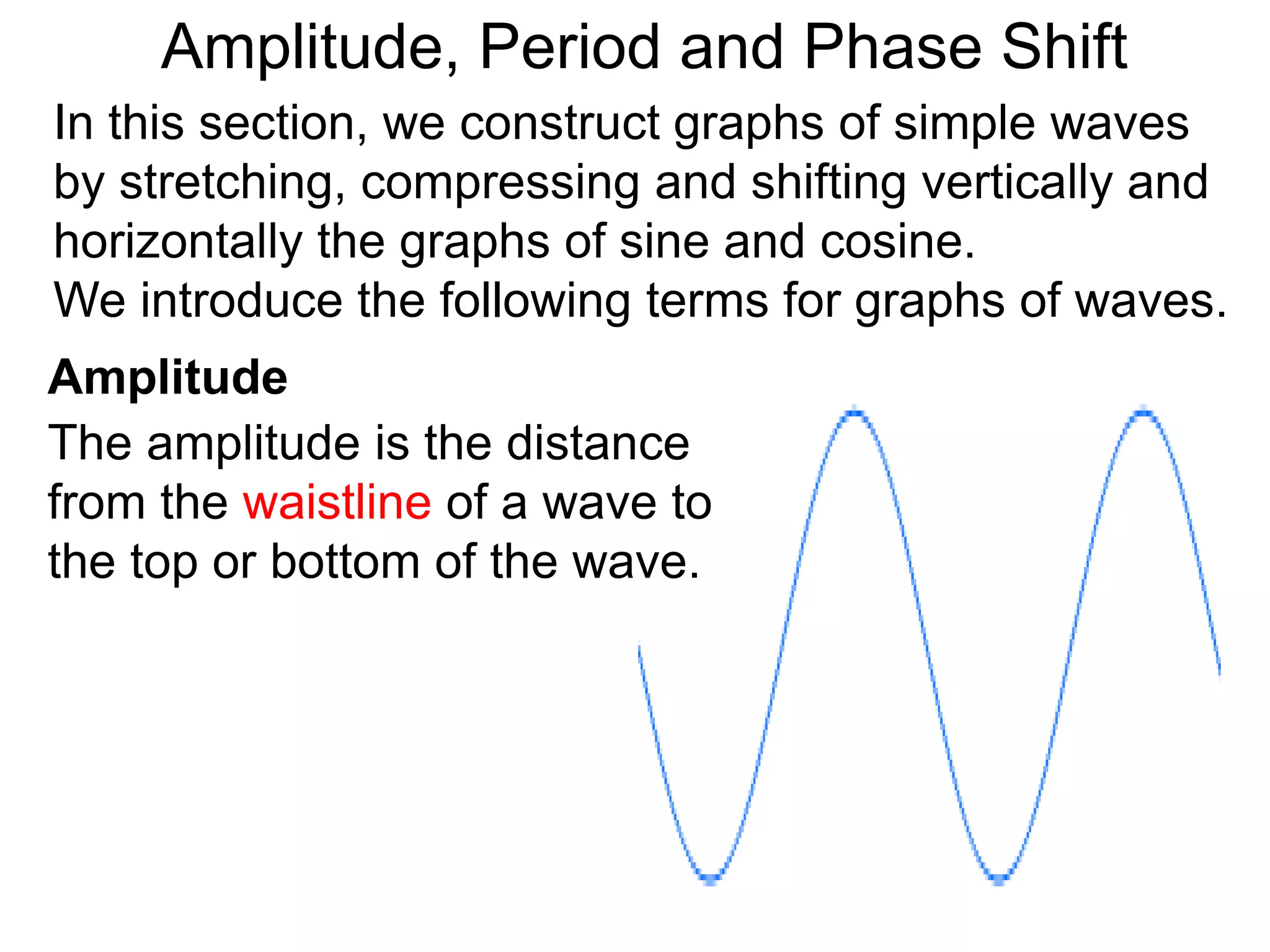
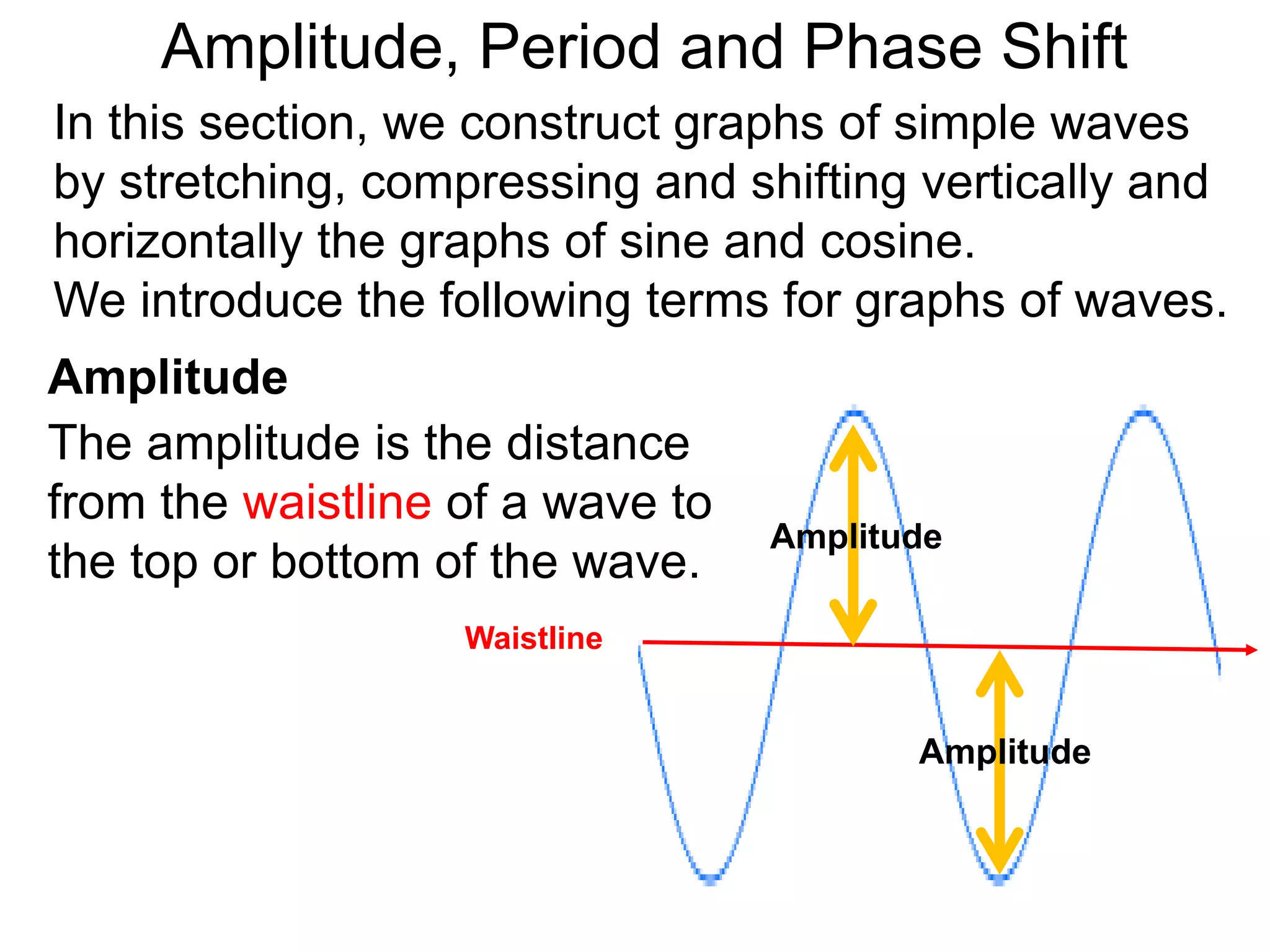
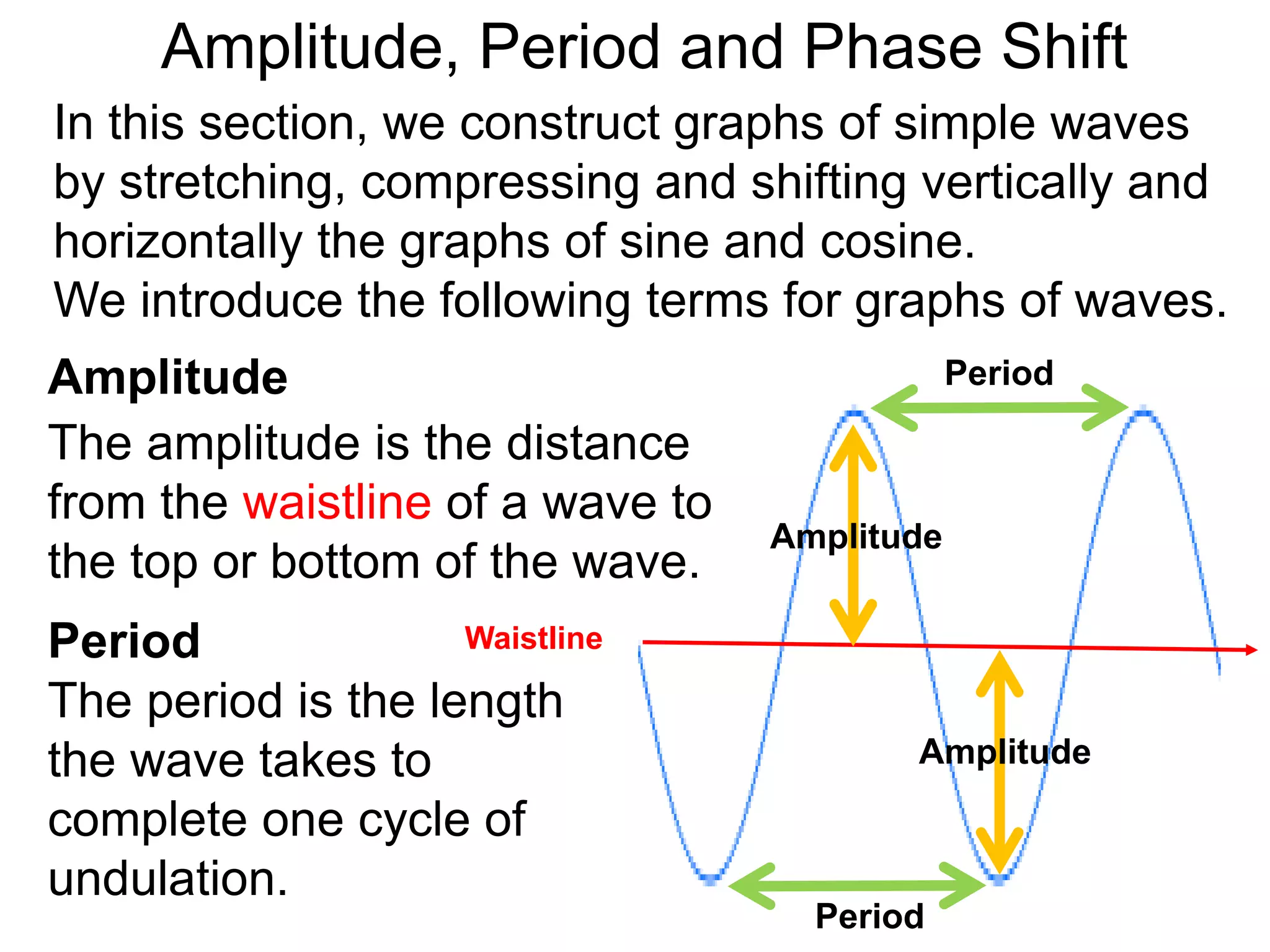
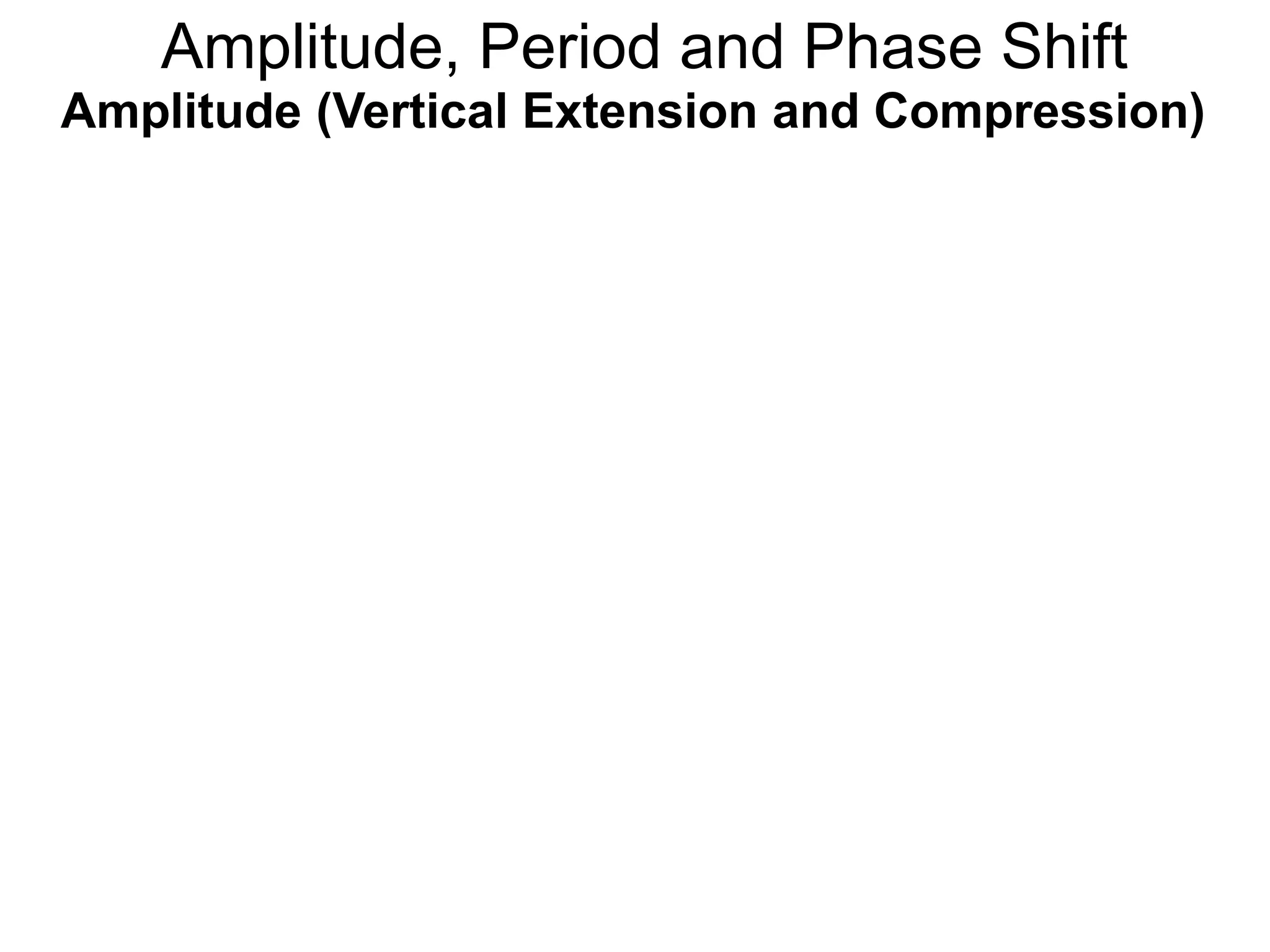
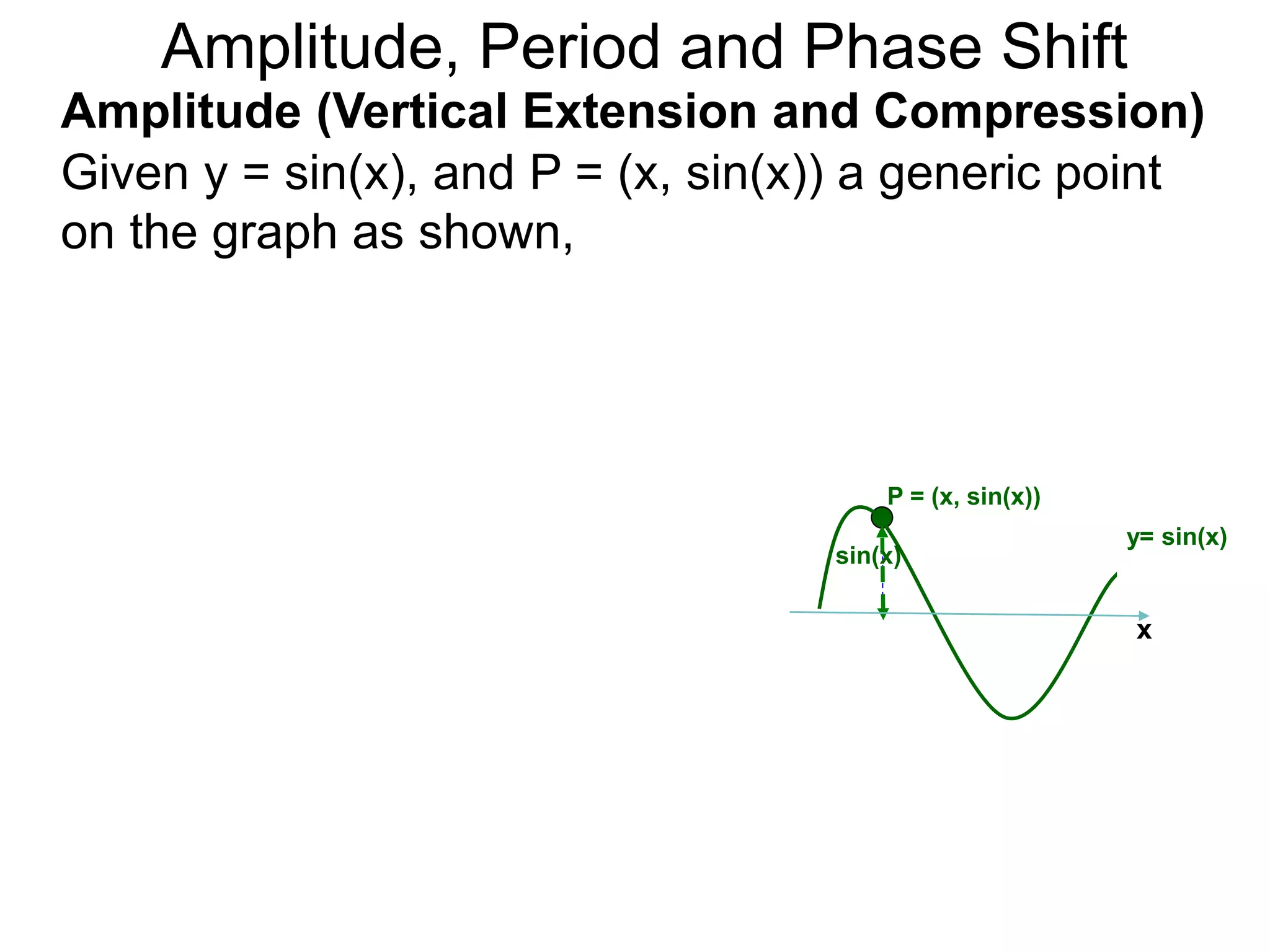
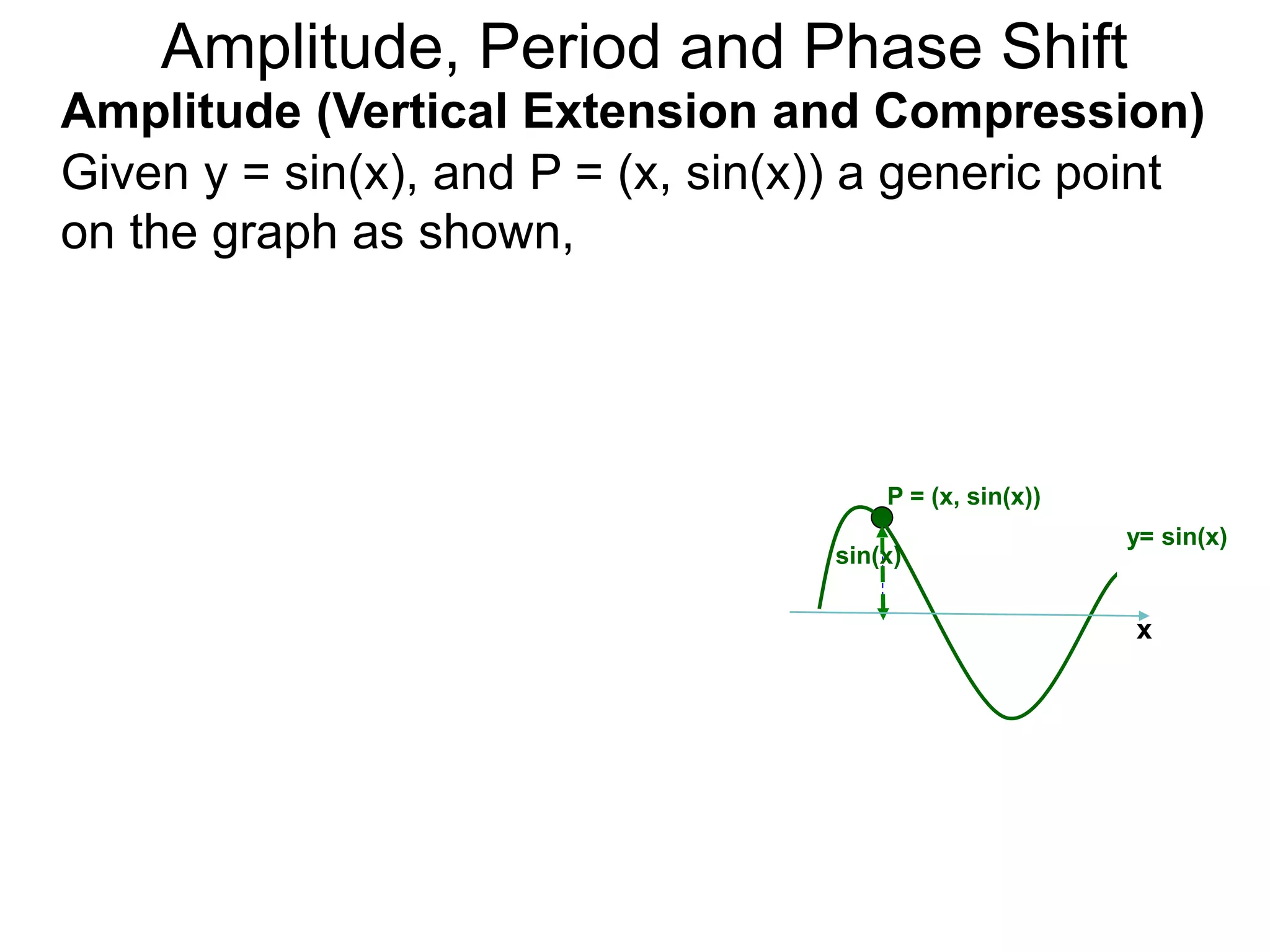
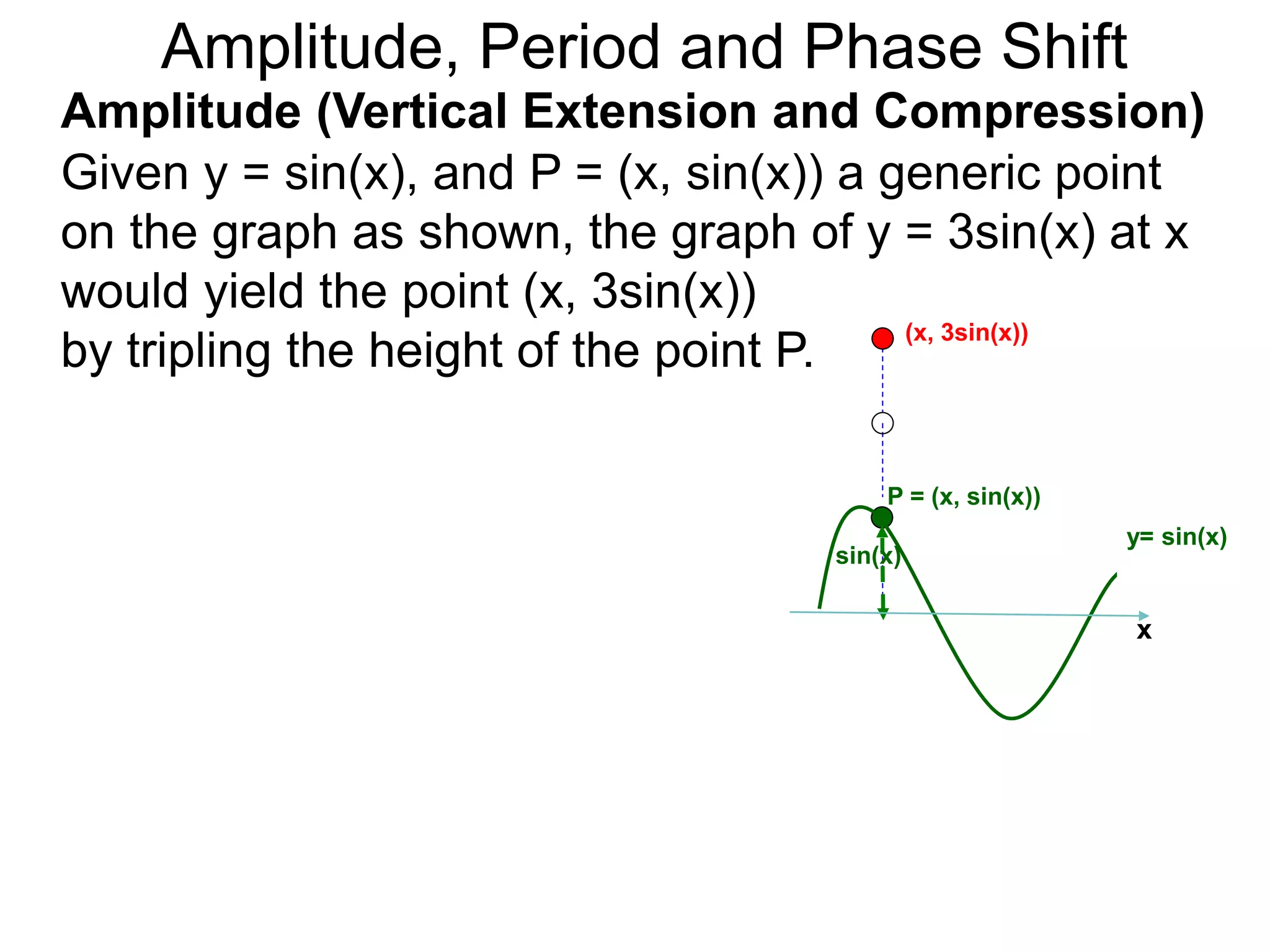

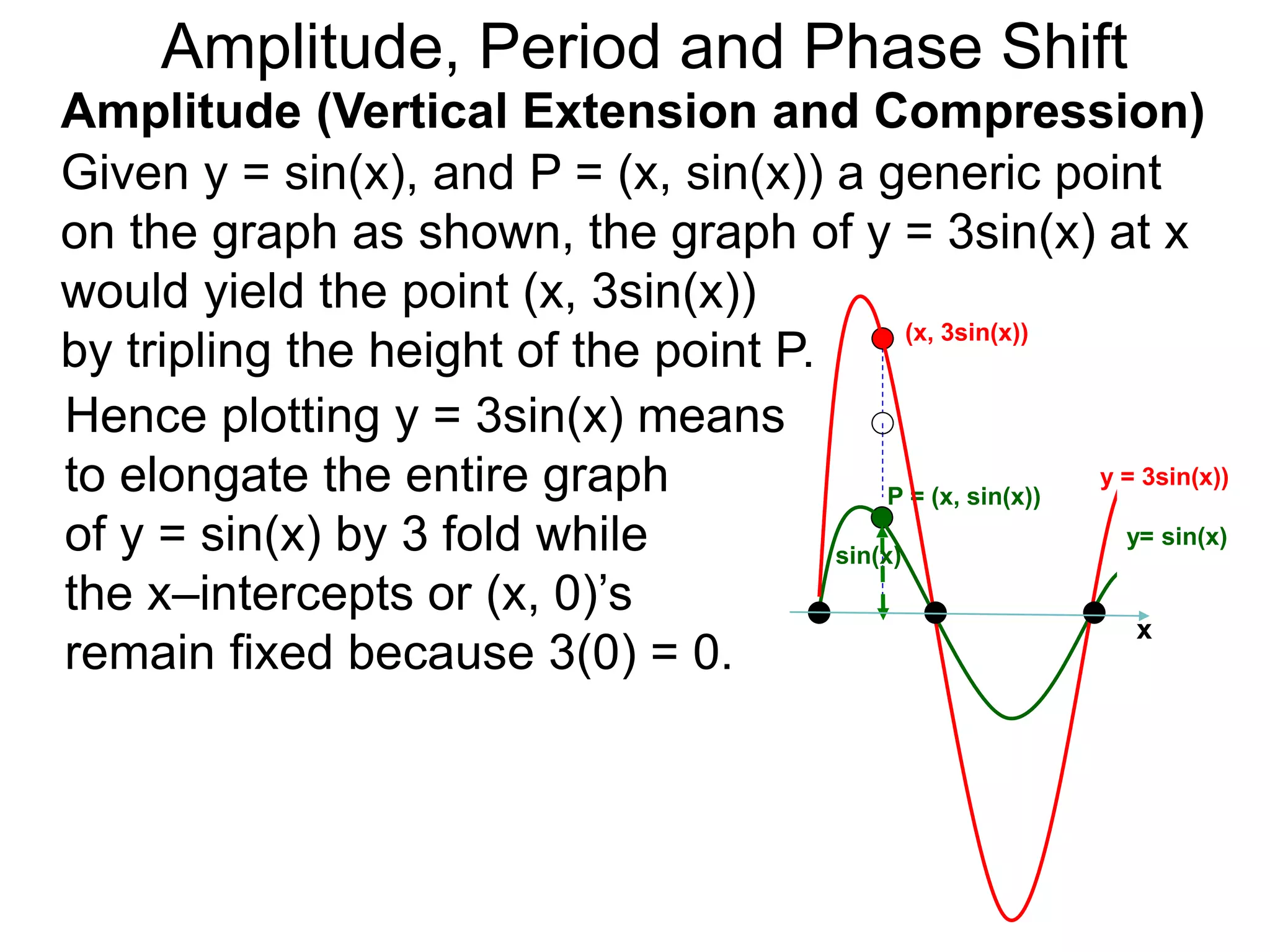
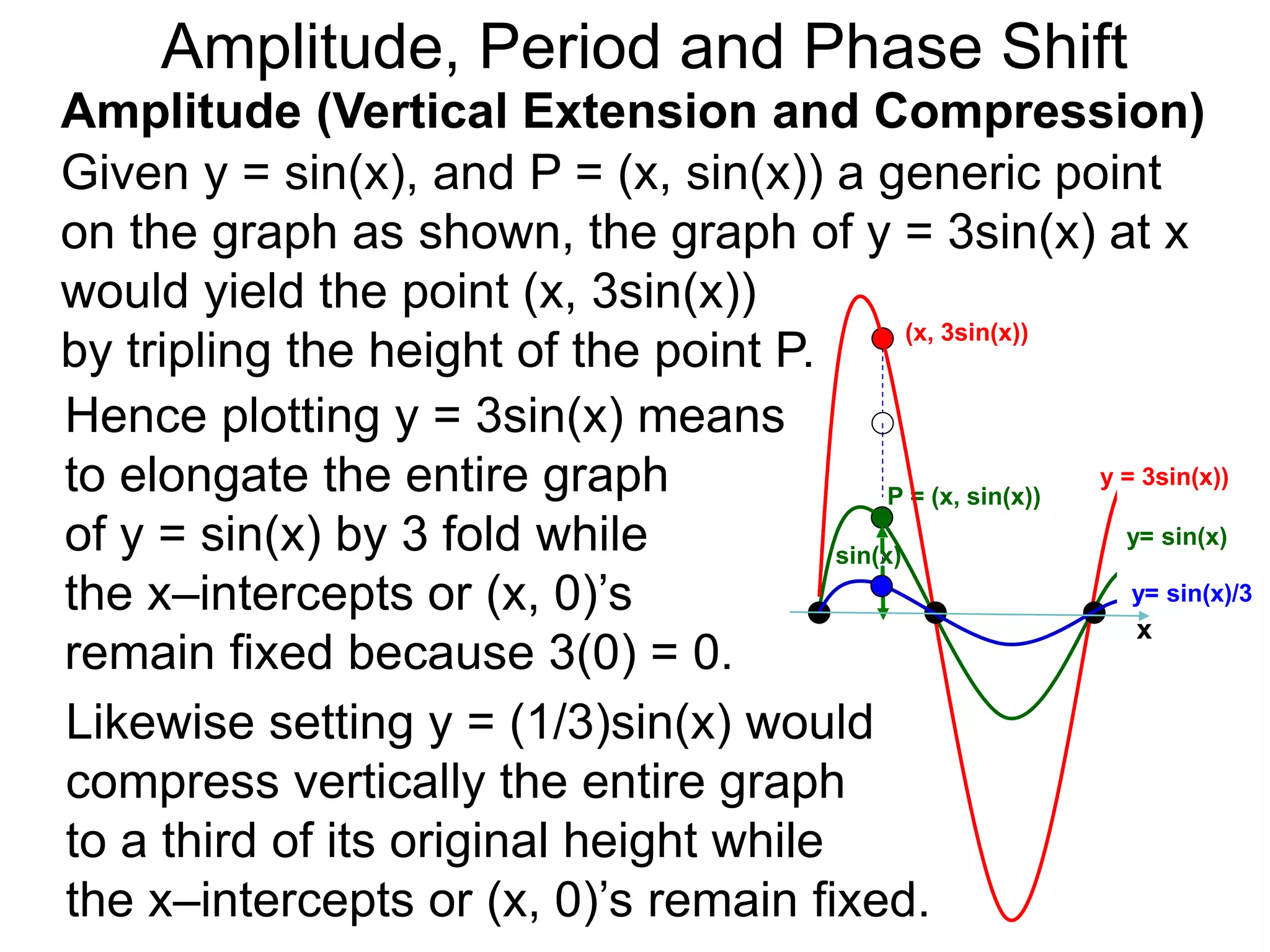
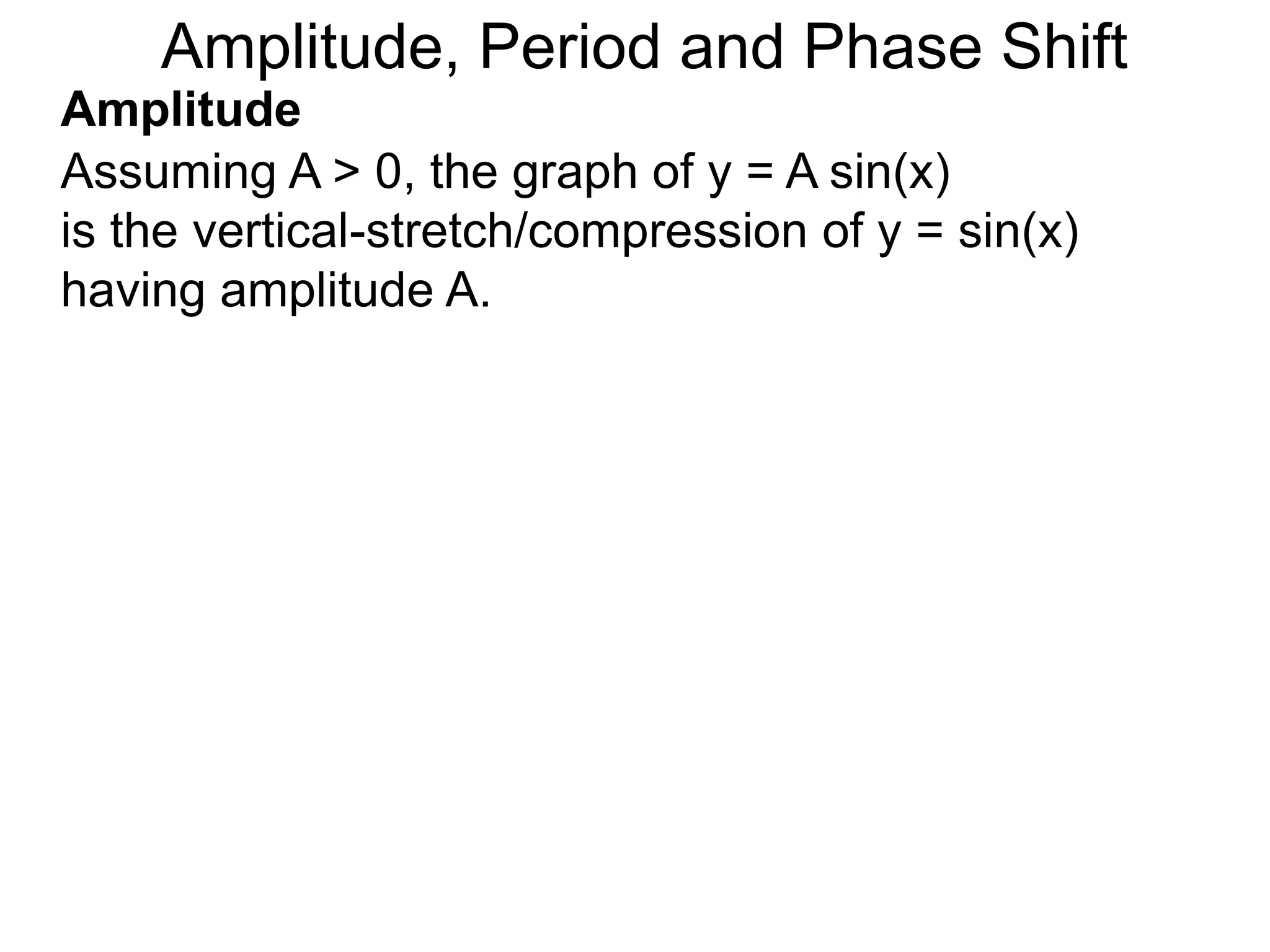

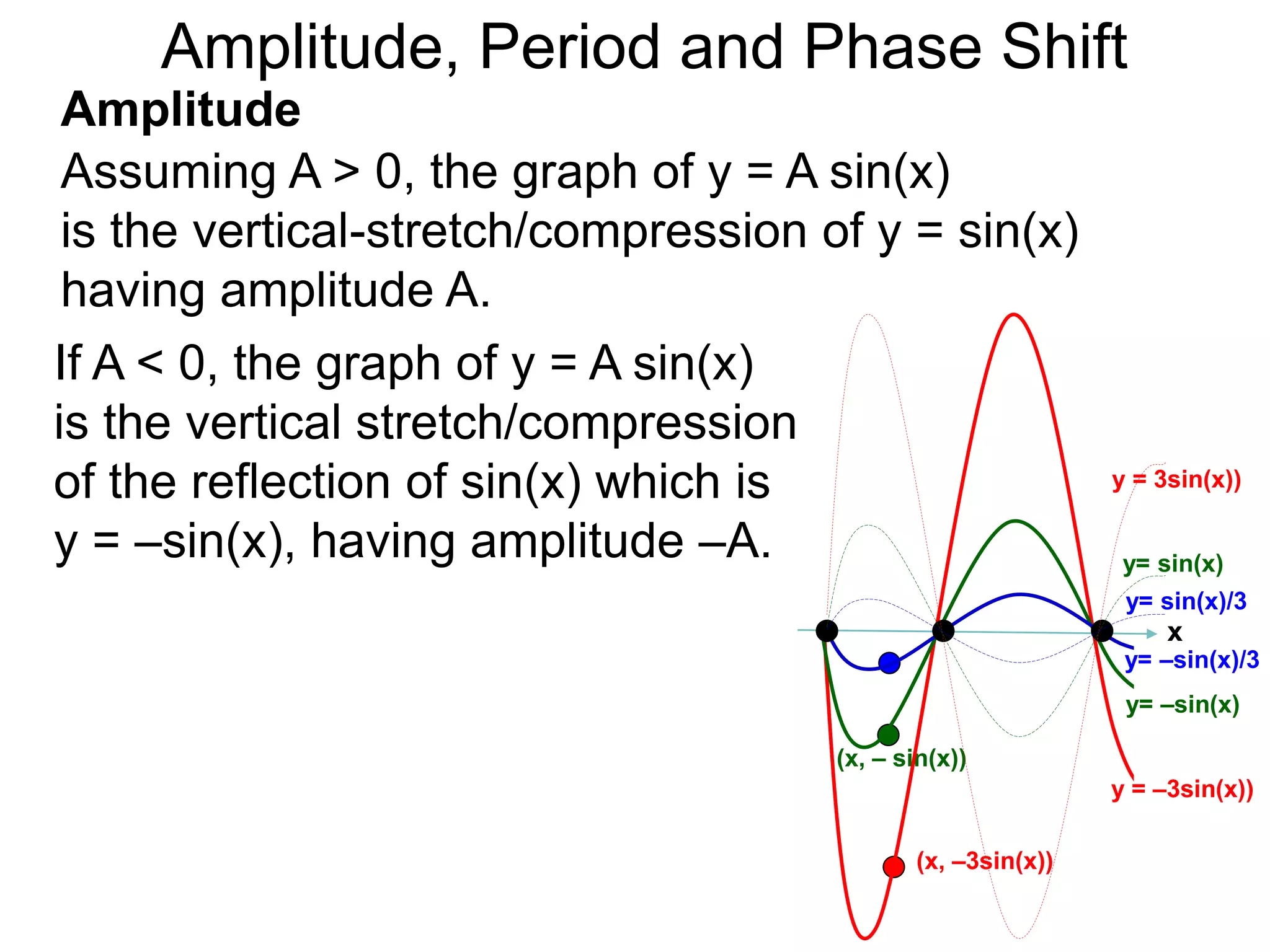
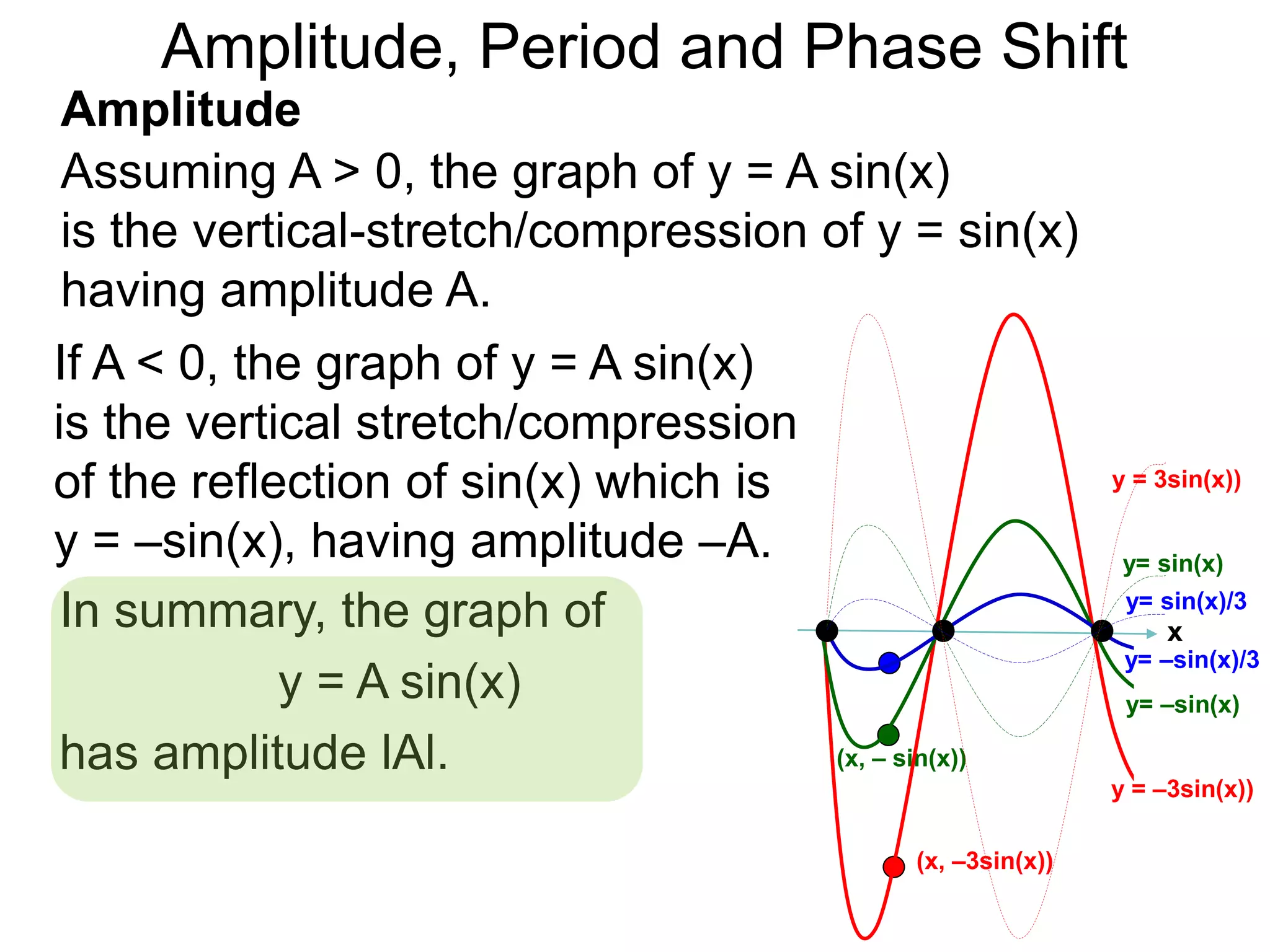

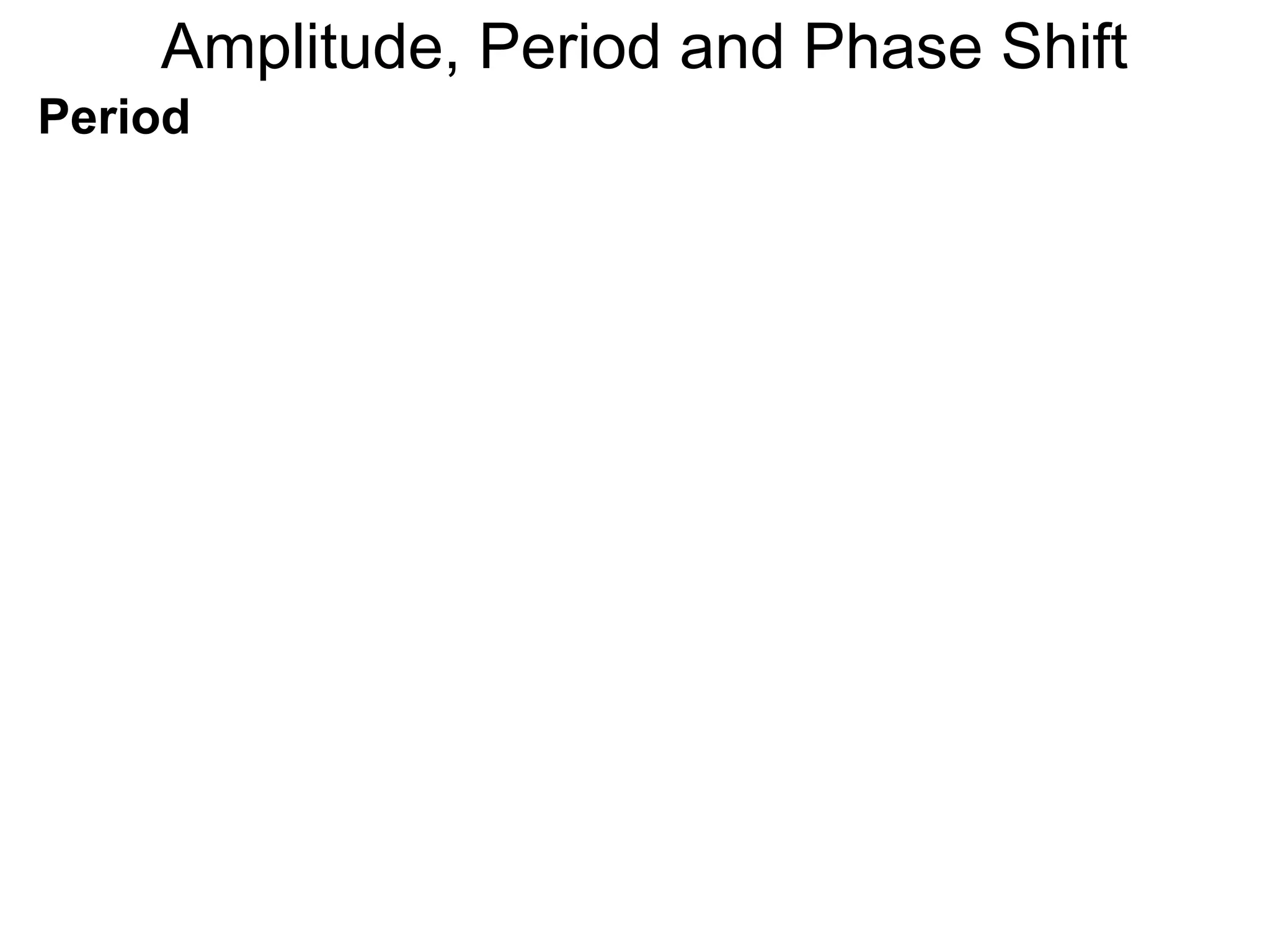
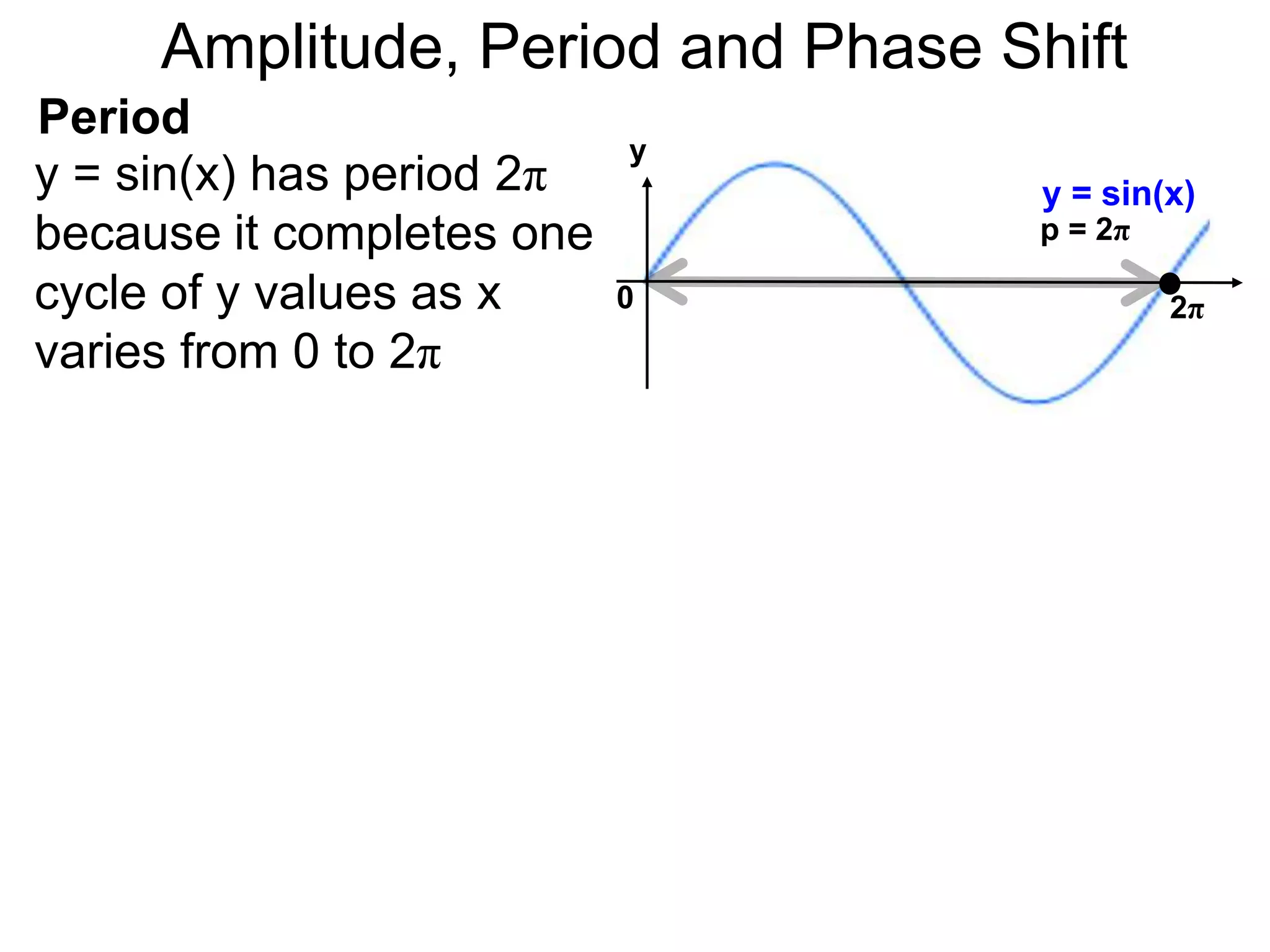
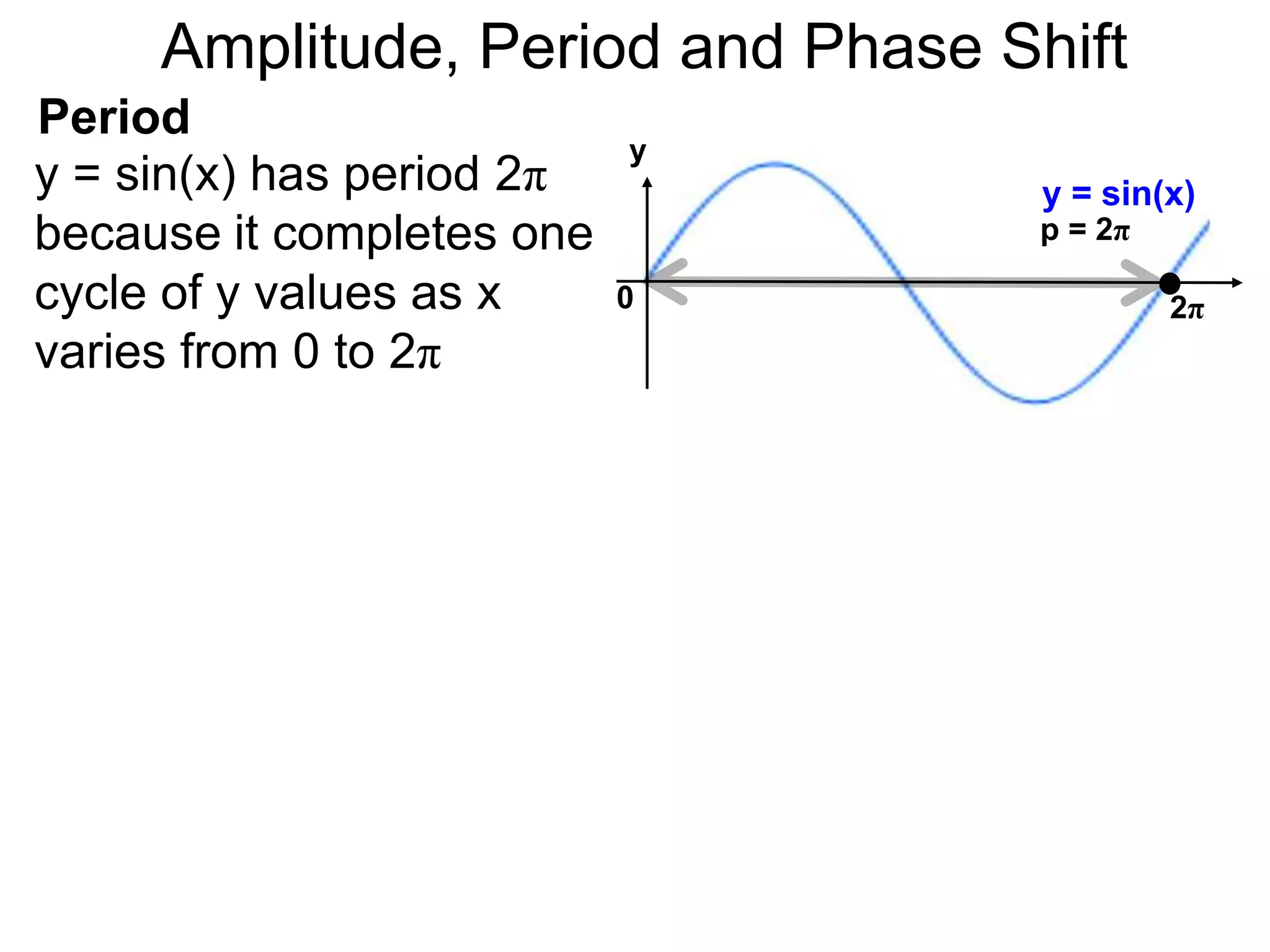
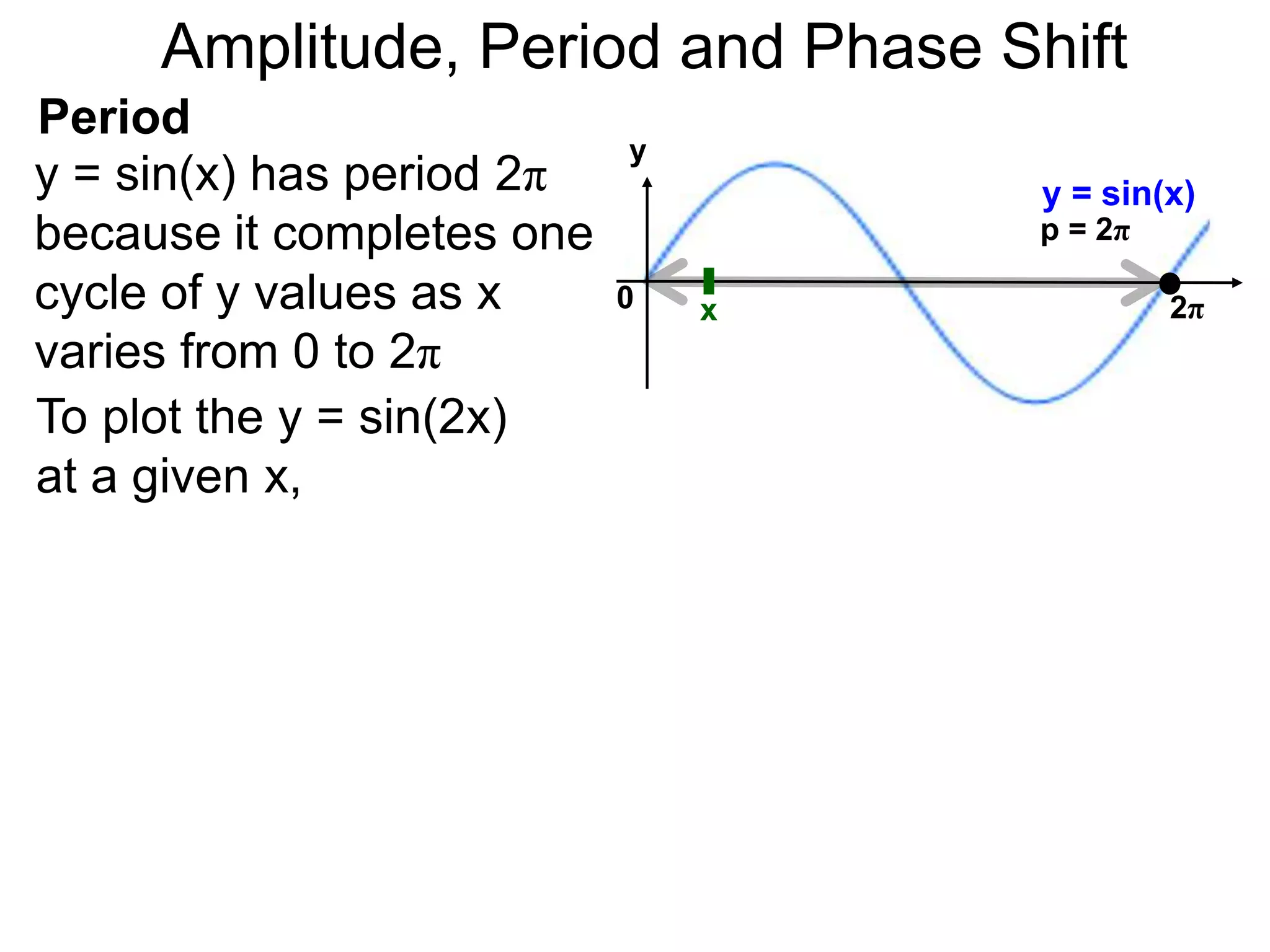
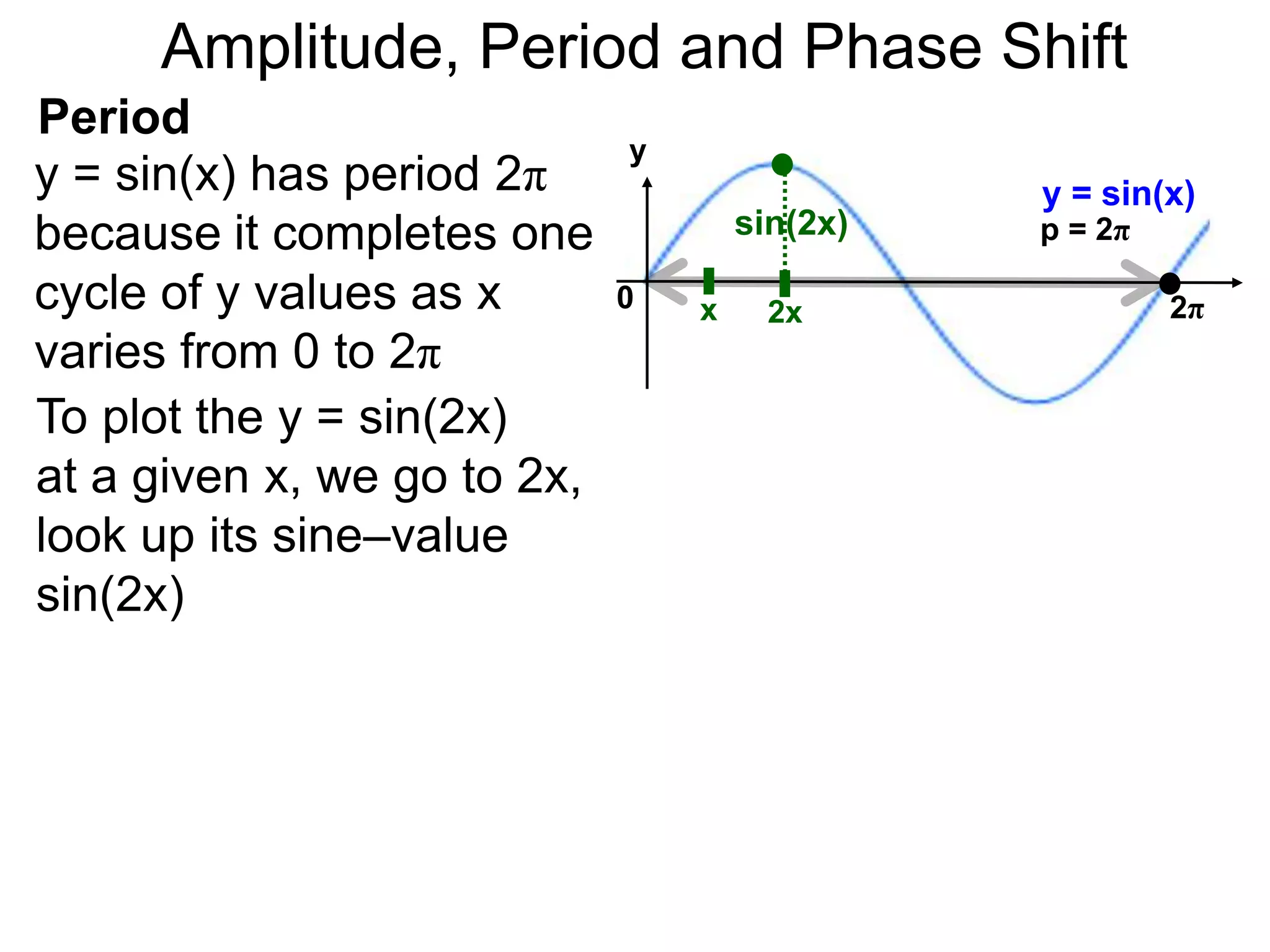
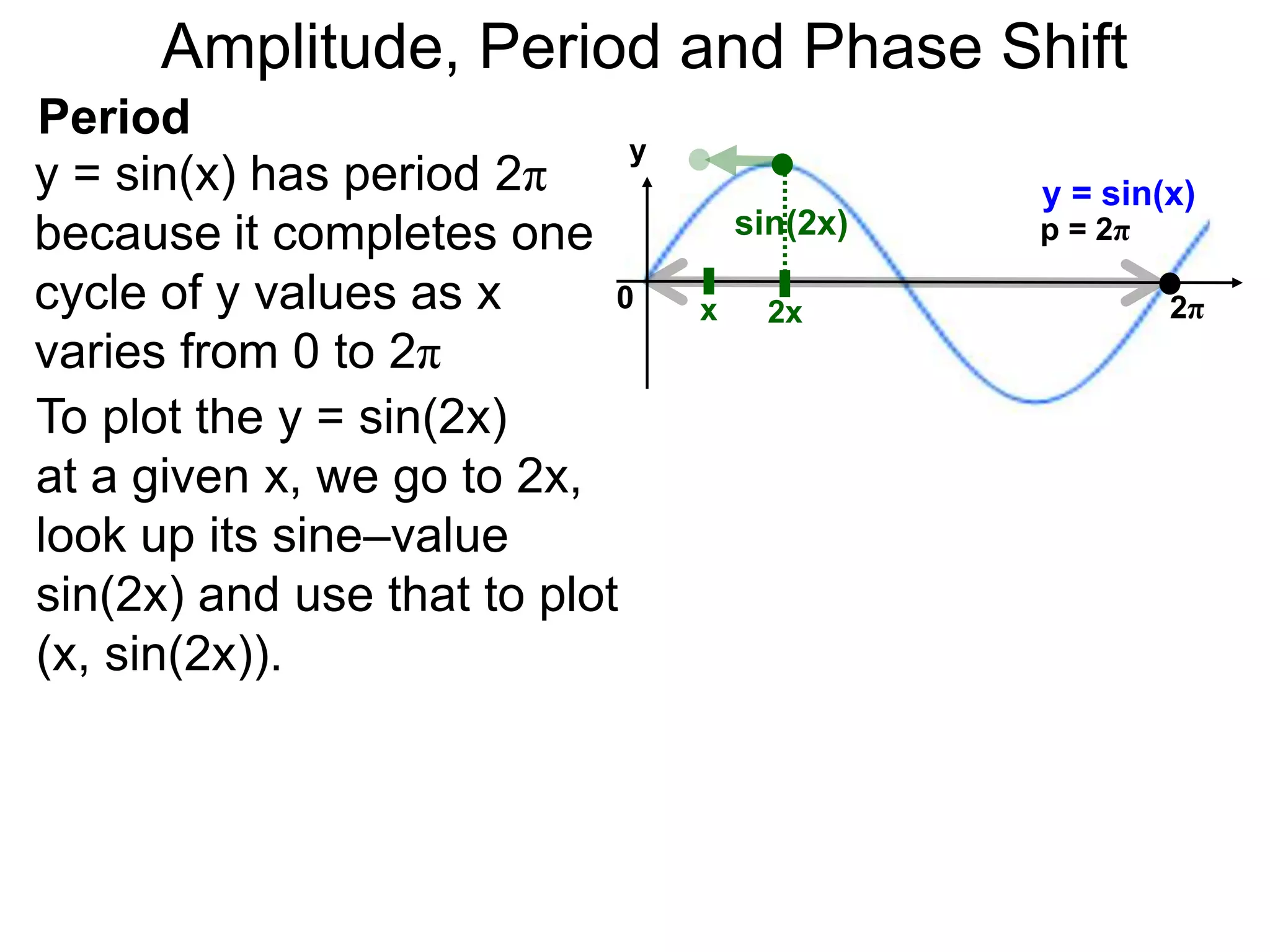
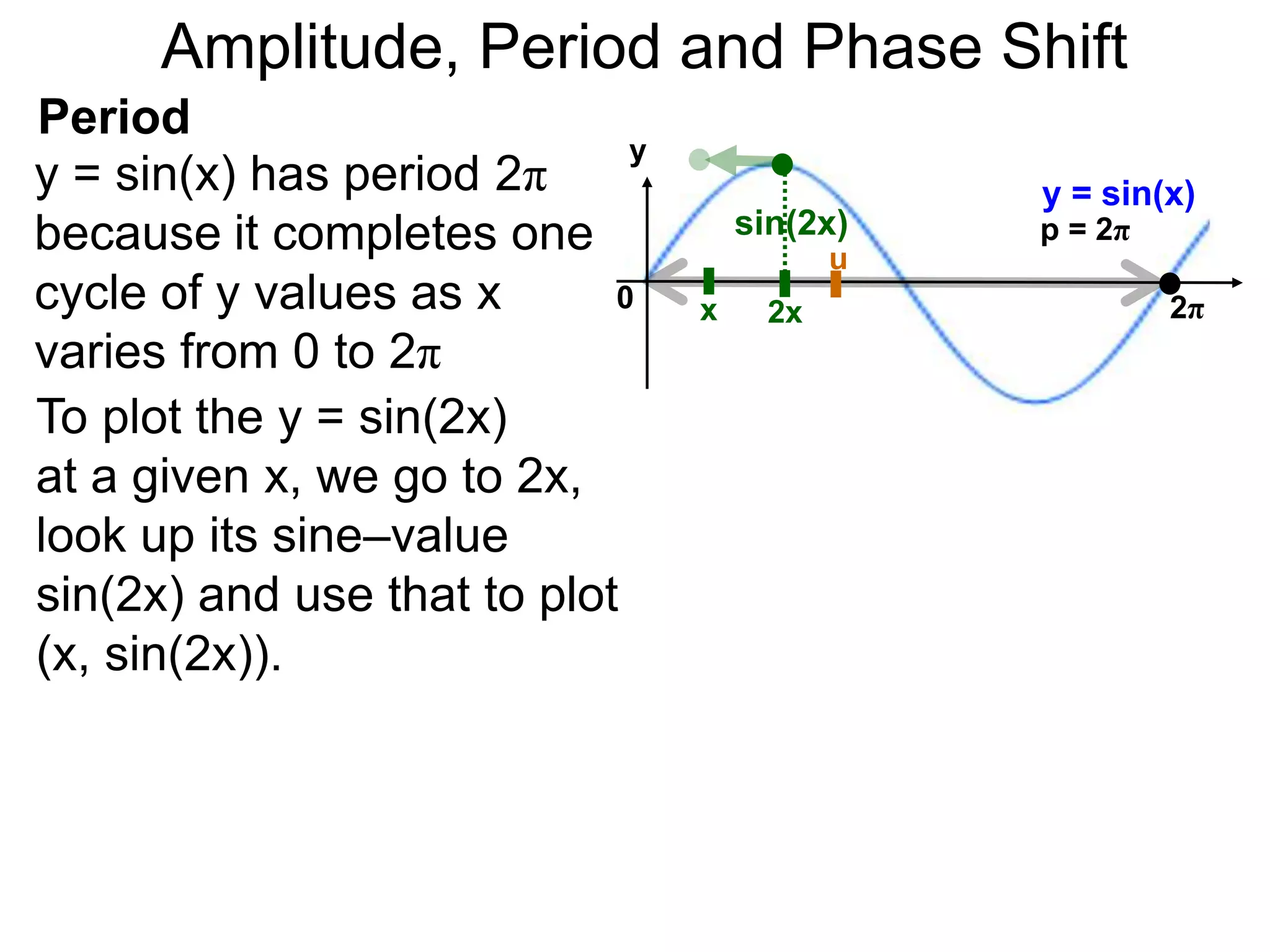
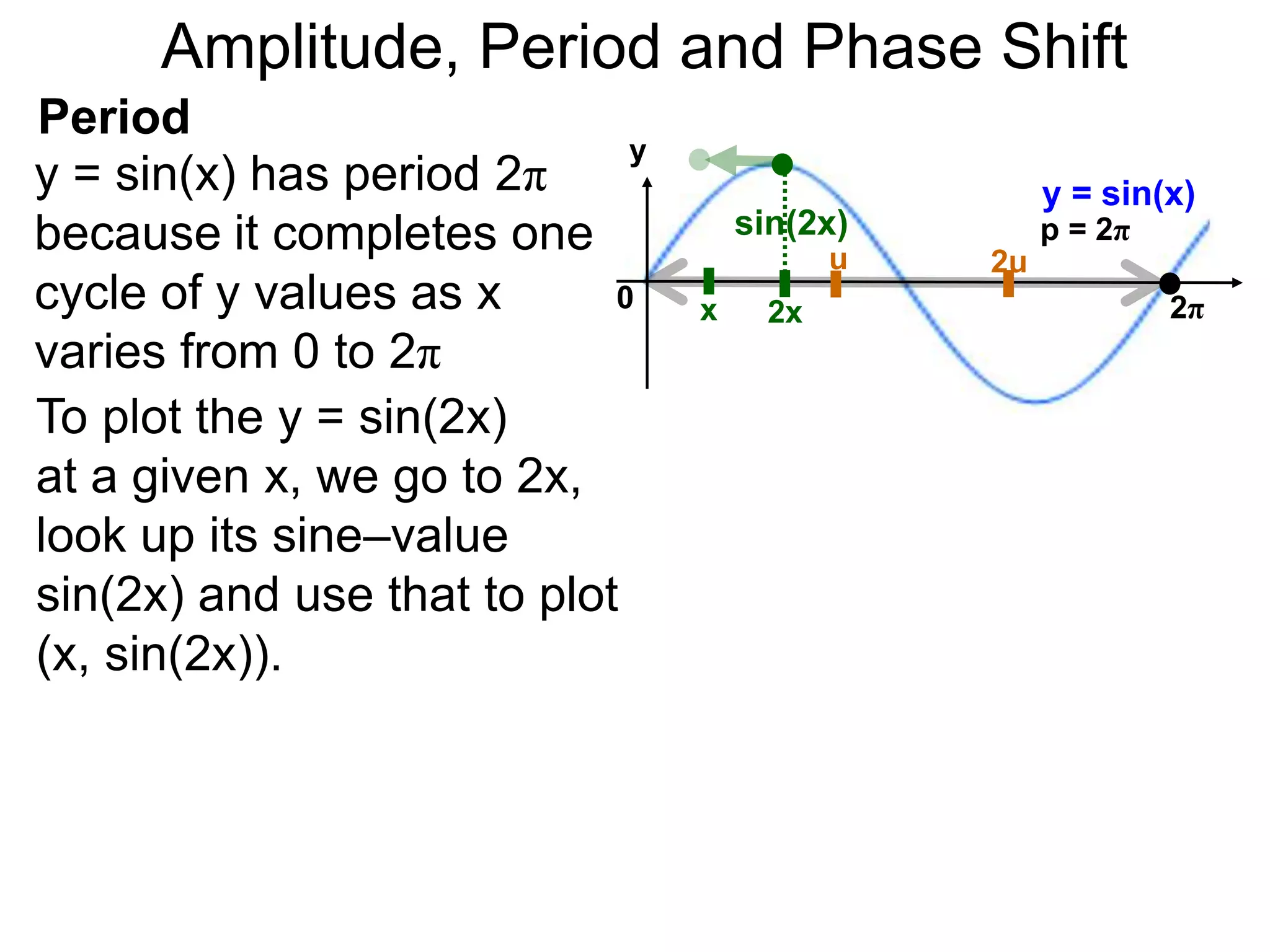
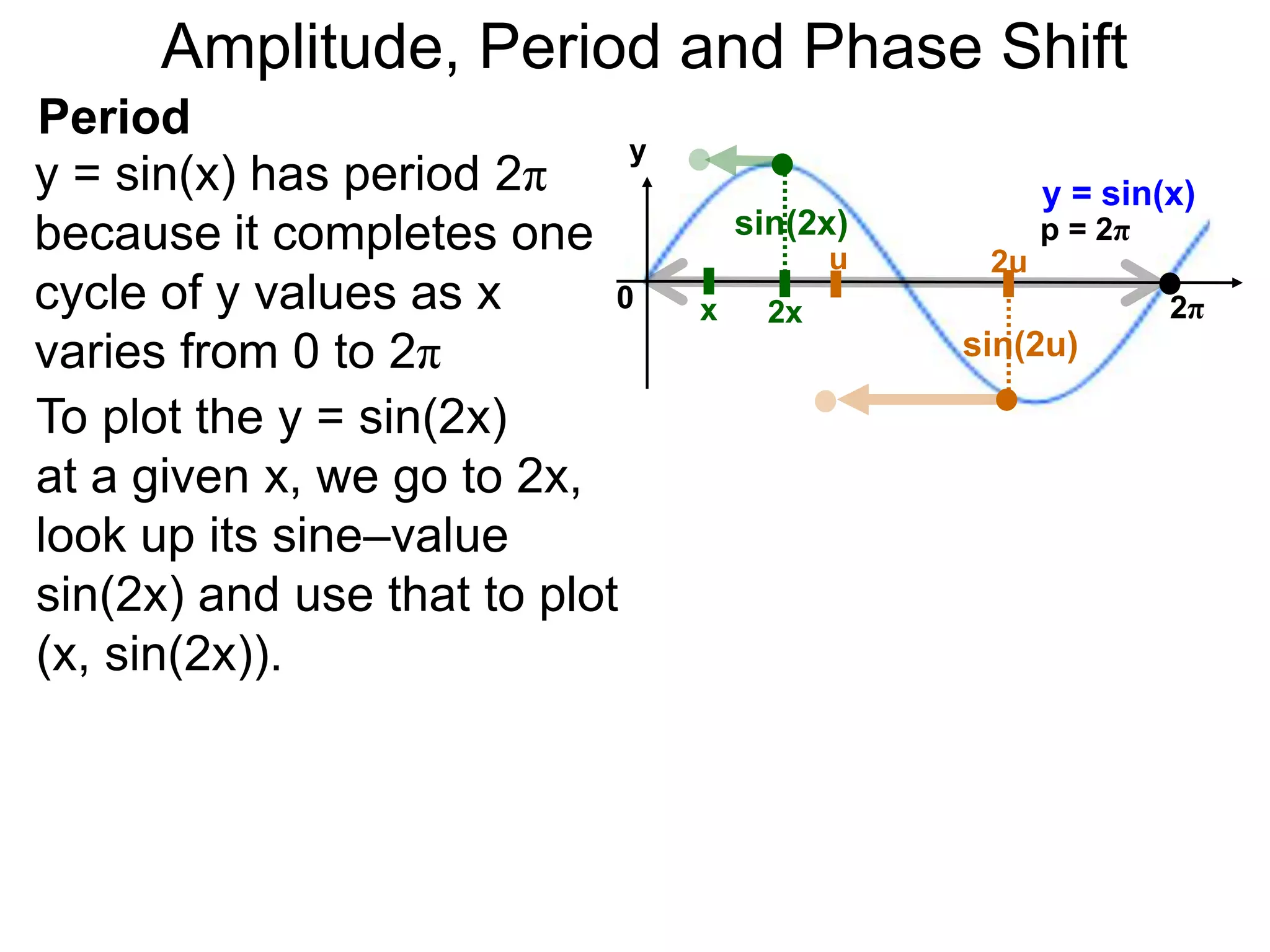
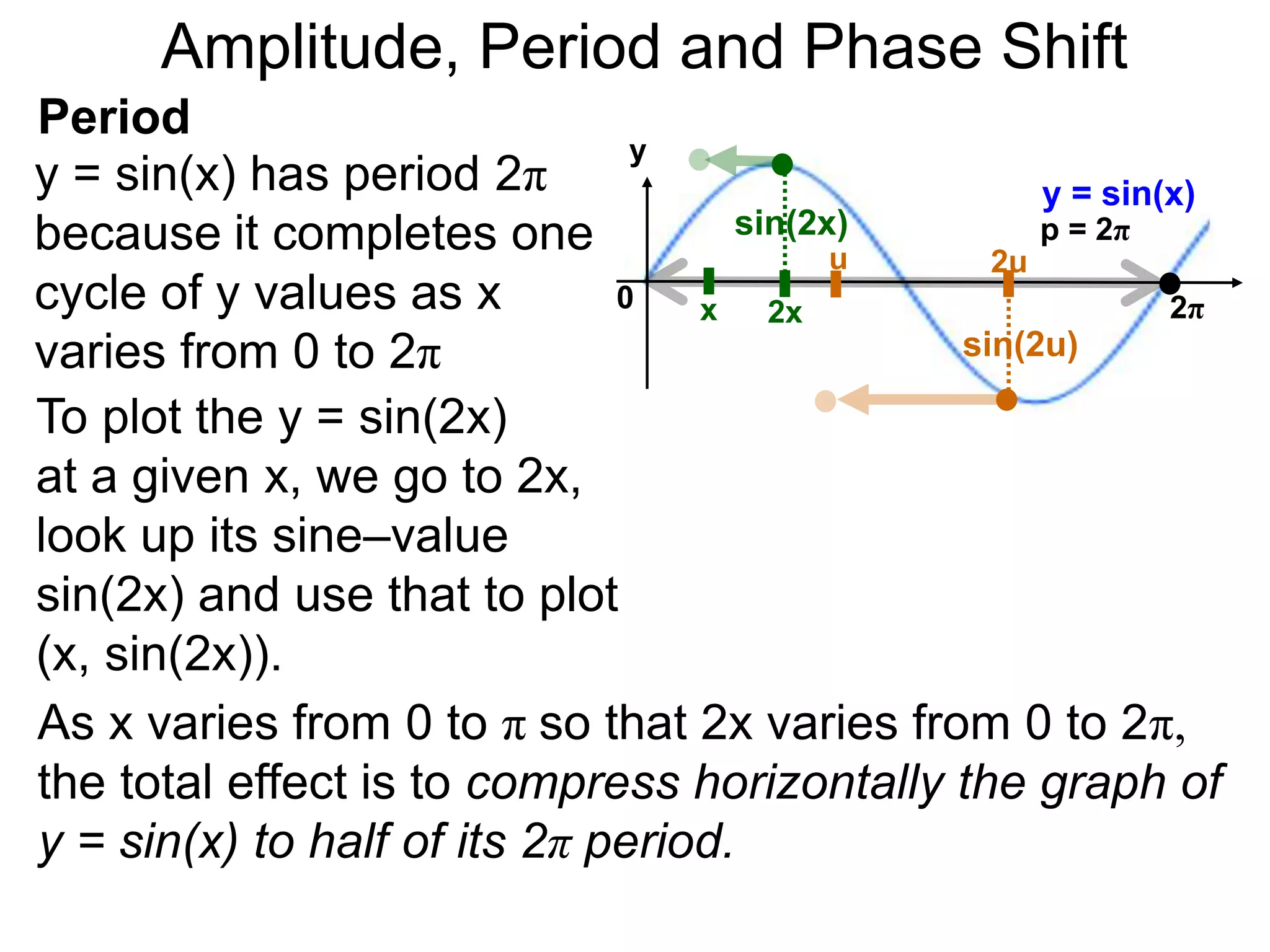


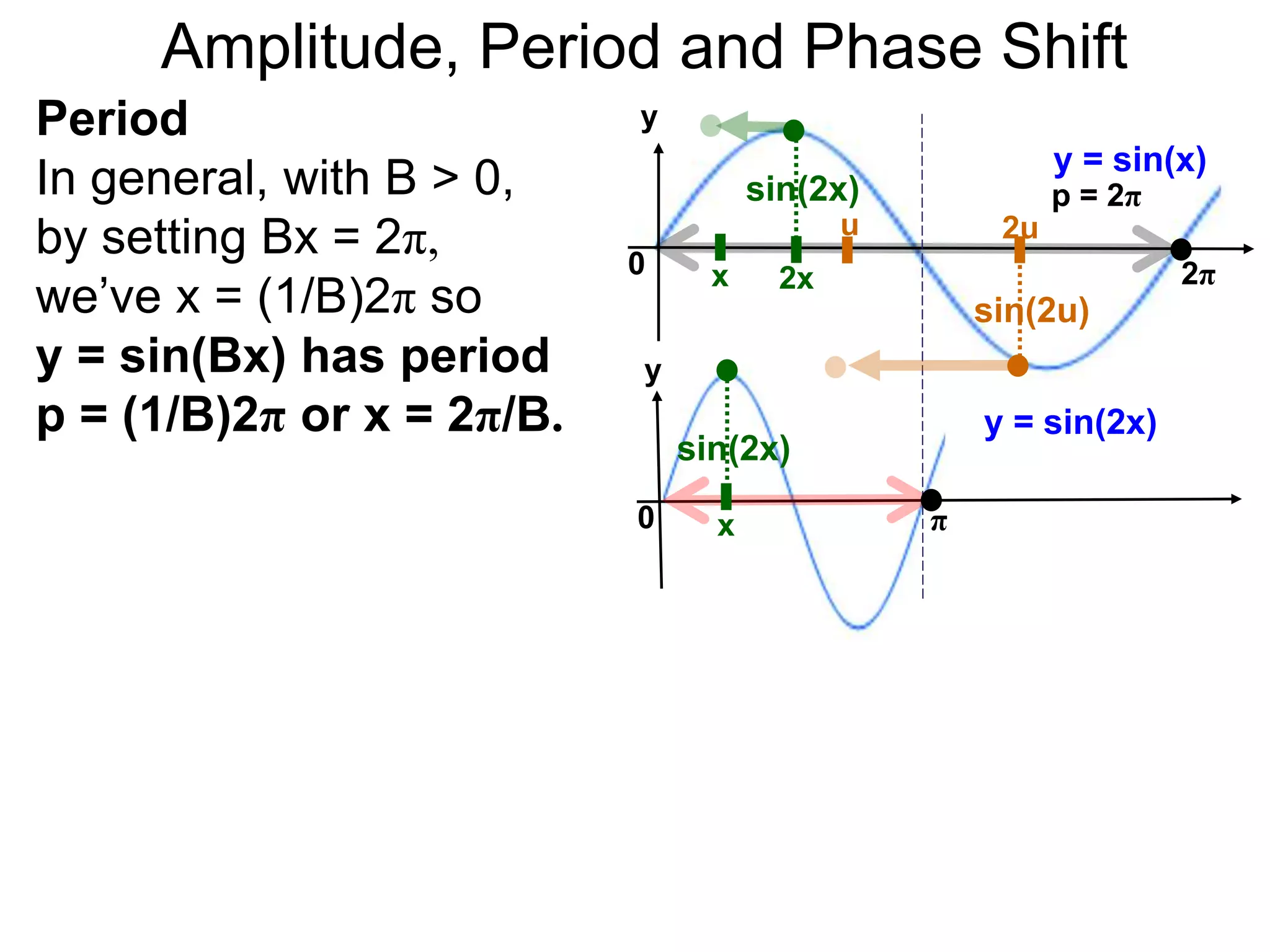
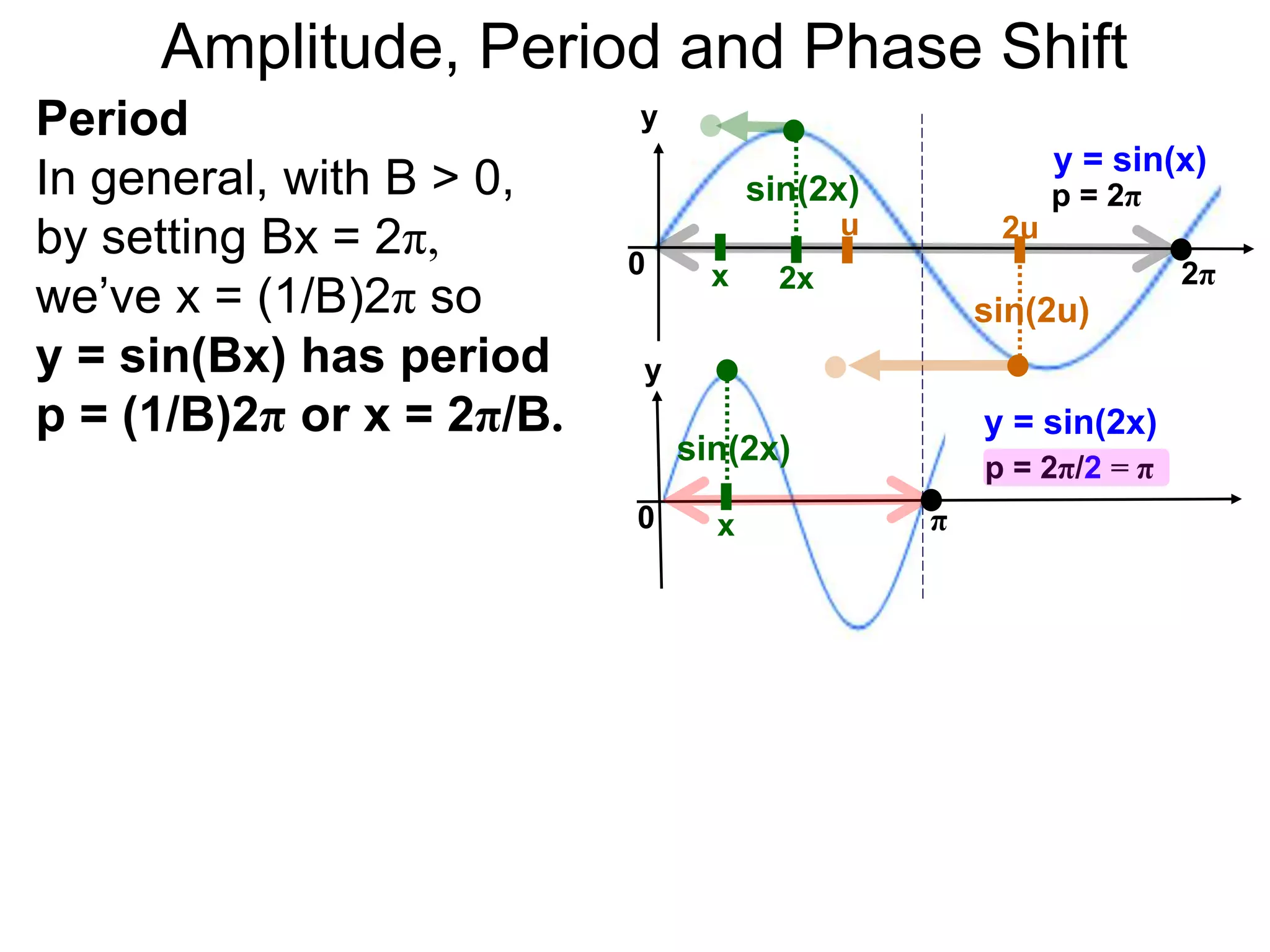
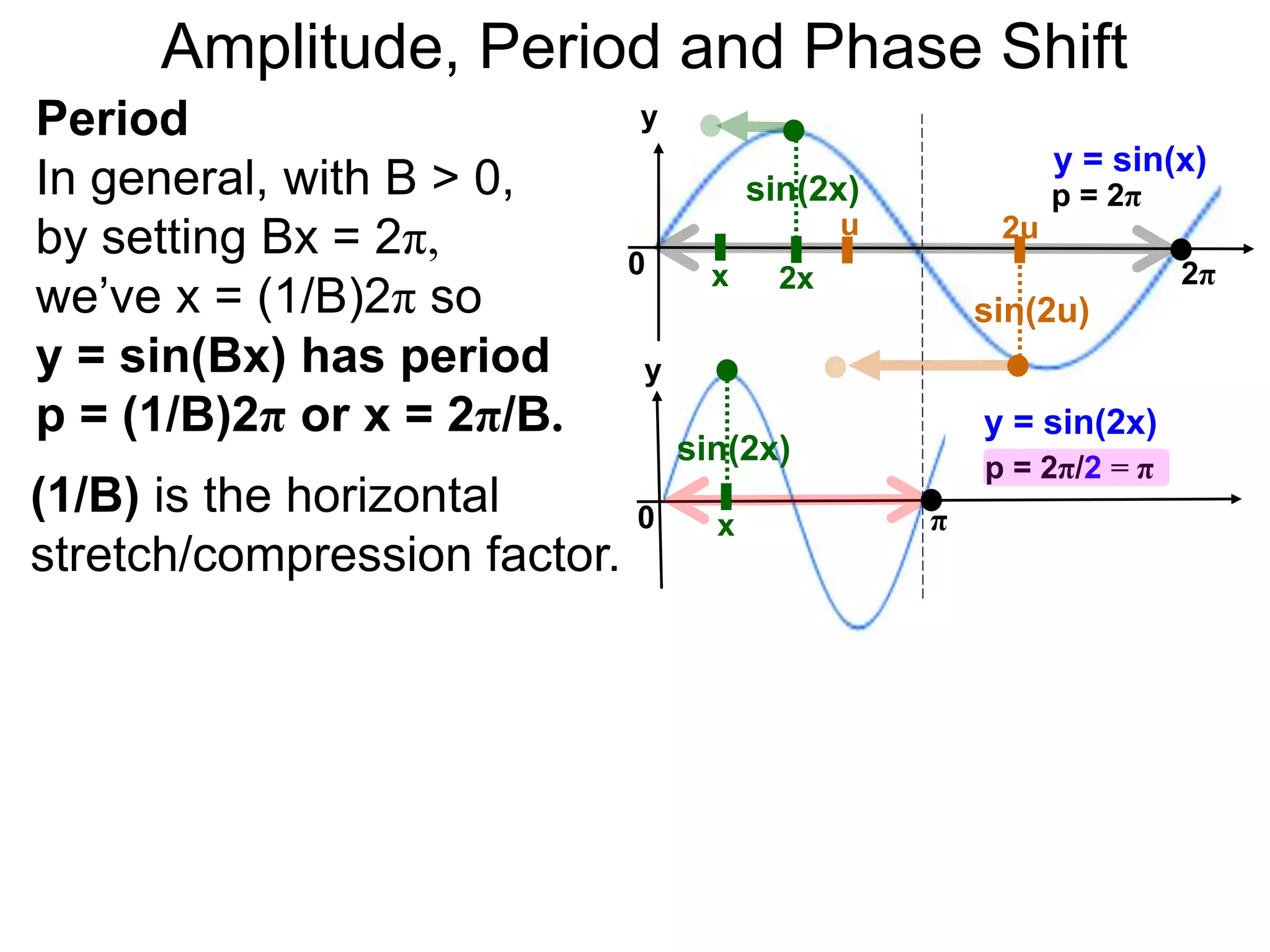
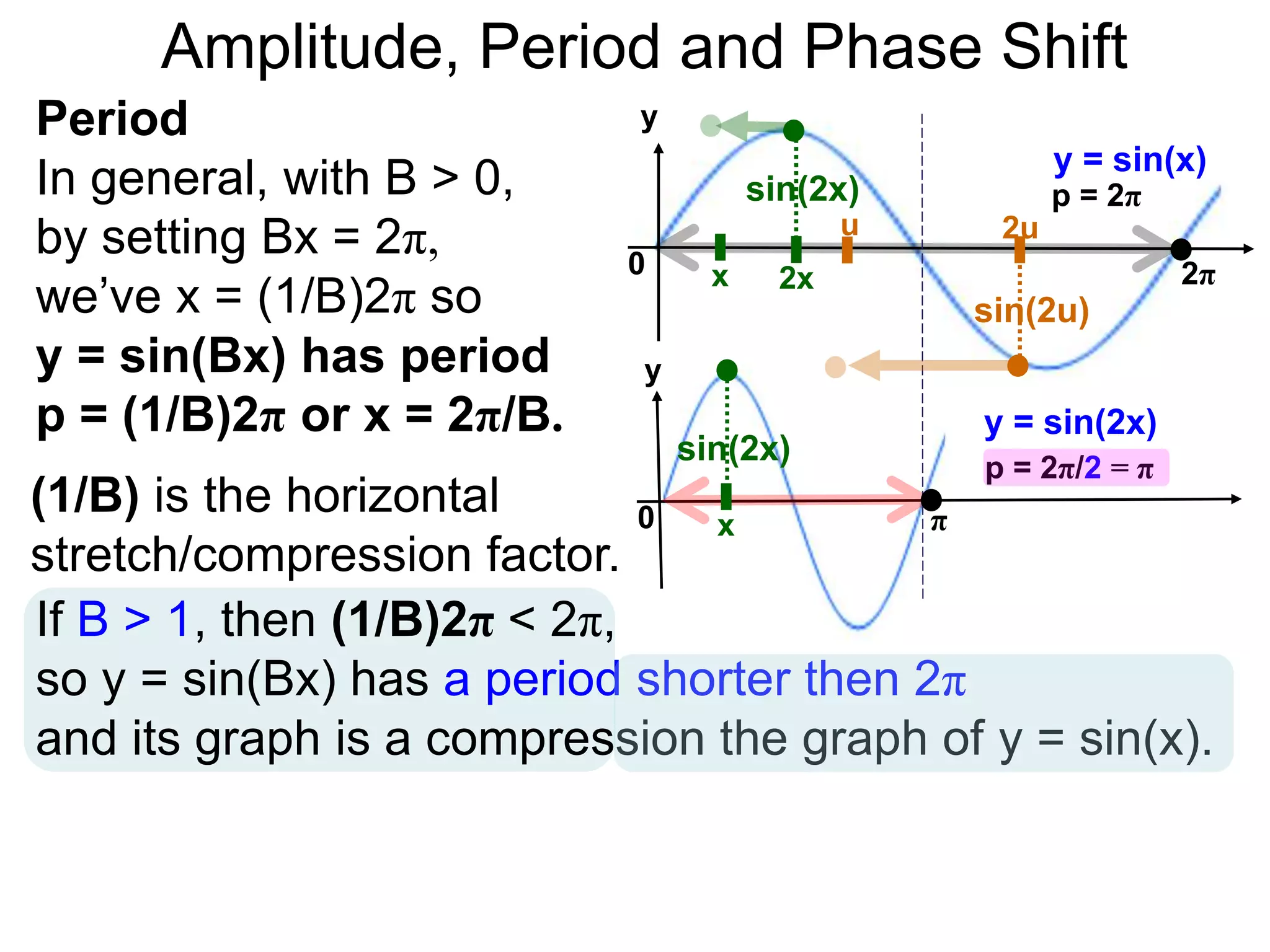

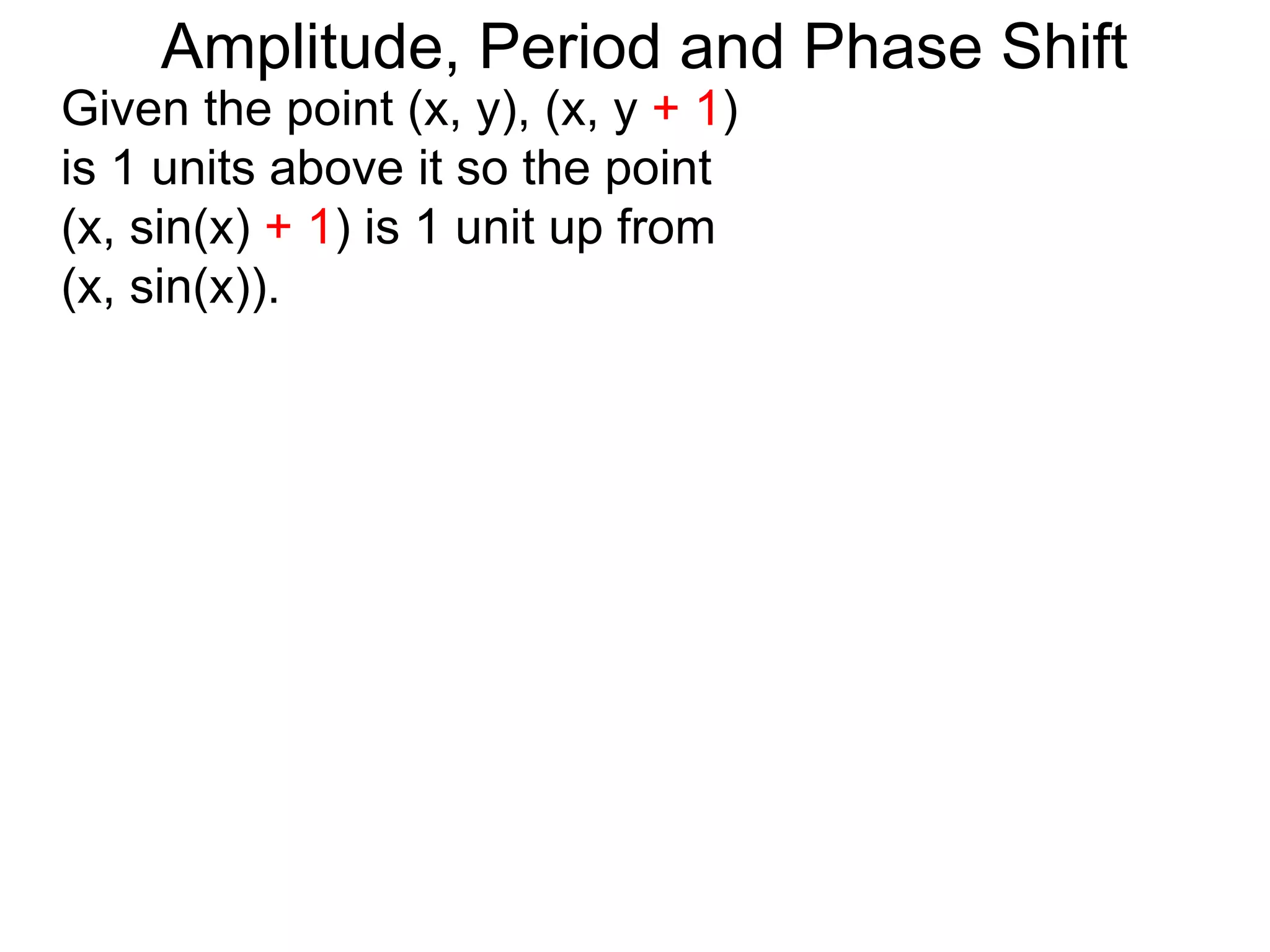
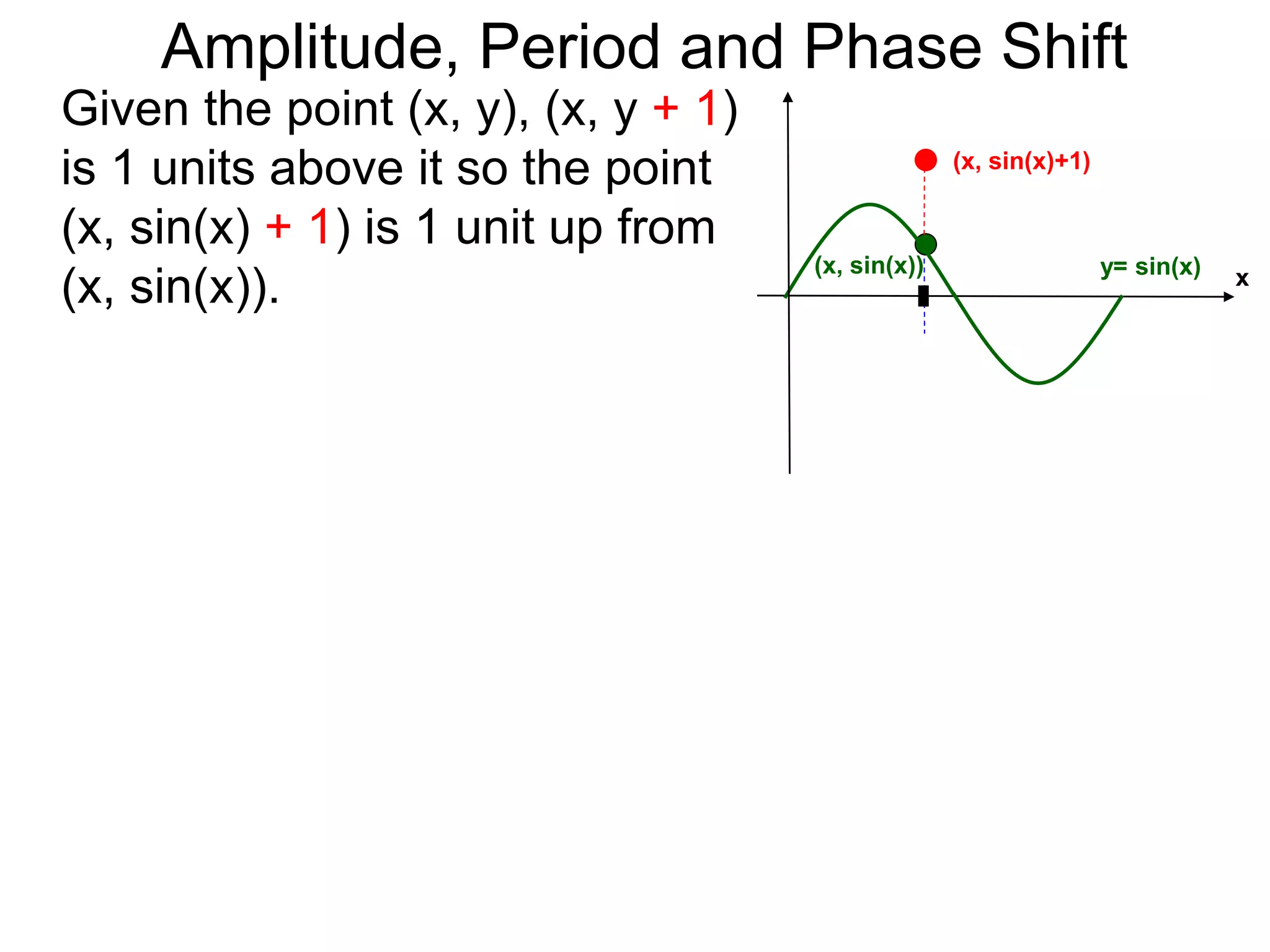
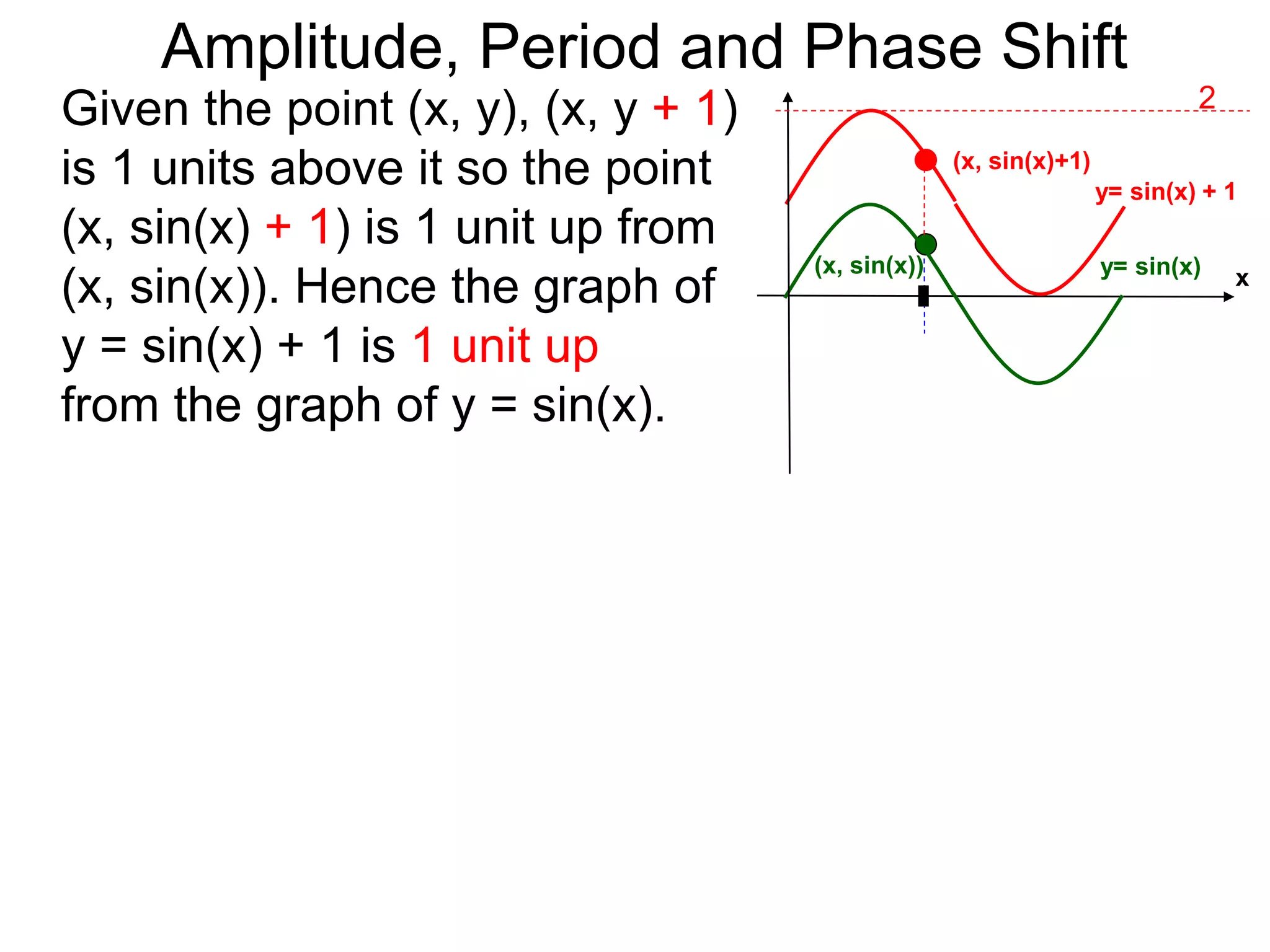
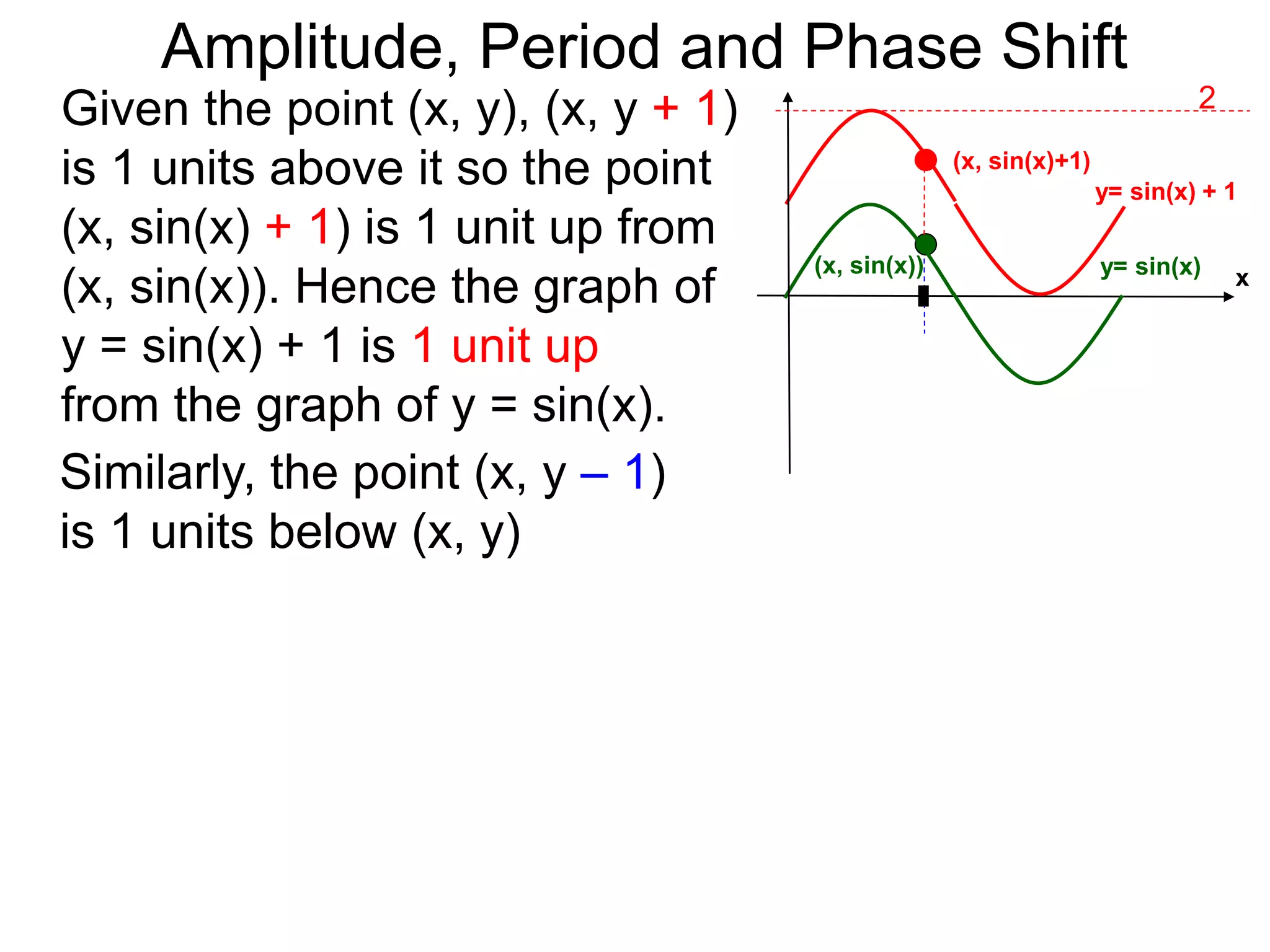
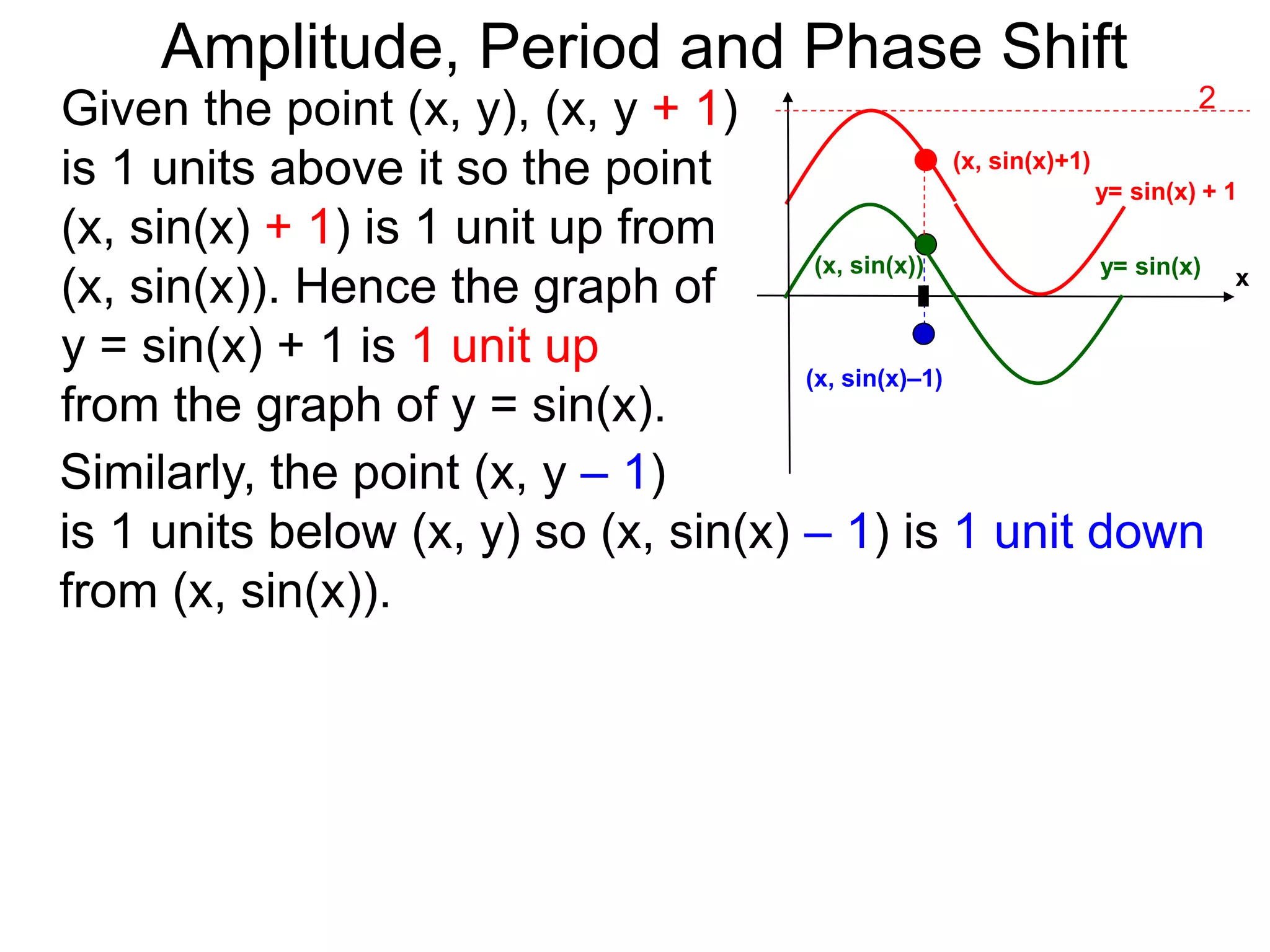
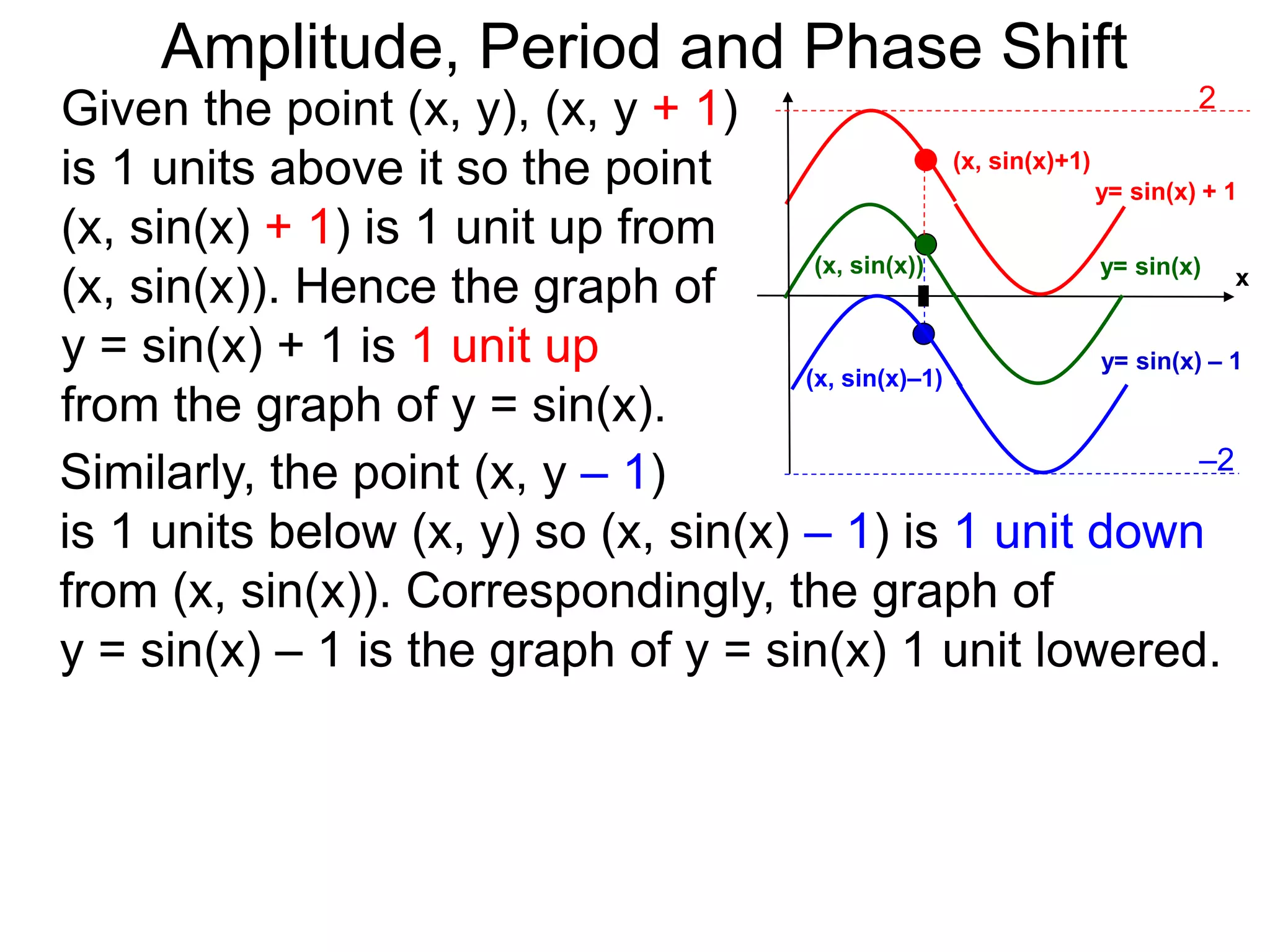
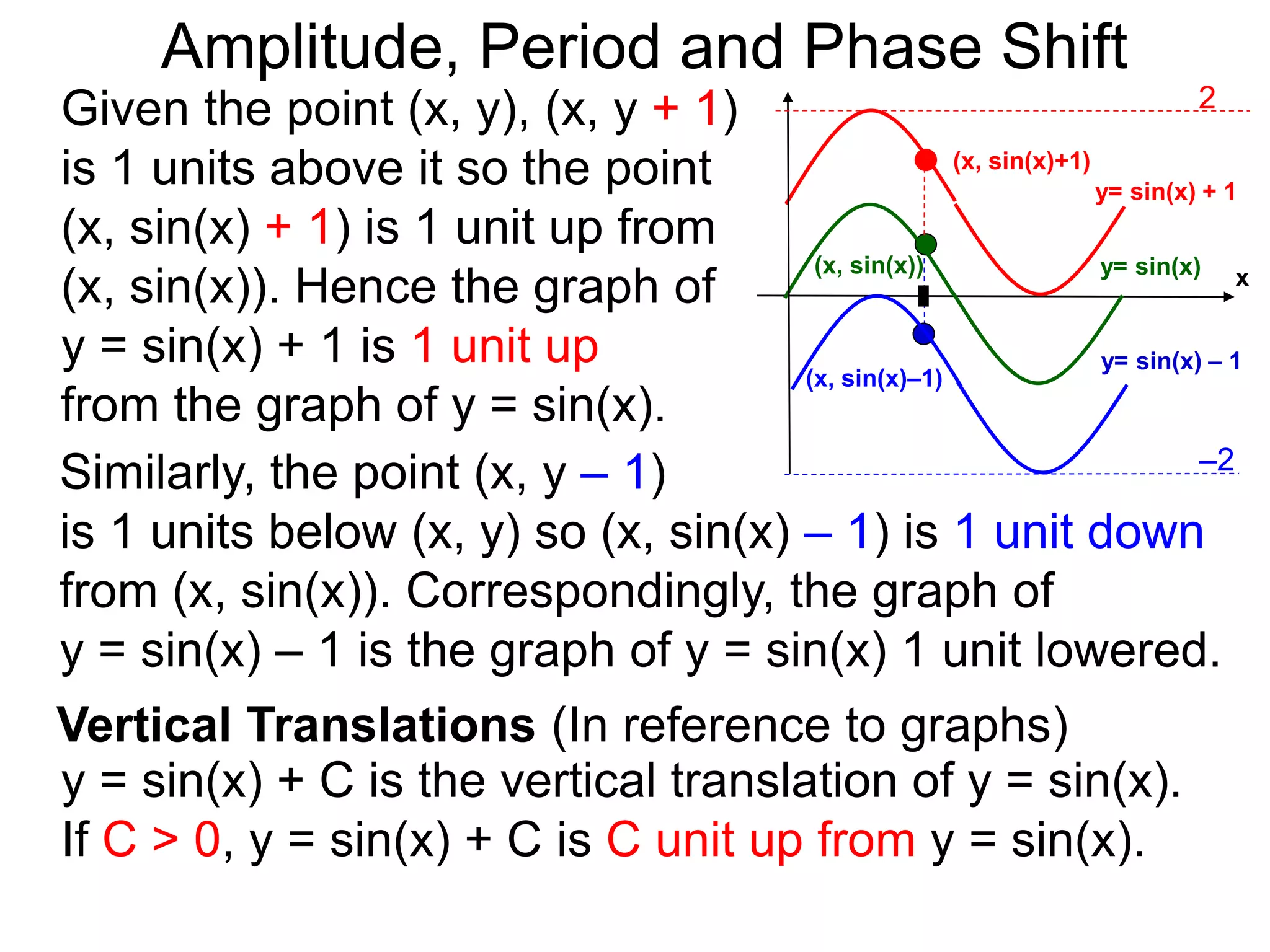
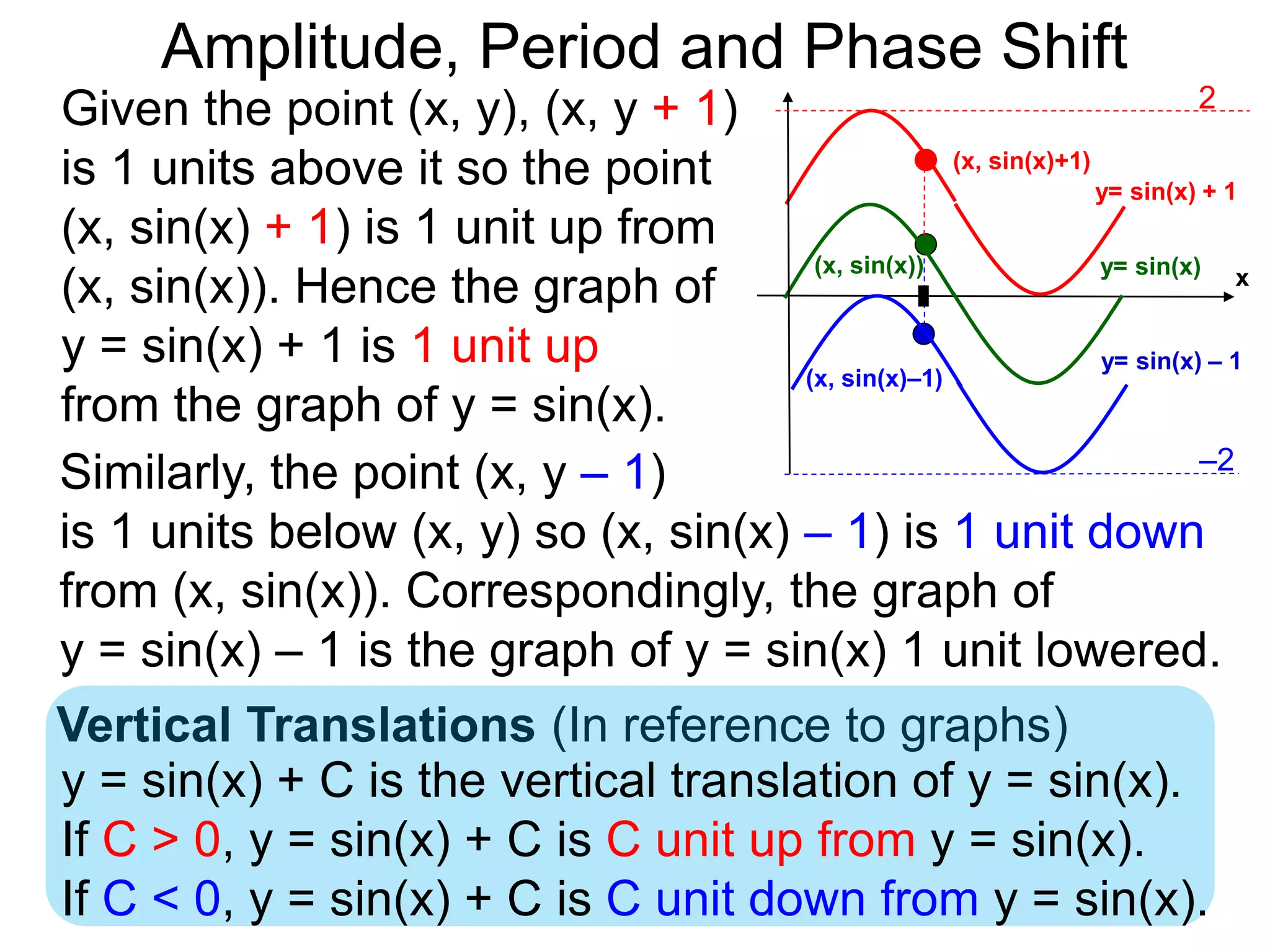
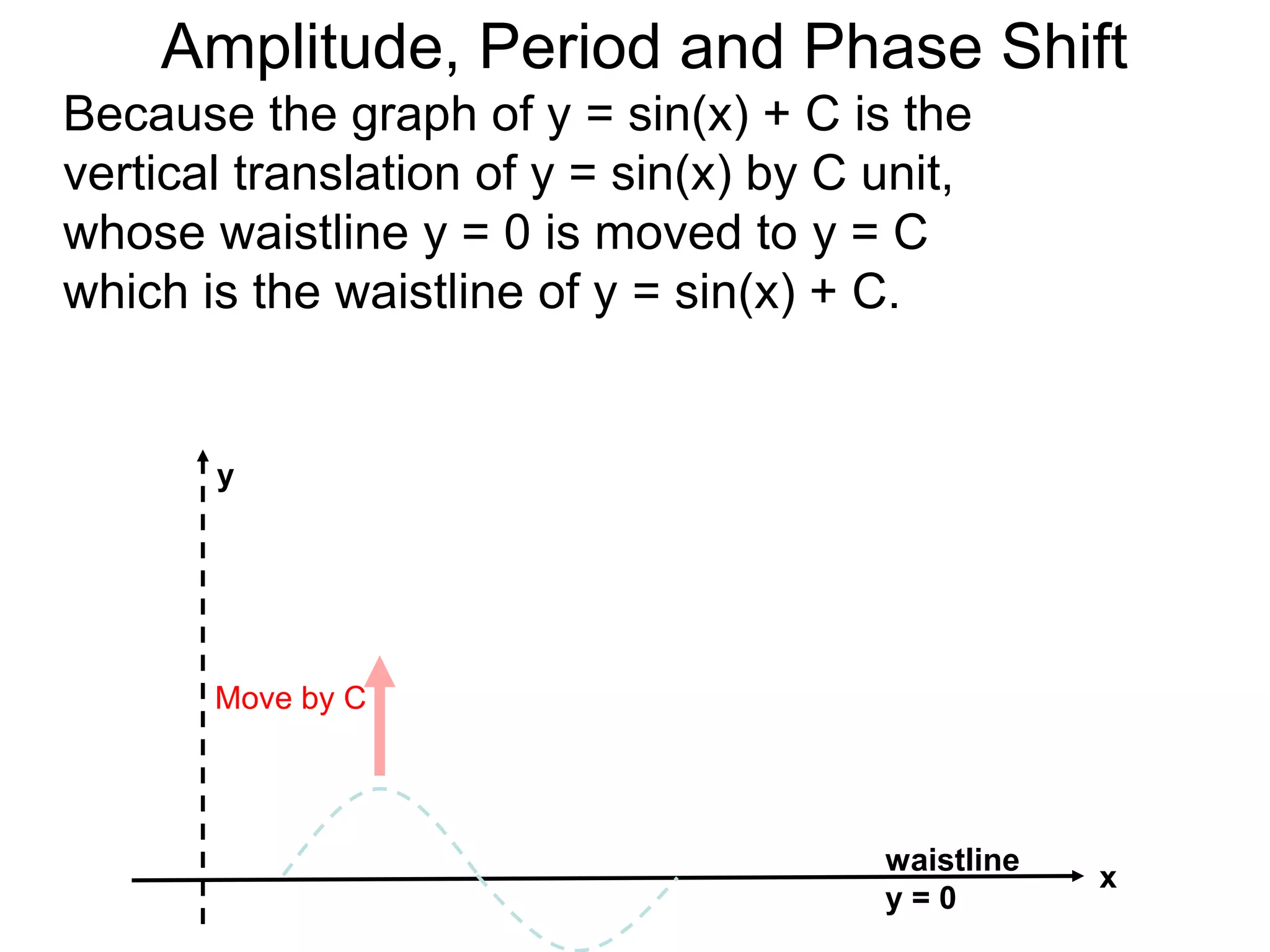
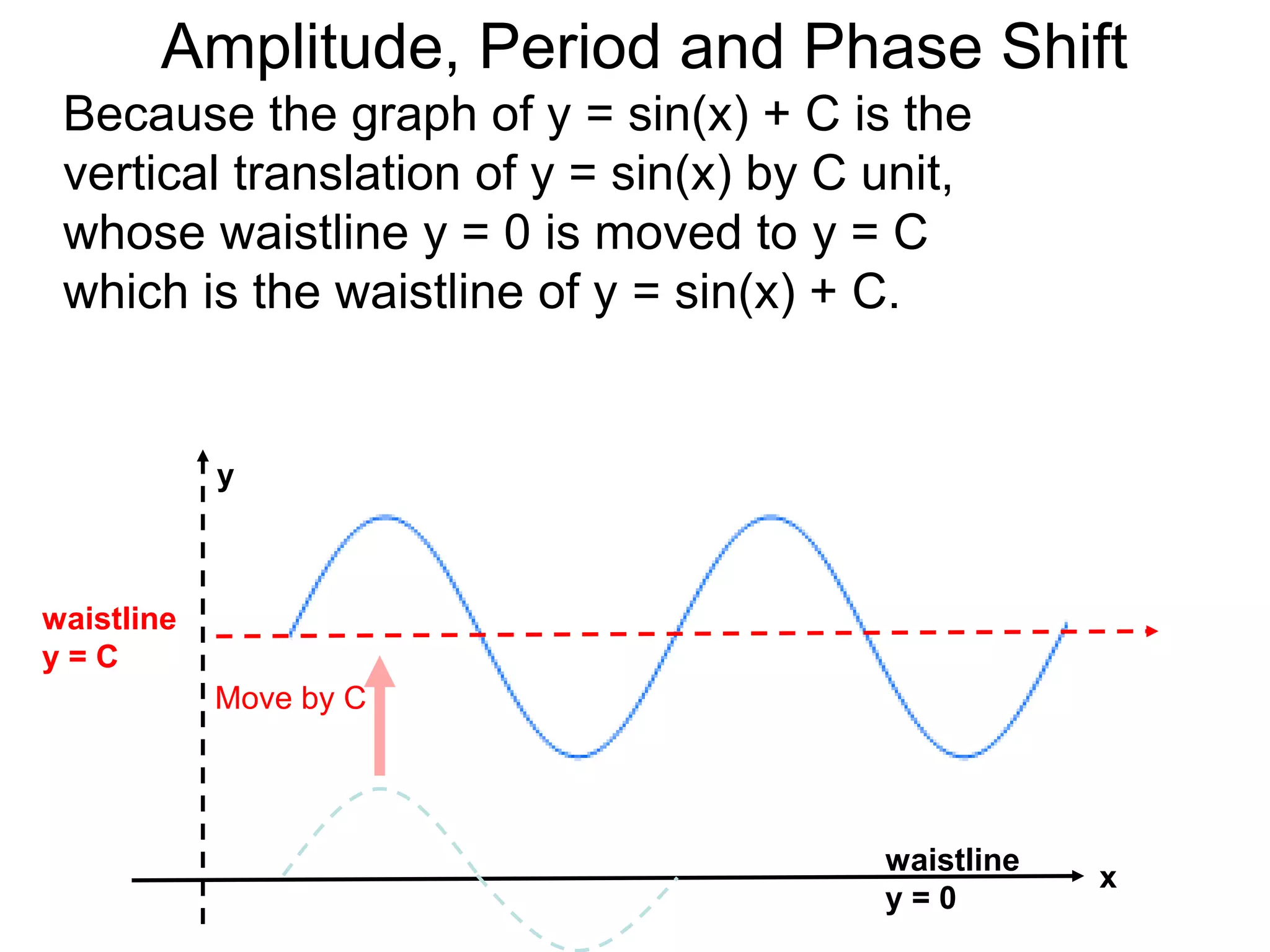
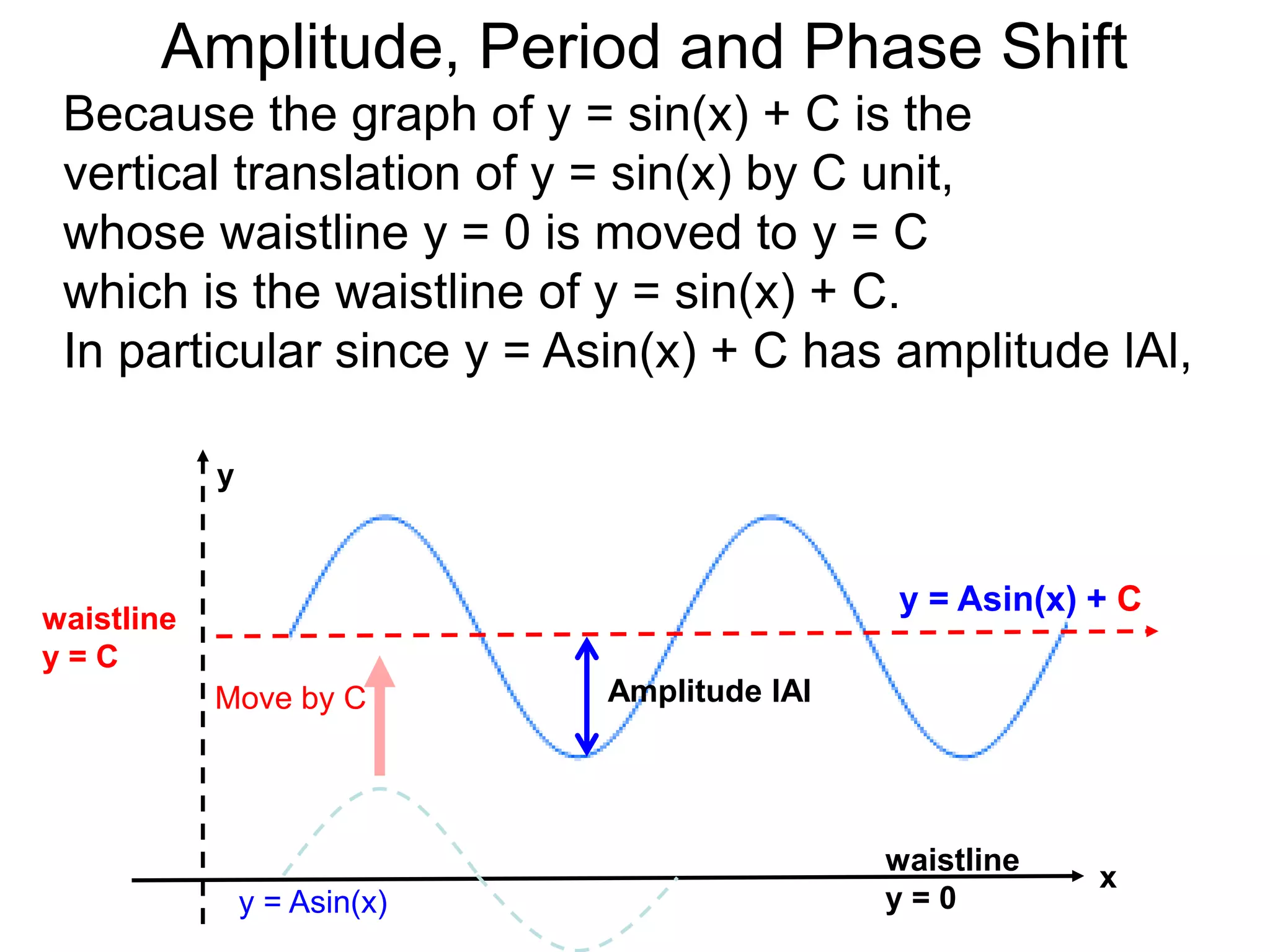
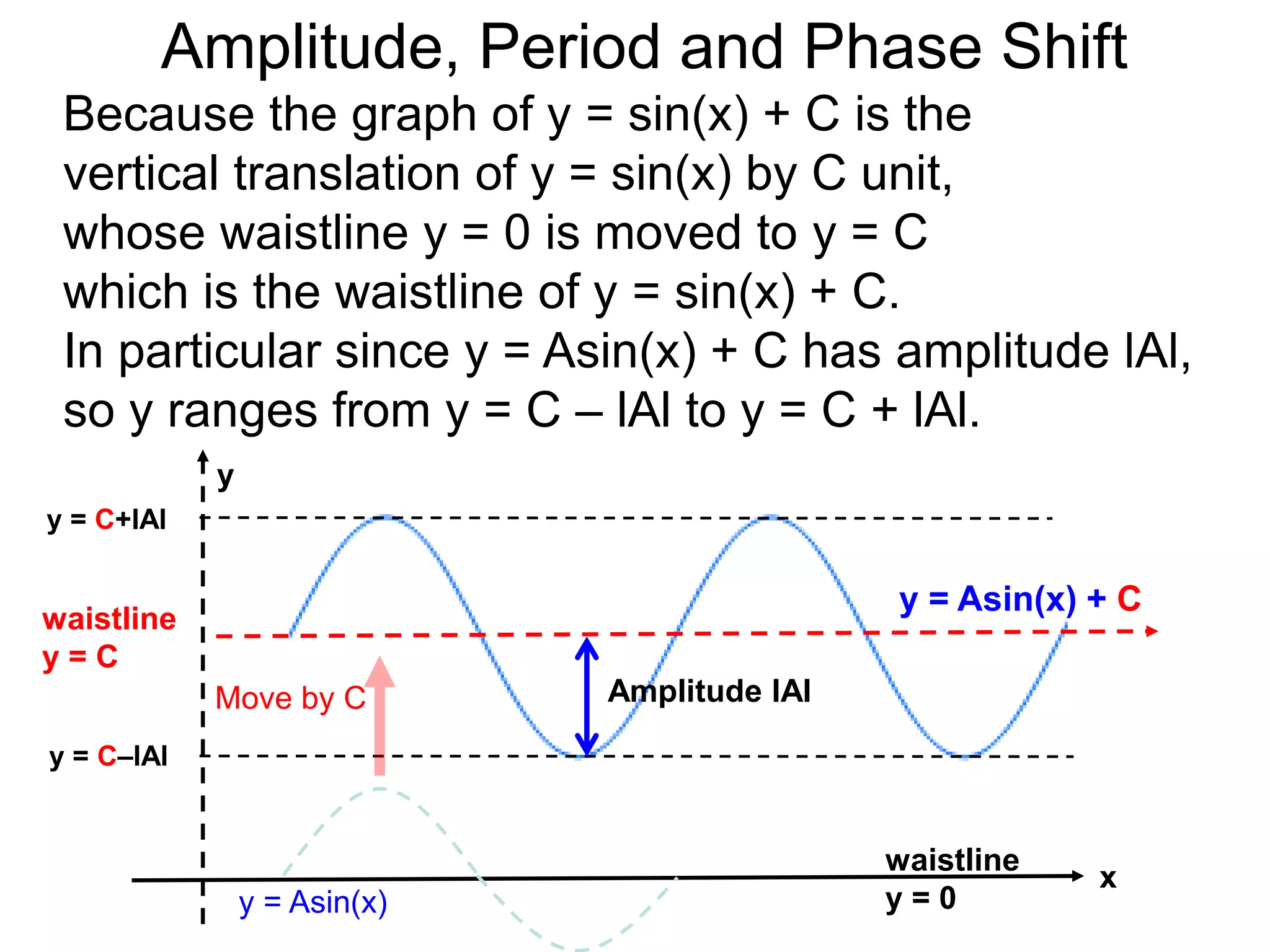
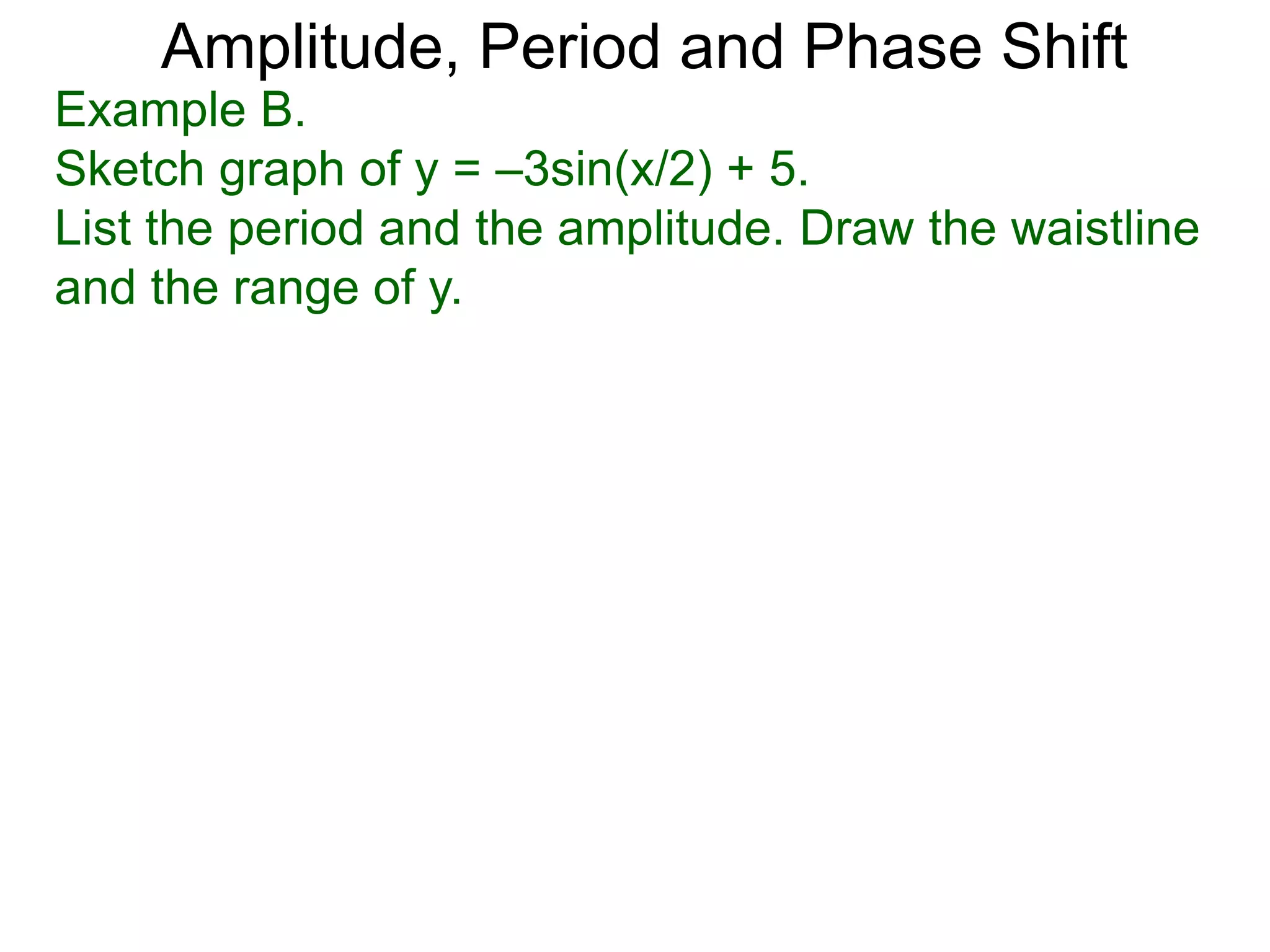
![The amplitude is 3 and the period is [1/(1/2)] 2π = 4π.
Amplitude, Period and Phase Shift
Example B.
Sketch graph of y = –3sin(x/2) + 5.
List the period and the amplitude. Draw the waistline
and the range of y.](https://image.slidesharecdn.com/11-200114043902/75/11-amplitude-phase-shift-and-period-of-trig-formulas-x-49-2048.jpg)
![The amplitude is 3 and the period is [1/(1/2)] 2π = 4π.
The waistline is y = 5, hence y ranges from 2 to 8.
Amplitude, Period and Phase Shift
Example B.
Sketch graph of y = –3sin(x/2) + 5.
List the period and the amplitude. Draw the waistline
and the range of y.](https://image.slidesharecdn.com/11-200114043902/75/11-amplitude-phase-shift-and-period-of-trig-formulas-x-50-2048.jpg)
![The amplitude is 3 and the period is [1/(1/2)] 2π = 4π.
The waistline is y = 5, hence y ranges from 2 to 8. To
sketch two periods of its graph, we start by drawing
two periods of the negative sine–wave
then label the above information as shown.
Amplitude, Period and Phase Shift
Example B.
Sketch graph of y = –3sin(x/2) + 5.
List the period and the amplitude. Draw the waistline
and the range of y.](https://image.slidesharecdn.com/11-200114043902/75/11-amplitude-phase-shift-and-period-of-trig-formulas-x-51-2048.jpg)
![The amplitude is 3 and the period is [1/(1/2)] 2π = 4π.
The waistline is y = 5, hence y ranges from 2 to 8. To
sketch two periods of its graph, we start by drawing
two periods of the negative sine–wave
then label the above information as shown.
y
Amplitude, Period and Phase Shift
Example B.
Sketch graph of y = –3sin(x/2) + 5.
List the period and the amplitude. Draw the waistline
and the range of y.](https://image.slidesharecdn.com/11-200114043902/75/11-amplitude-phase-shift-and-period-of-trig-formulas-x-52-2048.jpg)
![The amplitude is 3 and the period is [1/(1/2)] 2π = 4π.
The waistline is y = 5, hence y ranges from 2 to 8. To
sketch two periods of its graph, we start by drawing
two periods of the negative sine–wave
then label the above information as shown.
y = –3sin(x/2) + 5
y
y = 5
Amplitude, Period and Phase Shift
Example B.
Sketch graph of y = –3sin(x/2) + 5.
List the period and the amplitude. Draw the waistline
and the range of y.](https://image.slidesharecdn.com/11-200114043902/75/11-amplitude-phase-shift-and-period-of-trig-formulas-x-53-2048.jpg)
![The amplitude is 3 and the period is [1/(1/2)] 2π = 4π.
The waistline is y = 5, hence y ranges from 2 to 8. To
sketch two periods of its graph, we start by drawing
two periods of the negative sine–wave
then label the above information as shown.
y = –3sin(x/2) + 5
y
y = 5 Amplitude = 3
Amplitude, Period and Phase Shift
Example B.
Sketch graph of y = –3sin(x/2) + 5.
List the period and the amplitude. Draw the waistline
and the range of y.](https://image.slidesharecdn.com/11-200114043902/75/11-amplitude-phase-shift-and-period-of-trig-formulas-x-54-2048.jpg)
![The amplitude is 3 and the period is [1/(1/2)] 2π = 4π.
The waistline is y = 5, hence y ranges from 2 to 8. To
sketch two periods of its graph, we start by drawing
two periods of the negative sine–wave
then label the above information as shown.
2π 4π 6π 8π
y = –3sin(x/2) + 5
y
y = 5 Amplitude = 3
Amplitude, Period and Phase Shift
Example B.
Sketch graph of y = –3sin(x/2) + 5.
List the period and the amplitude. Draw the waistline
and the range of y.](https://image.slidesharecdn.com/11-200114043902/75/11-amplitude-phase-shift-and-period-of-trig-formulas-x-55-2048.jpg)
![Example B.
Sketch graph of y = –3sin(x/2) + 5.
List the period and the amplitude. Draw the waistline
and the range of y.
The amplitude is 3 and the period is [1/(1/2)] 2π = 4π.
The waistline is y = 5, hence y ranges from 2 to 8. To
sketch two periods of its graph, we start by drawing
two periods of the negative sine–wave
then label the above information as shown.
y = 5
y = 8
y = 2
2π 4π 6π 8π
y = –3sin(x/2) + 5
y
Amplitude = 3
Amplitude, Period and Phase Shift](https://image.slidesharecdn.com/11-200114043902/75/11-amplitude-phase-shift-and-period-of-trig-formulas-x-56-2048.jpg)
